Shows
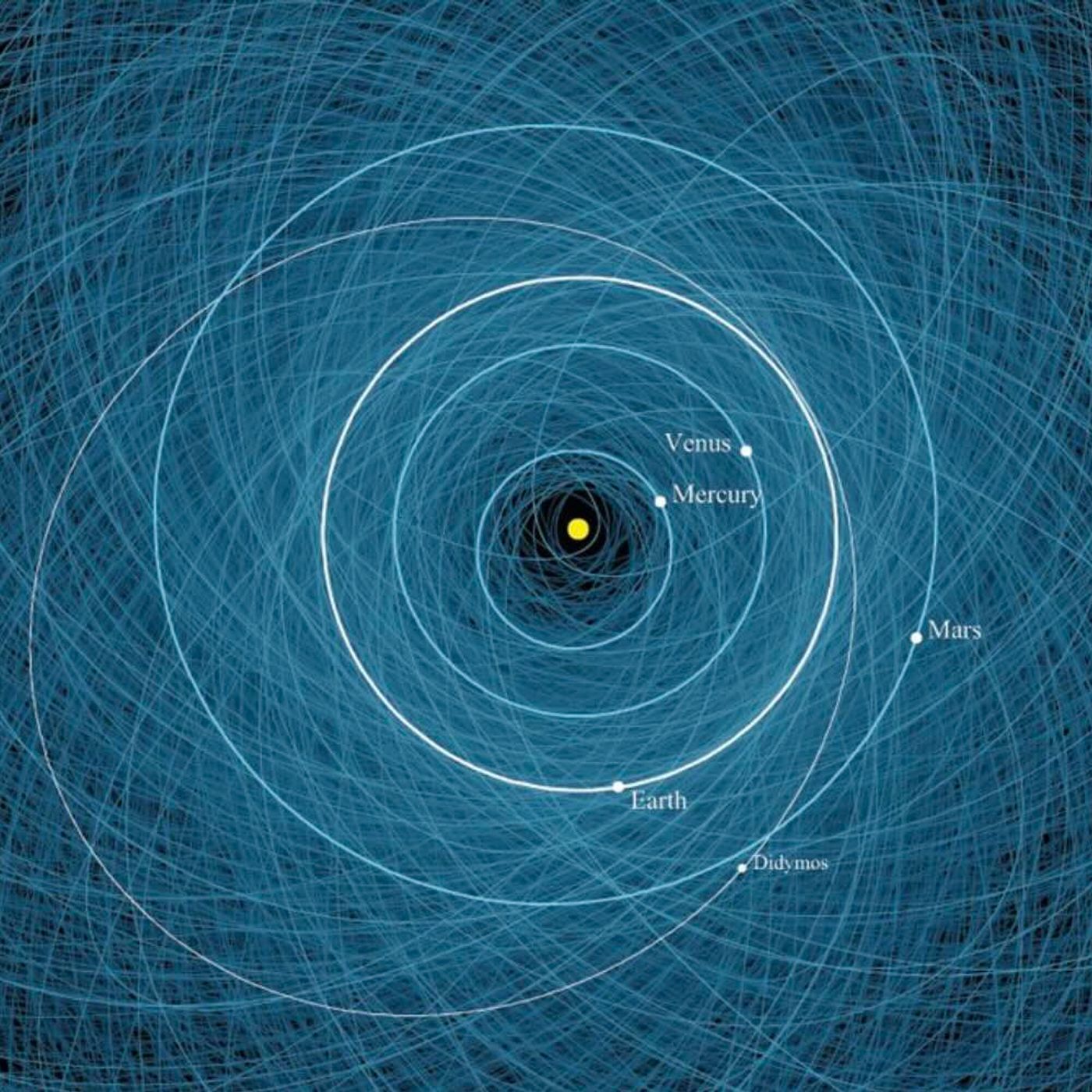 Travelers In The Night325E-344-GnatsNear Earth Asteroids or NEAs which are accessible are those objects whose orbits bring them close to Earth at speeds which are reachable by our rockets. They are potential space mission targets for science as well as for asteroid mining to obtain the raw materials necessary for humans to colonize space.2025-02-2502 min
Travelers In The Night325E-344-GnatsNear Earth Asteroids or NEAs which are accessible are those objects whose orbits bring them close to Earth at speeds which are reachable by our rockets. They are potential space mission targets for science as well as for asteroid mining to obtain the raw materials necessary for humans to colonize space.2025-02-2502 min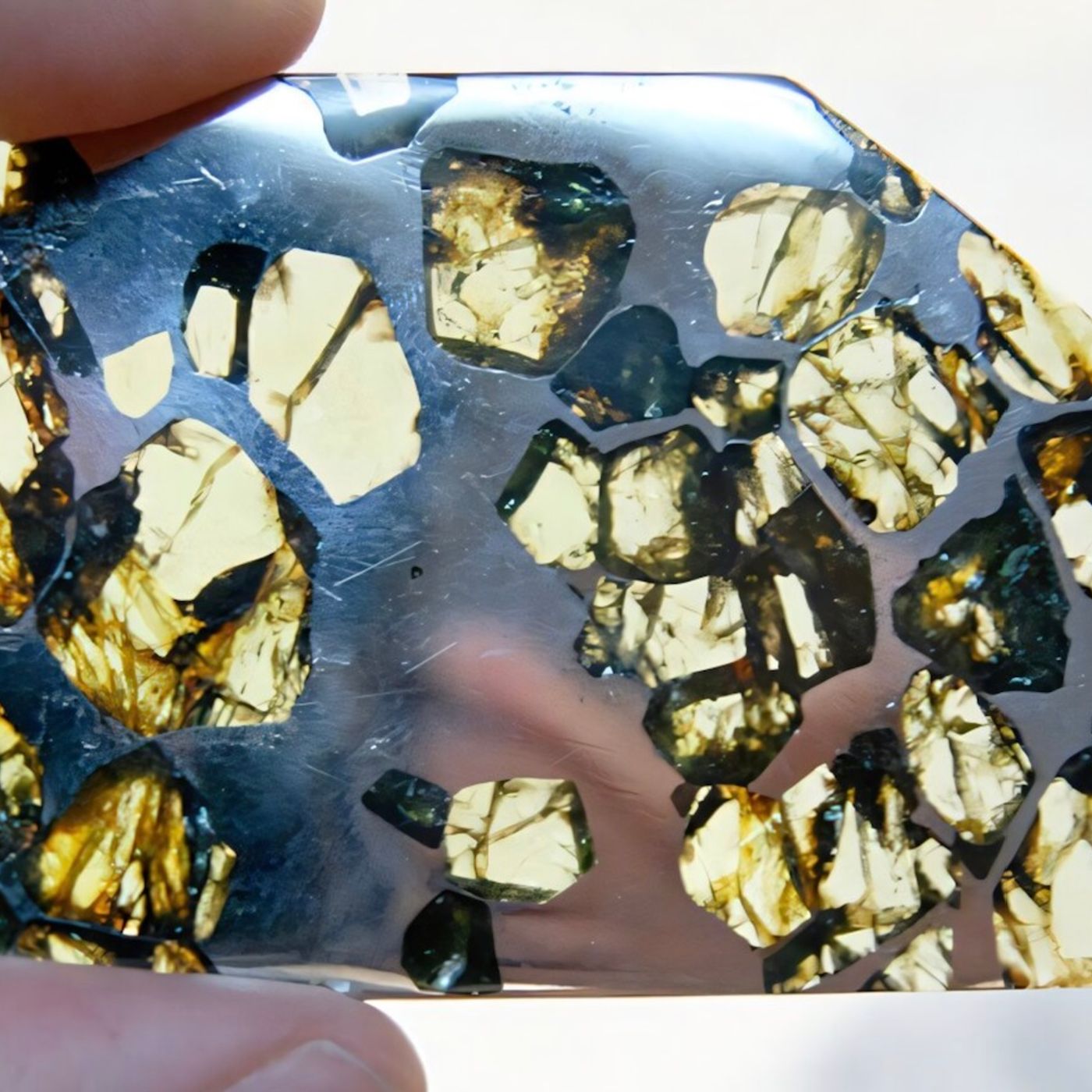 Travelers In The Night837-Weird Extraterrestrial LifeWe will continue to search for life as we know it by studying the chemistry of the atmospheres of extraterrestrial planets and trying to detect signals from alien civilizations while being aware that alien life could be so weird that it is unrecognizable2025-02-2102 min
Travelers In The Night837-Weird Extraterrestrial LifeWe will continue to search for life as we know it by studying the chemistry of the atmospheres of extraterrestrial planets and trying to detect signals from alien civilizations while being aware that alien life could be so weird that it is unrecognizable2025-02-2102 min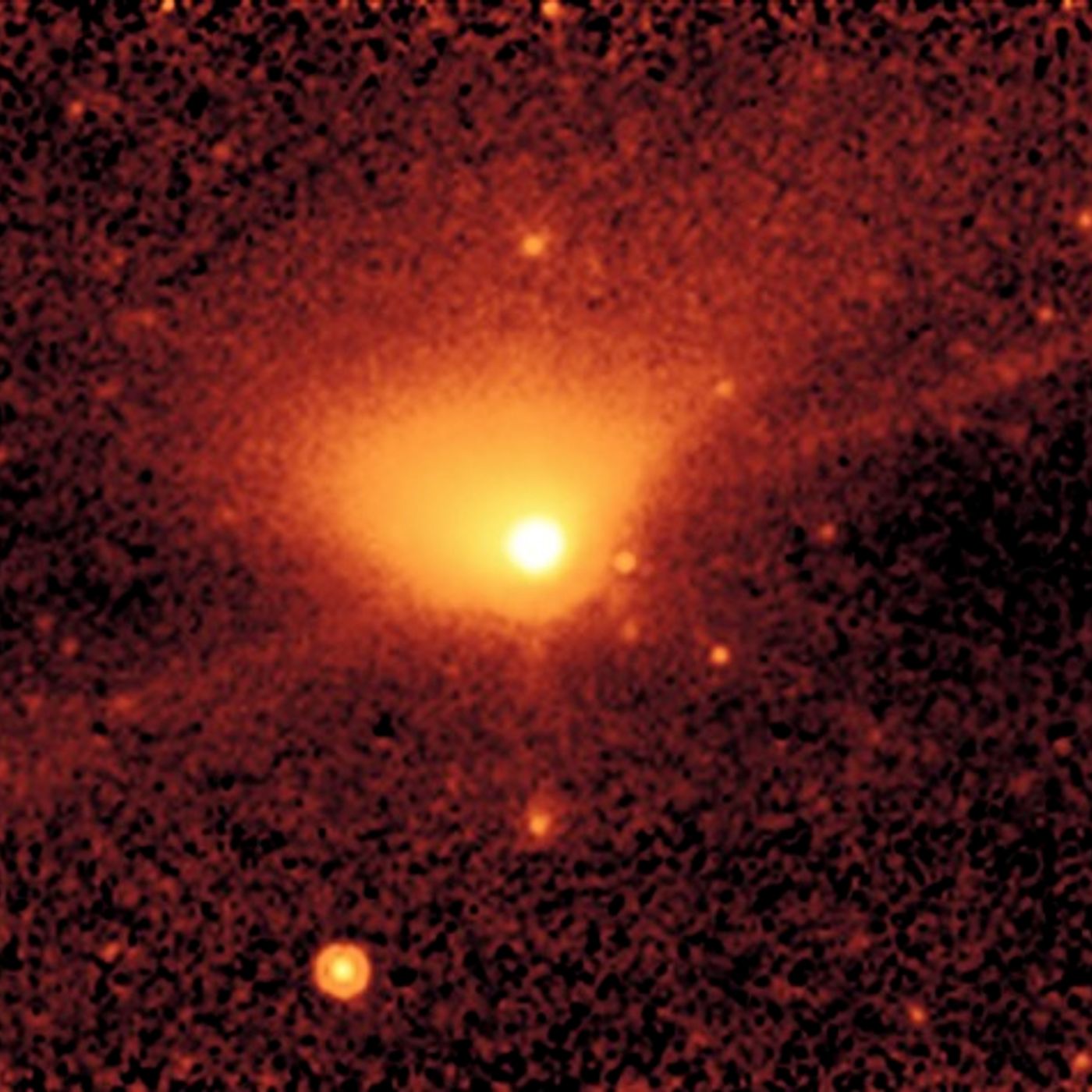 Travelers In The Night836-Jacqui's CometMy Catalina Sky Survey teammate Jacqueline Fazekas was asteroid hunting with our 60 inch telescope on Mt. Lemmon, Arizona when she spotted a glowing patch of light moving through the constellation of Cancer.By discovering her first comet Jacqui became the 483 person to discover a comet since 1758 when Charles Messier created a catalogue of diffuse objects to help fellow comet enthusiasts not be fooled by gas clouds and galaxies in their search for a new comet.2025-02-1402 min
Travelers In The Night836-Jacqui's CometMy Catalina Sky Survey teammate Jacqueline Fazekas was asteroid hunting with our 60 inch telescope on Mt. Lemmon, Arizona when she spotted a glowing patch of light moving through the constellation of Cancer.By discovering her first comet Jacqui became the 483 person to discover a comet since 1758 when Charles Messier created a catalogue of diffuse objects to help fellow comet enthusiasts not be fooled by gas clouds and galaxies in their search for a new comet.2025-02-1402 min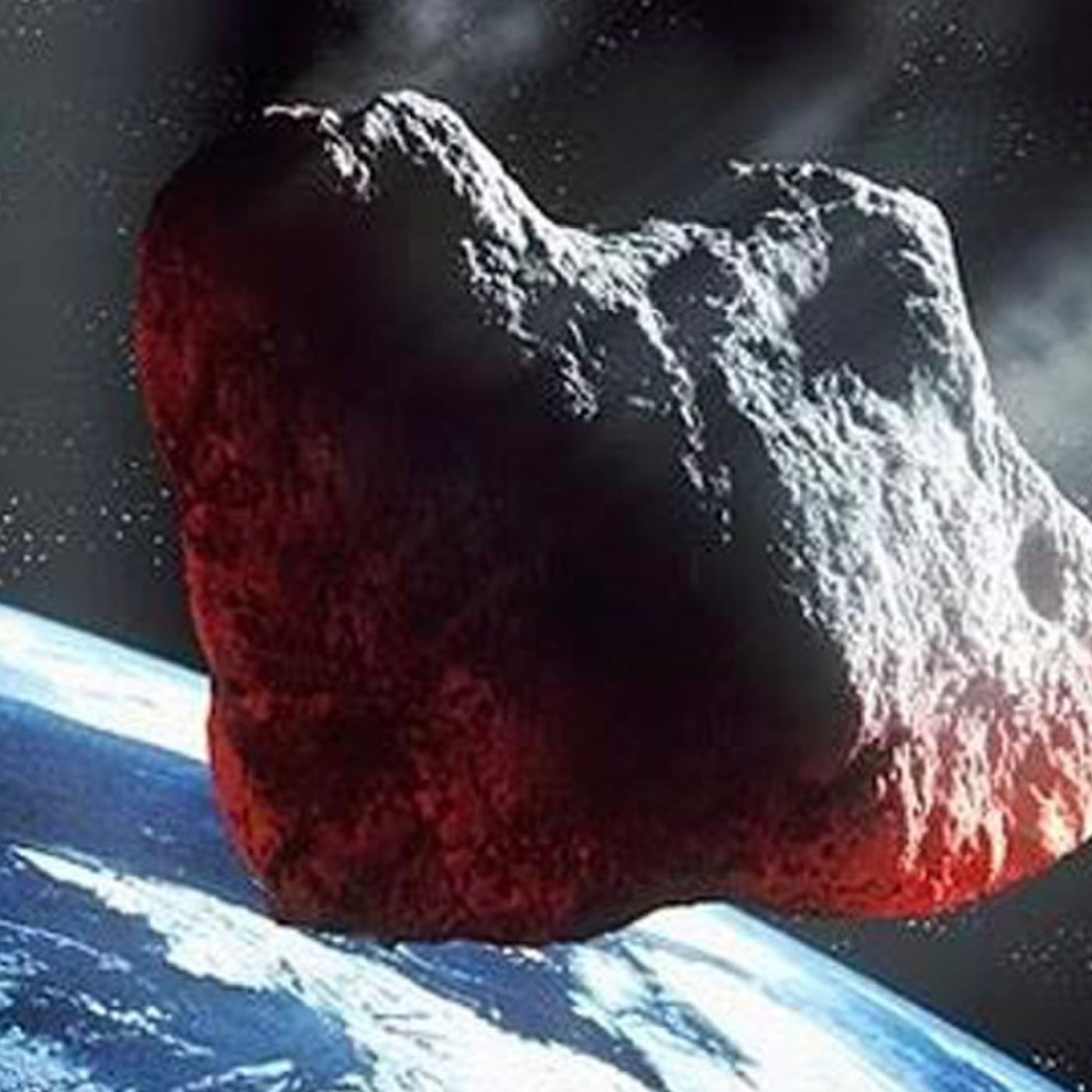 Travelers In The Night323E-342-That's CloseMy Catalina Sky Survey teammate Greg Leonard discovered an asteroid, 2017 EA, which is so tiny that it could pass under a basketball hoop. It missed exploding in our atmosphere by only about 9,000 miles as it streaked between the communications satellites and the surface of our planet high above the eastern pacific ocean. After Greg discovered it, this small celestial visitor was tracked by telescopes in Arizona, New Zealand, and New Mexico before it disappeared into the Earth's shadow. When this tiny space rock emerged from our planet's shadow it was too close to the Sun for further observations by ground...2025-02-1102 min
Travelers In The Night323E-342-That's CloseMy Catalina Sky Survey teammate Greg Leonard discovered an asteroid, 2017 EA, which is so tiny that it could pass under a basketball hoop. It missed exploding in our atmosphere by only about 9,000 miles as it streaked between the communications satellites and the surface of our planet high above the eastern pacific ocean. After Greg discovered it, this small celestial visitor was tracked by telescopes in Arizona, New Zealand, and New Mexico before it disappeared into the Earth's shadow. When this tiny space rock emerged from our planet's shadow it was too close to the Sun for further observations by ground...2025-02-1102 min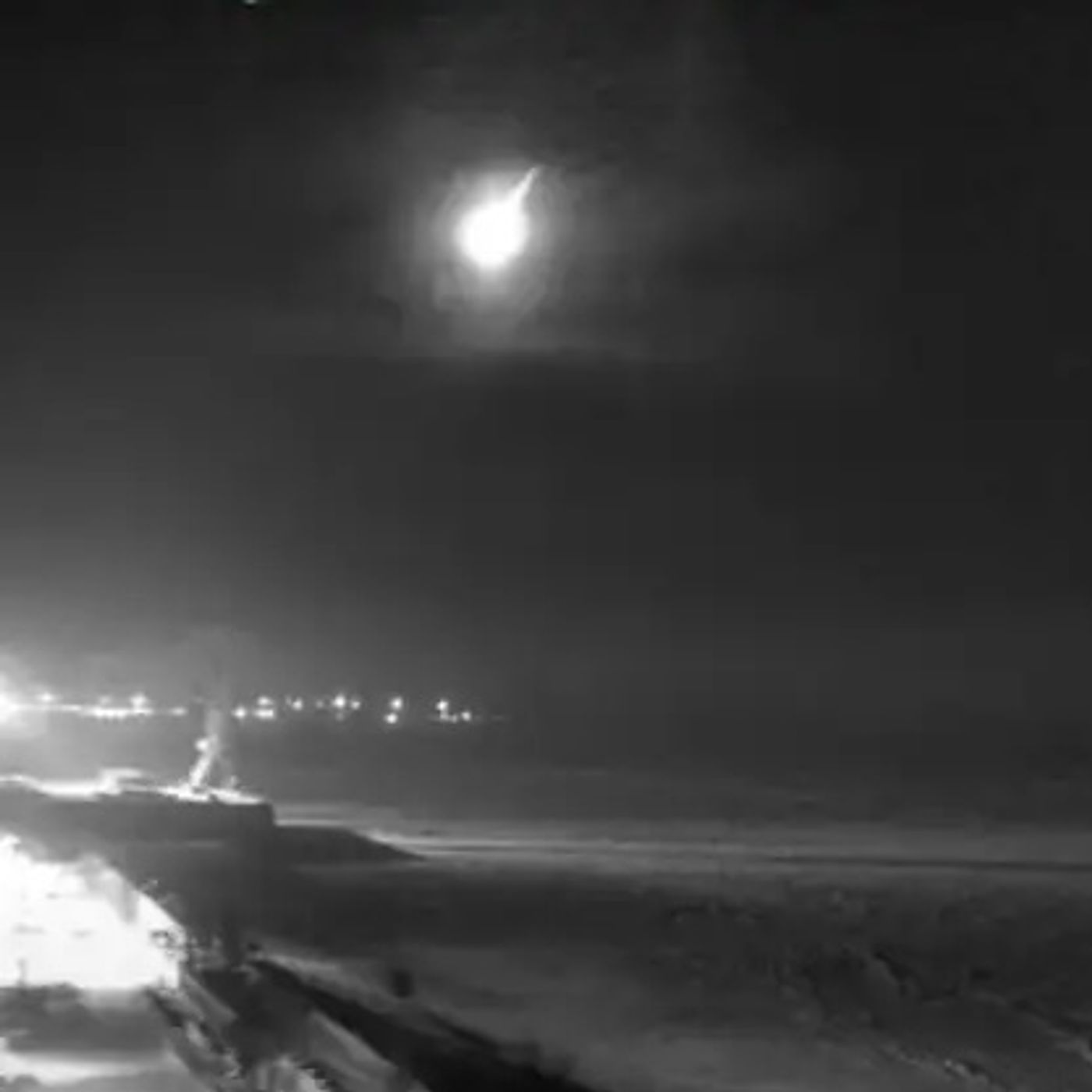 Travelers In The Night835-Bok ImpactorMy Catalina Sky Survey teammate Vivian Carvajal was asteroid hunting in the constellation of Aries with the Steward Observatory 90 inch Bok telescope on Kitt Peak, Arizona when she spotted a fast moving point of light in a set of her images. Nearly 10 hours later it entered the Earth’s atmosphere over Eastern Siberia north of Olekminsk2025-02-0702 min
Travelers In The Night835-Bok ImpactorMy Catalina Sky Survey teammate Vivian Carvajal was asteroid hunting in the constellation of Aries with the Steward Observatory 90 inch Bok telescope on Kitt Peak, Arizona when she spotted a fast moving point of light in a set of her images. Nearly 10 hours later it entered the Earth’s atmosphere over Eastern Siberia north of Olekminsk2025-02-0702 min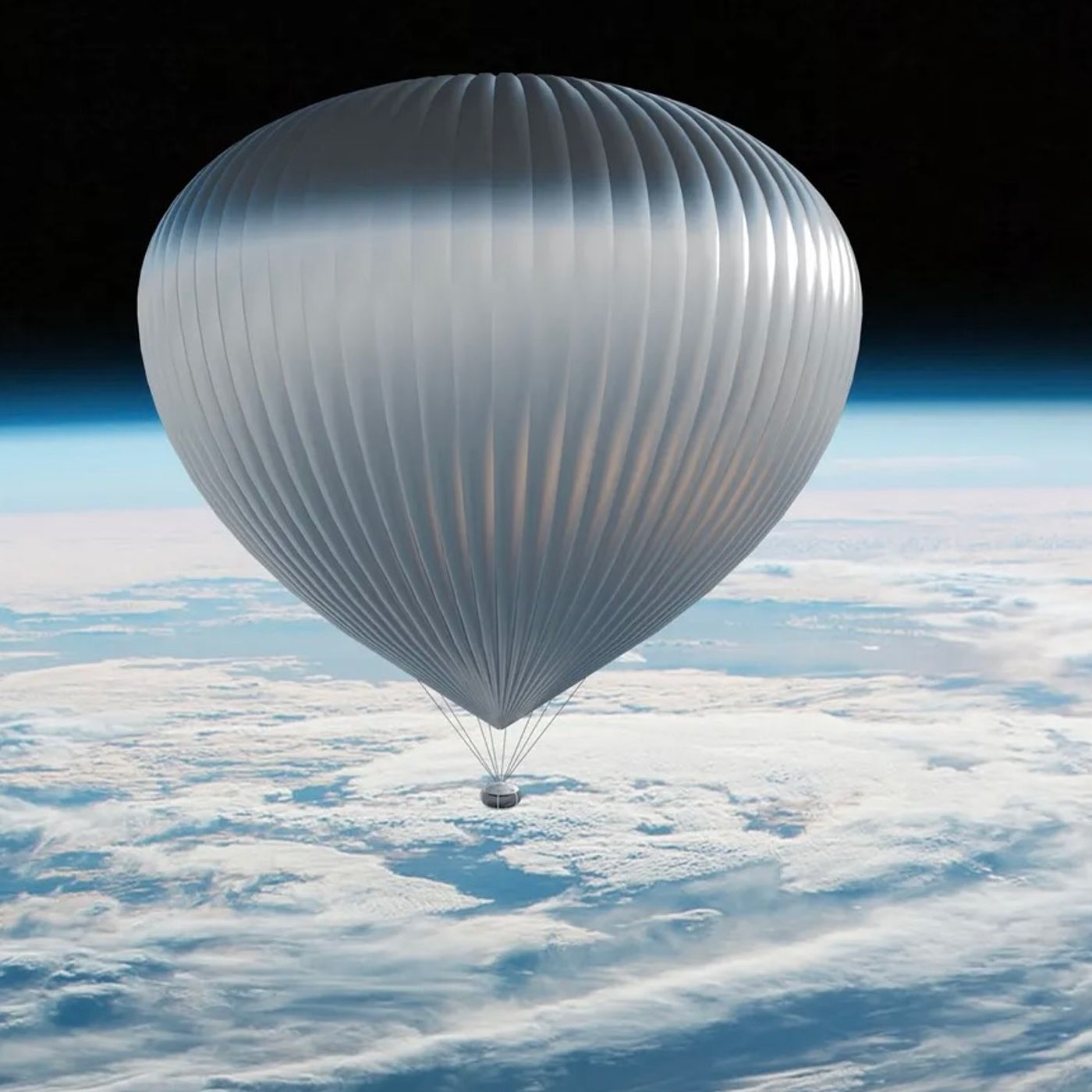 Travelers In The Night322E-341-Ballooning to SpaceTo travel to the edge of space you can strap yourself into a capsule and ride atop of a carefully controlled explosion or you can enter a crew capsule and be gently lifted by a balloon into the stratosphere. Unlike a suborbital rocket flight lasting for a few minutes a ride under a balloon can give you several hours to enjoy the wonders of the Earth and its curvature against the back drop of space. Tucson based World View Enterprises is on track to take you on such a balloon ride to the edge of space for the price of...2025-02-0402 min
Travelers In The Night322E-341-Ballooning to SpaceTo travel to the edge of space you can strap yourself into a capsule and ride atop of a carefully controlled explosion or you can enter a crew capsule and be gently lifted by a balloon into the stratosphere. Unlike a suborbital rocket flight lasting for a few minutes a ride under a balloon can give you several hours to enjoy the wonders of the Earth and its curvature against the back drop of space. Tucson based World View Enterprises is on track to take you on such a balloon ride to the edge of space for the price of...2025-02-0402 min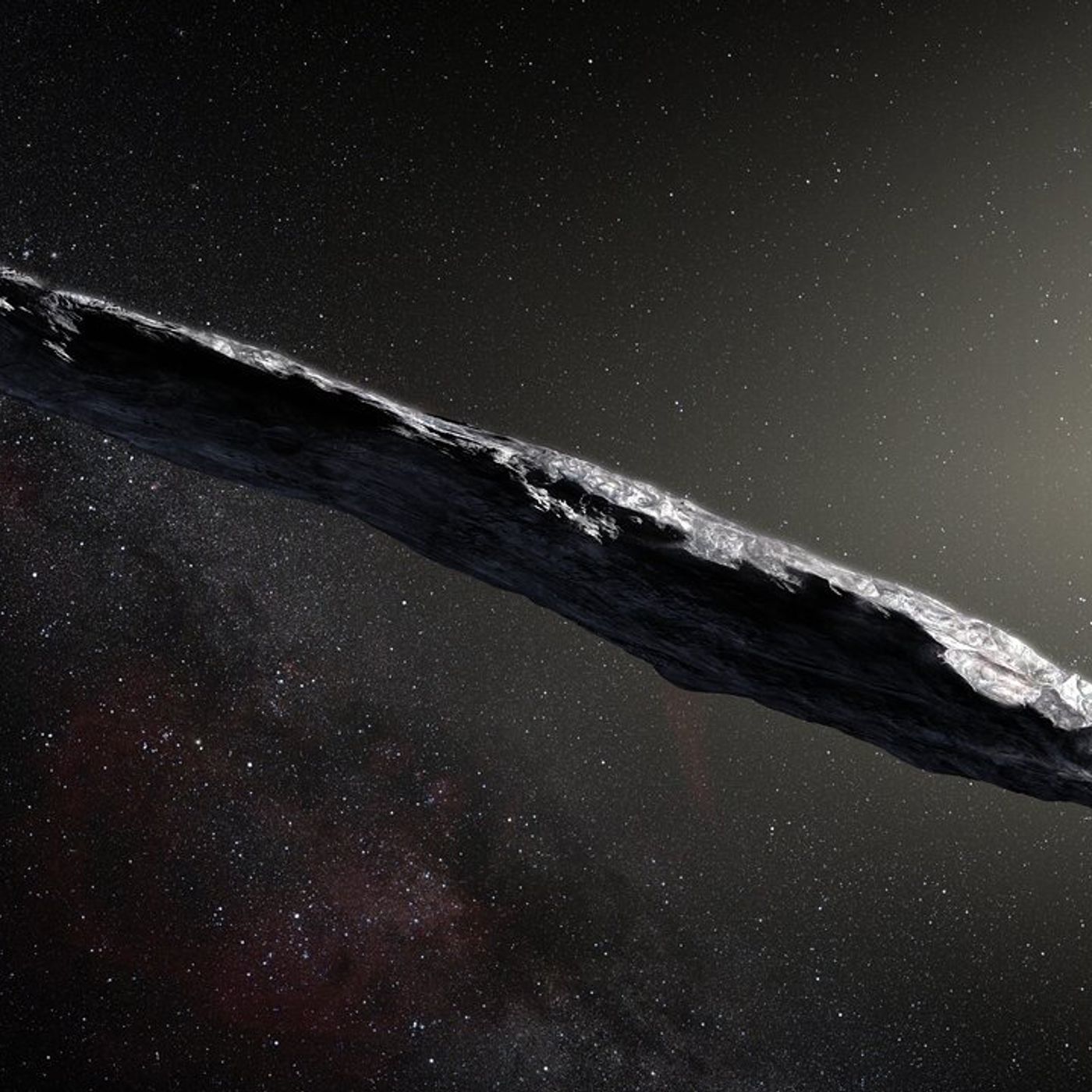 Travelers In The Night834-Dark CometsFrom our vantage point on planet Earth asteroids appear as moving points of light which strictly follow the law of gravity as they orbit the Sun. On the other hand comets appear as gas clouds which sometimes deviate from their gravitational orbits when they burp bursts of gases as they are warmed by the Sun. Dark comets appear as points of light like asteroids but move through space as though they are influenced by small rocket like bursts of volatile materials in cometary fashion.2025-01-3102 min
Travelers In The Night834-Dark CometsFrom our vantage point on planet Earth asteroids appear as moving points of light which strictly follow the law of gravity as they orbit the Sun. On the other hand comets appear as gas clouds which sometimes deviate from their gravitational orbits when they burp bursts of gases as they are warmed by the Sun. Dark comets appear as points of light like asteroids but move through space as though they are influenced by small rocket like bursts of volatile materials in cometary fashion.2025-01-3102 min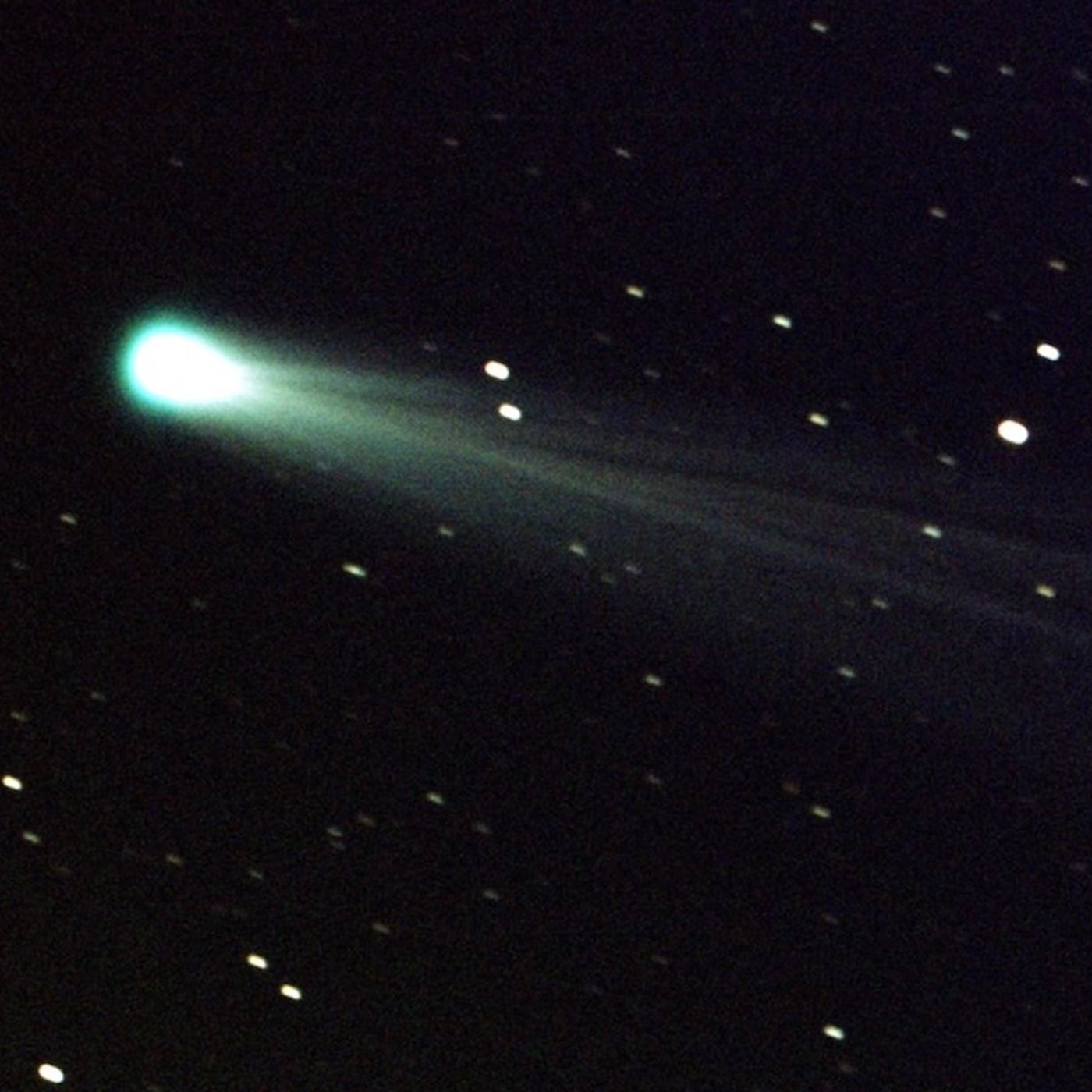 Travelers In The Night321E-340-Carson's CometMy team was excited when our Catalina Sky Survey teammate Carson Fuls discovered his first comet, C/2017 D1 (Fuls), when it was traveling between the orbits of Mars and Jupiter about 257 million miles from Earth. It is classified as a Jupiter Family Comet and orbits the Sun once every ten and a half years on a path that keeps it hundreds of million miles from both the Earth and Sun. It is likely that Carson's comet originally had an orbit out in the Kuiper belt far beyond Pluto.Comet Fuls was directed into our vicinity when its original path was...2025-01-2802 min
Travelers In The Night321E-340-Carson's CometMy team was excited when our Catalina Sky Survey teammate Carson Fuls discovered his first comet, C/2017 D1 (Fuls), when it was traveling between the orbits of Mars and Jupiter about 257 million miles from Earth. It is classified as a Jupiter Family Comet and orbits the Sun once every ten and a half years on a path that keeps it hundreds of million miles from both the Earth and Sun. It is likely that Carson's comet originally had an orbit out in the Kuiper belt far beyond Pluto.Comet Fuls was directed into our vicinity when its original path was...2025-01-2802 min Travelers In The Night833-Will Asteroid Mining Payoff?In the journal Planetary and Space Science Dr. Kevin Cannon and his two coauthors analyze the potential of asteroid mining as a source of metals for manufacturing here on Earth as well as a repository of raw materials for space colonists.These authors find there are less precious metals in iron meteorites than was previous estimated. However there are a small number of precious metals whose concentration in asteroids is higher than any ores found on Earth. In the future Earthlings may be wearing jewelry made from asteroidal metals.2025-01-2402 min
Travelers In The Night833-Will Asteroid Mining Payoff?In the journal Planetary and Space Science Dr. Kevin Cannon and his two coauthors analyze the potential of asteroid mining as a source of metals for manufacturing here on Earth as well as a repository of raw materials for space colonists.These authors find there are less precious metals in iron meteorites than was previous estimated. However there are a small number of precious metals whose concentration in asteroids is higher than any ores found on Earth. In the future Earthlings may be wearing jewelry made from asteroidal metals.2025-01-2402 min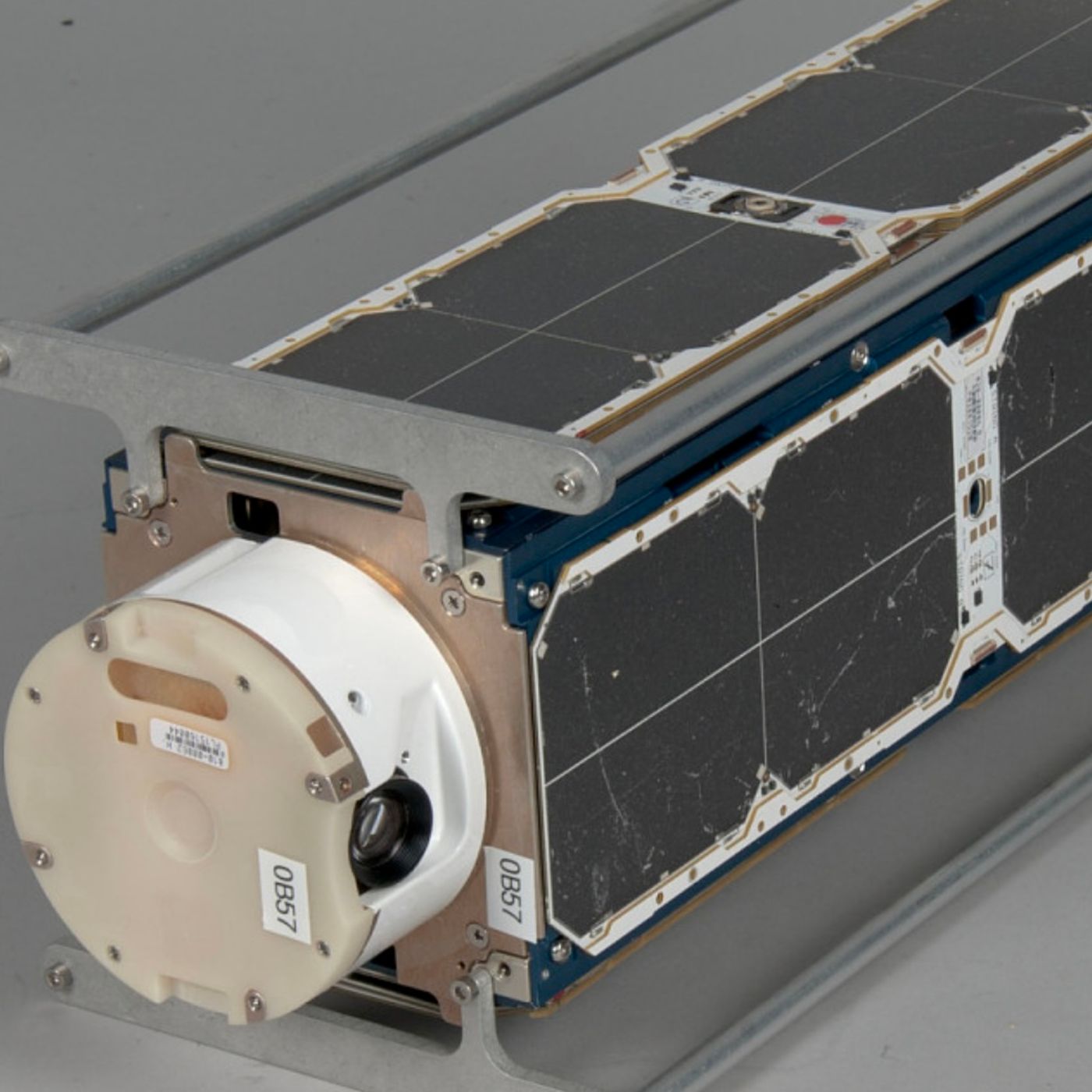 Travelers In The Night320E-339-No Need To SmileThe company Planet's, Dove satellites may not be spot you looking up, smiling, and waving when you are in the great outdoors but they could detect a car in your driveway.2025-01-2102 min
Travelers In The Night320E-339-No Need To SmileThe company Planet's, Dove satellites may not be spot you looking up, smiling, and waving when you are in the great outdoors but they could detect a car in your driveway.2025-01-2102 min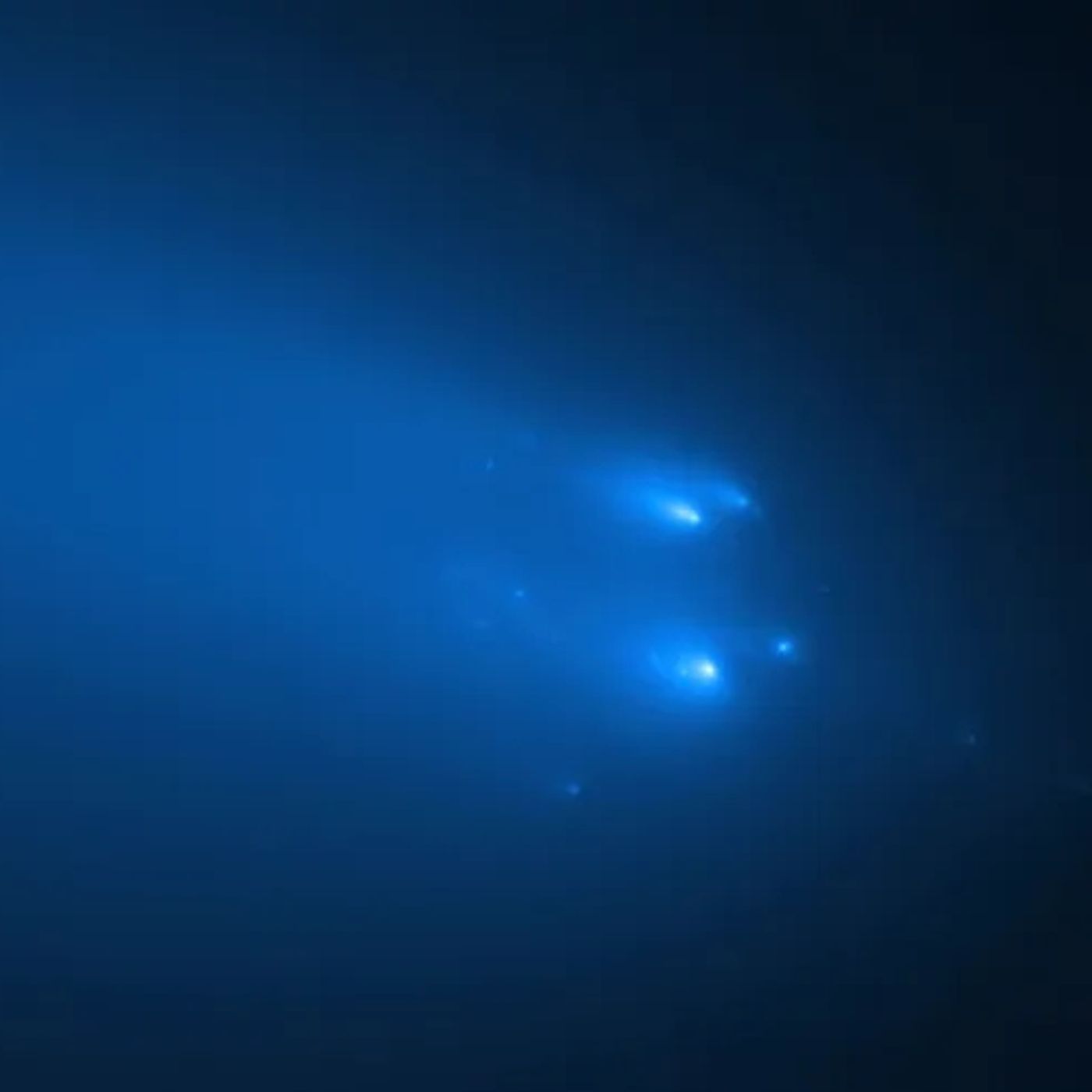 Travelers In The Night832-Backyard CometMy Catalina Sky Survey teammate David Rankin has discovered 13 comets using our team’s professional telescopes. Recently he discovered a 14th comet as an amateur using a small, 11 inch telescope in his backyard Saguaro Observatory in Tucson, AZ.2025-01-1702 min
Travelers In The Night832-Backyard CometMy Catalina Sky Survey teammate David Rankin has discovered 13 comets using our team’s professional telescopes. Recently he discovered a 14th comet as an amateur using a small, 11 inch telescope in his backyard Saguaro Observatory in Tucson, AZ.2025-01-1702 min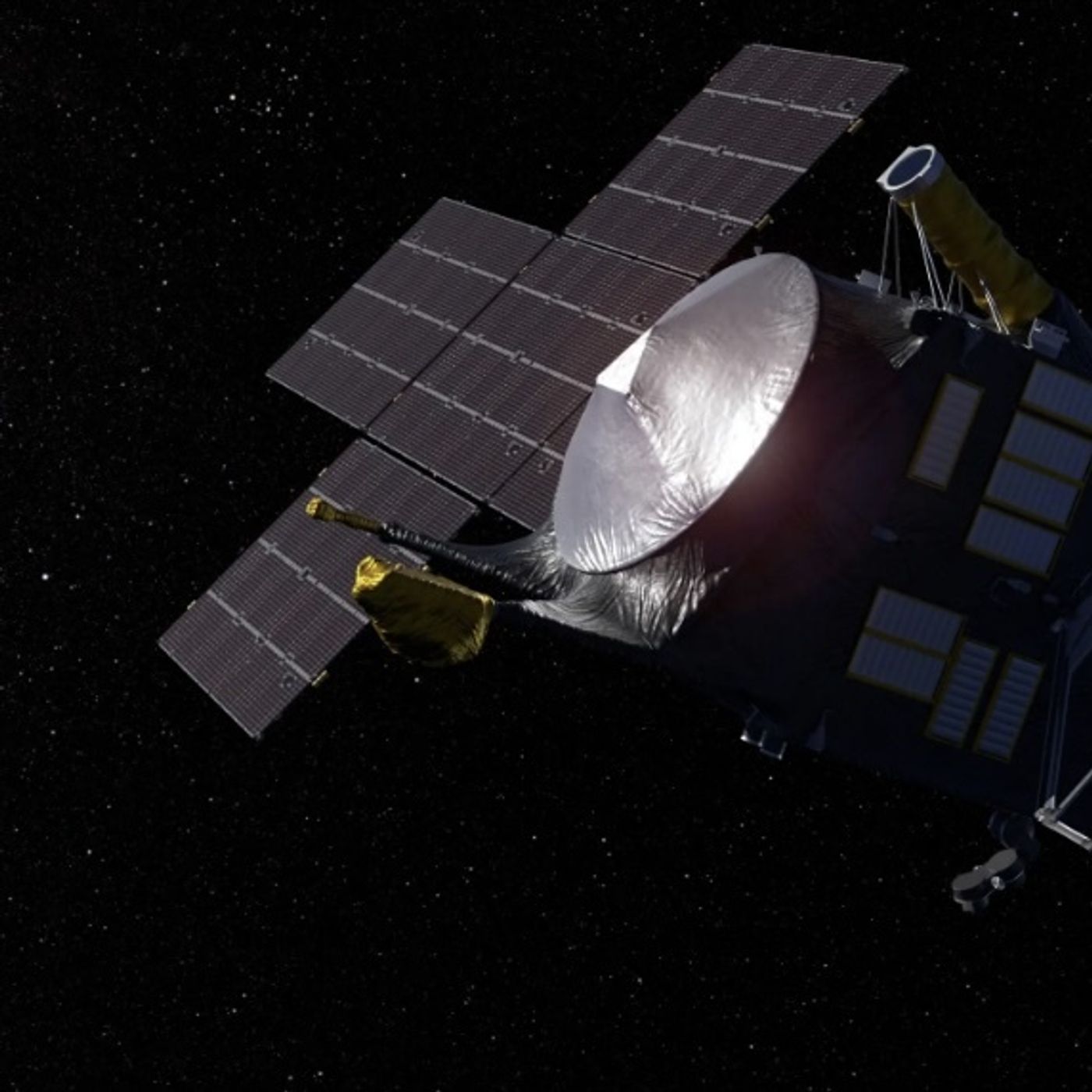 Travelers In The Night319E-338-Psyche BoundWhen the material came together to form our home planet, gravity was strong enough to pull the heavy materials like iron to the center, giving our planet an iron core. The vast majority of the hundreds of thousands of known asteroids and comets orbiting our Sun are made of mixtures of rocks and ices of various substances. They do not have enough gravity to cause heavy materials to move to their centers. From scientific measurements the asteroid Psyche appears to be composed almost entirely of iron, nickel, and possibly other valuable metals. Perhaps the Massachusetts sized, 130 mile diameter, asteroid Psyche...2025-01-1402 min
Travelers In The Night319E-338-Psyche BoundWhen the material came together to form our home planet, gravity was strong enough to pull the heavy materials like iron to the center, giving our planet an iron core. The vast majority of the hundreds of thousands of known asteroids and comets orbiting our Sun are made of mixtures of rocks and ices of various substances. They do not have enough gravity to cause heavy materials to move to their centers. From scientific measurements the asteroid Psyche appears to be composed almost entirely of iron, nickel, and possibly other valuable metals. Perhaps the Massachusetts sized, 130 mile diameter, asteroid Psyche...2025-01-1402 min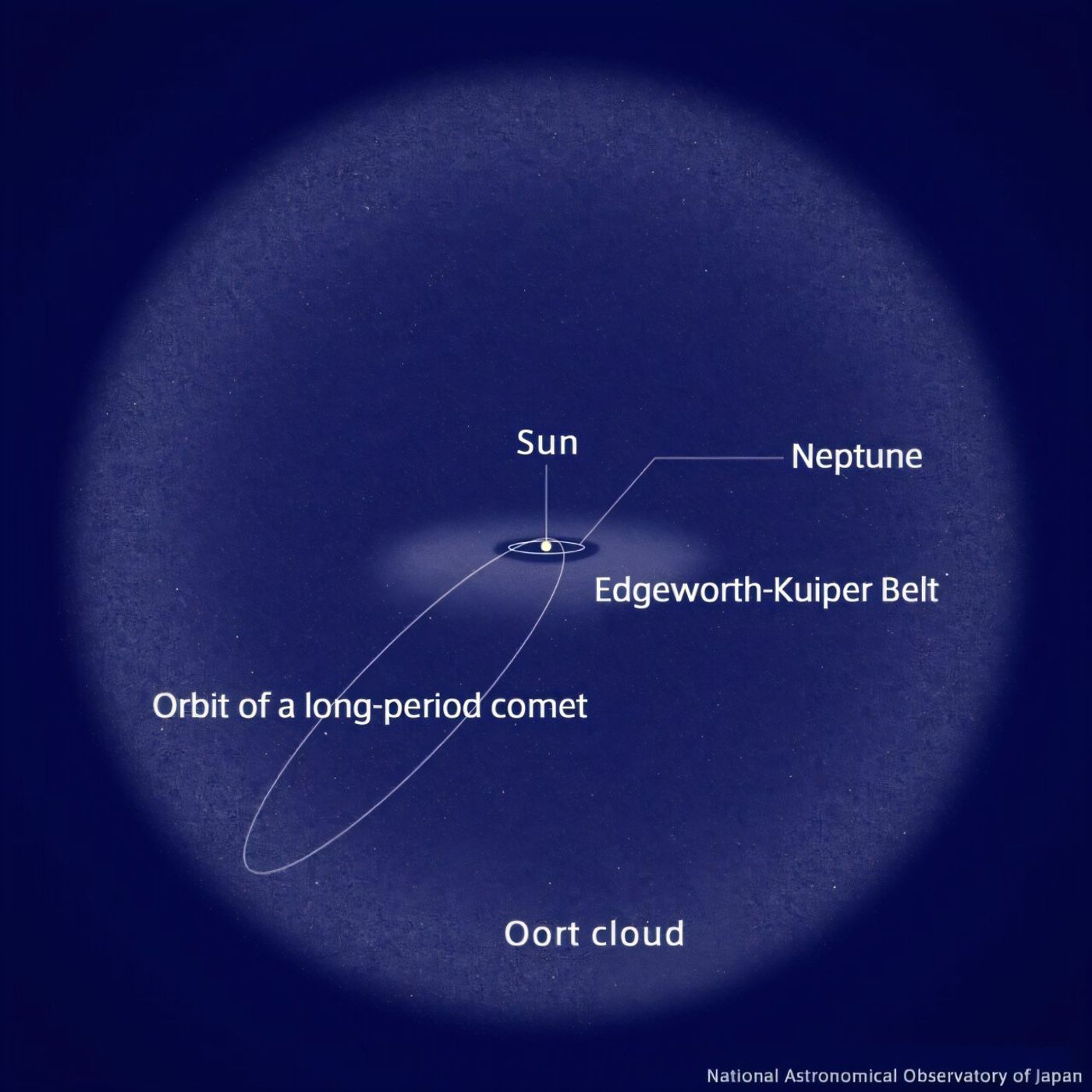 Travelers In The Night831-Finding Dangerous CometsMeteor shower data can provide an additional warning time for a potentially dangerous comet of from 1 to 12 years giving humans extra time to determine and carry out mitigation strategies.2025-01-1002 min
Travelers In The Night831-Finding Dangerous CometsMeteor shower data can provide an additional warning time for a potentially dangerous comet of from 1 to 12 years giving humans extra time to determine and carry out mitigation strategies.2025-01-1002 min Travelers In The Night318E-337-LucyJupiter's Trojan asteroids lead and follow the giant planet around the Sun occupying stable locations where Jupiter and the Sun's gravity balance each other. Humans have discovered only a tiny fraction of the million of them larger than one kilometer or about 3,300 feet in diameter that are suspected to exist. Upon NASA's selection of the Lucy mission, Dr. Harold Levison of the Southwest Research Institute in Boulder, Colorado commented “Because the Trojans are remnants of the primordial material that formed the outer planets, they hold vital clues to deciphering the history of the solar system. Lucy, like the human fossil fo...2025-01-0702 min
Travelers In The Night318E-337-LucyJupiter's Trojan asteroids lead and follow the giant planet around the Sun occupying stable locations where Jupiter and the Sun's gravity balance each other. Humans have discovered only a tiny fraction of the million of them larger than one kilometer or about 3,300 feet in diameter that are suspected to exist. Upon NASA's selection of the Lucy mission, Dr. Harold Levison of the Southwest Research Institute in Boulder, Colorado commented “Because the Trojans are remnants of the primordial material that formed the outer planets, they hold vital clues to deciphering the history of the solar system. Lucy, like the human fossil fo...2025-01-0702 min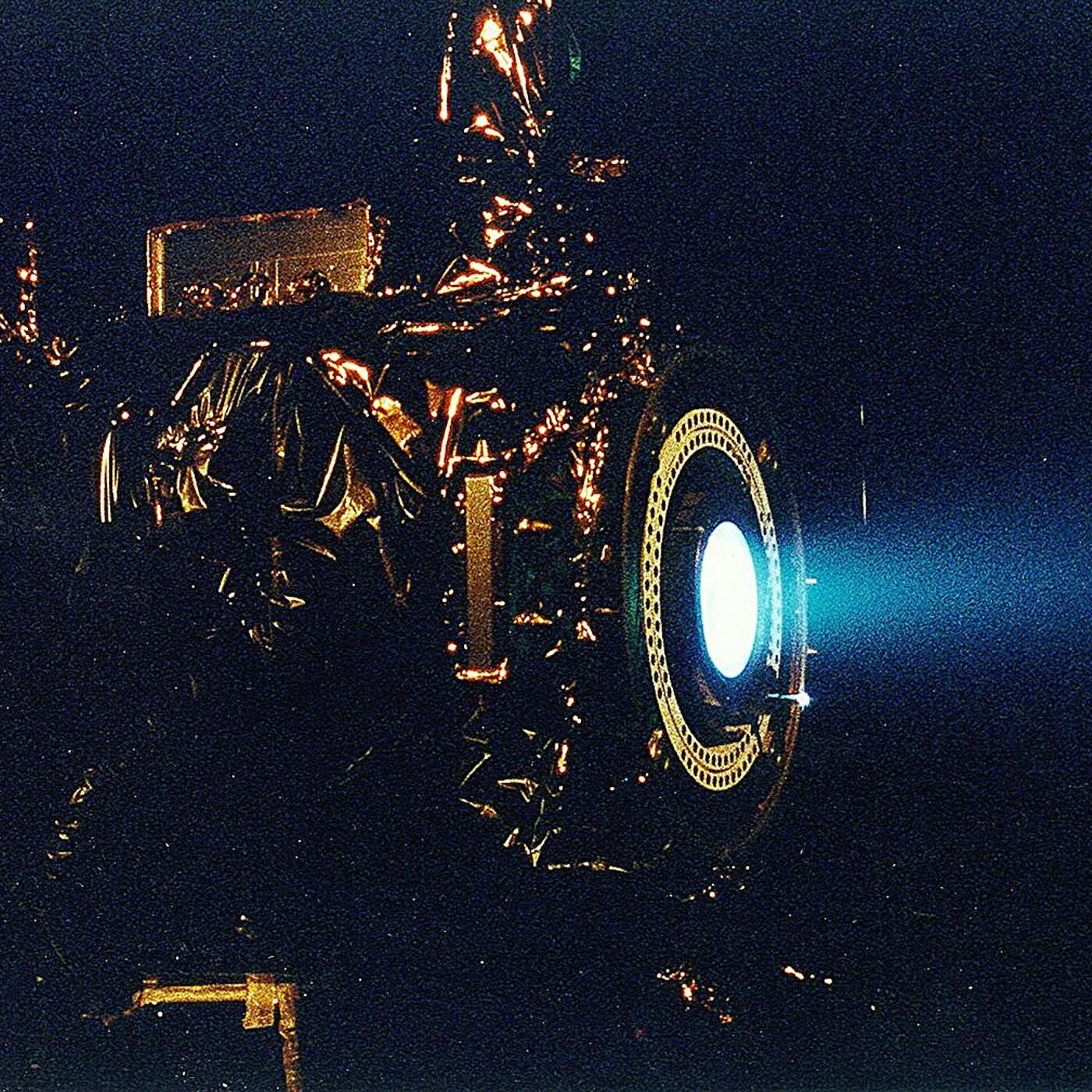 Travelers In The Night830-Imaging Alien WorldsThrough out history humans have dreamed about living creatures on planets orbiting distant stars. As technology has improved and our robotic missions have begun exploring our solar system in some detail the aspiration to learn about alien solar systems continues to build. At the focal point of the solar gravitational lens it is theoretically possible to image a planet orbiting a distant star to show its details as small as 20 miles in diameter. Such images could reveal oceans, land masses, clouds, and provide evidence that life is possible on an alien world.2025-01-0302 min
Travelers In The Night830-Imaging Alien WorldsThrough out history humans have dreamed about living creatures on planets orbiting distant stars. As technology has improved and our robotic missions have begun exploring our solar system in some detail the aspiration to learn about alien solar systems continues to build. At the focal point of the solar gravitational lens it is theoretically possible to image a planet orbiting a distant star to show its details as small as 20 miles in diameter. Such images could reveal oceans, land masses, clouds, and provide evidence that life is possible on an alien world.2025-01-0302 min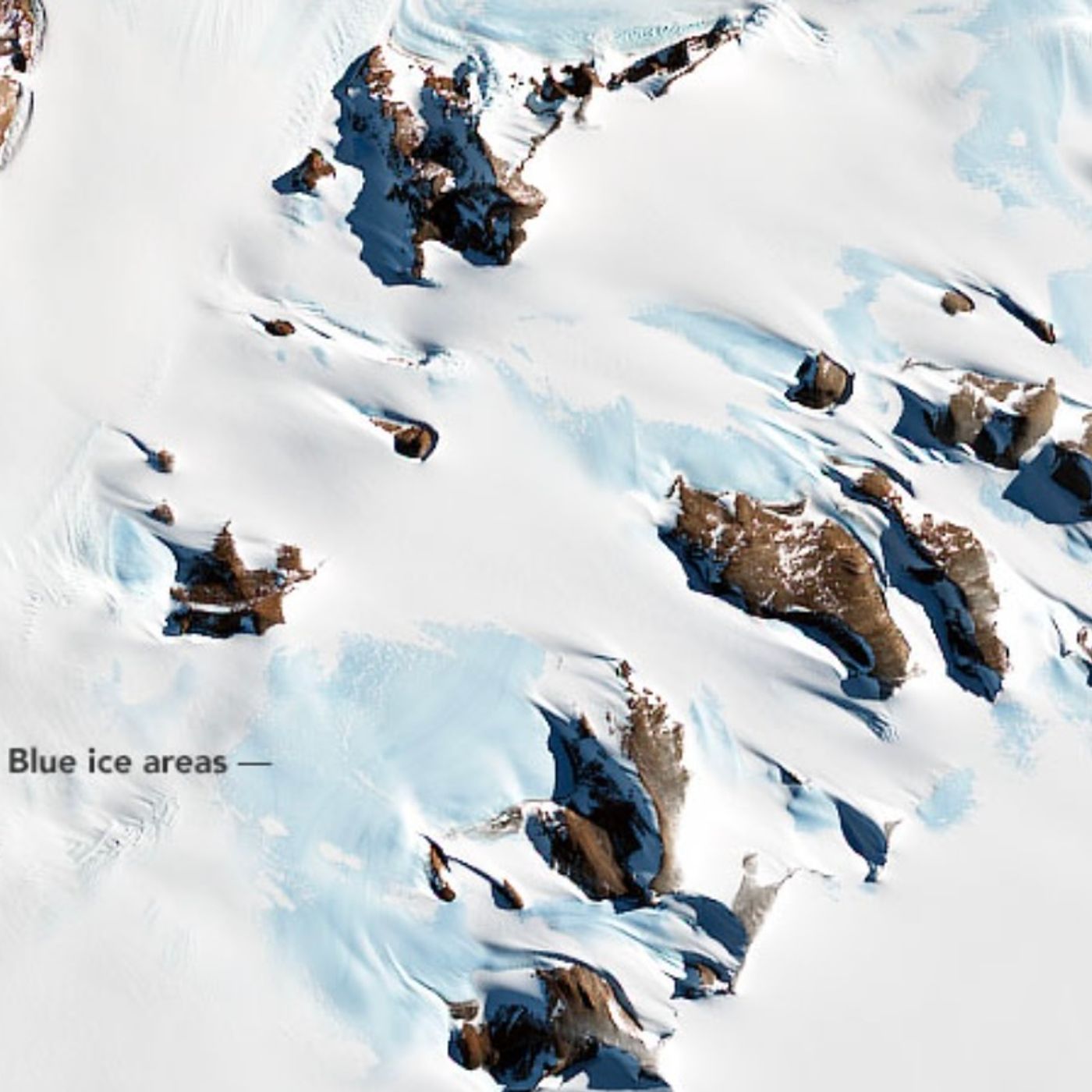 Travelers In The Night317E-336-Meteorite MysteryA research expedition to near the south pole is developing to investigate a meteorite mystery. Meteorites landing on the Antarctica ice sheet are slowly transported along by ice flows until they are dumped into the ocean or up against a mountain range. The concentration of meteorites into stranding zones on the lower slopes of mountain ranges has allowed humans to collect 2/3 of the meteorites discovered on Earth in Antartica. The fact that the percentage of iron meteorites found in these places in Antartica is 1/8 what are found elsewhere on Earth is puzzling.2024-12-3102 min
Travelers In The Night317E-336-Meteorite MysteryA research expedition to near the south pole is developing to investigate a meteorite mystery. Meteorites landing on the Antarctica ice sheet are slowly transported along by ice flows until they are dumped into the ocean or up against a mountain range. The concentration of meteorites into stranding zones on the lower slopes of mountain ranges has allowed humans to collect 2/3 of the meteorites discovered on Earth in Antartica. The fact that the percentage of iron meteorites found in these places in Antartica is 1/8 what are found elsewhere on Earth is puzzling.2024-12-3102 min Travelers In The Night829-Space Weather and National SecurityThe Sun emits a solar wind of charged particles reaching speeds of more than a million miles per hour, bursts of energetic ultraviolet photons, huge blobs of ionized gas called coronal mass ejections and other phenomena which effect the near Earth environment. A team of scientists present a comprehensive network of ground based instruments and analysis tools called the Chinese Meridian Project. This research project has been established to provide stereoscopic, comprehensive, monitoring of space weather from the Sun to the near Earth environment. Although the authors state its results will be shared with the international community such knowledge will...2024-12-2702 min
Travelers In The Night829-Space Weather and National SecurityThe Sun emits a solar wind of charged particles reaching speeds of more than a million miles per hour, bursts of energetic ultraviolet photons, huge blobs of ionized gas called coronal mass ejections and other phenomena which effect the near Earth environment. A team of scientists present a comprehensive network of ground based instruments and analysis tools called the Chinese Meridian Project. This research project has been established to provide stereoscopic, comprehensive, monitoring of space weather from the Sun to the near Earth environment. Although the authors state its results will be shared with the international community such knowledge will...2024-12-2702 min Travelers In The Night316E-335-DARTA stony asteroid 130m or about 430 feet in diameter has a mass of 3 billion Kg or 6.5 billion pounds. Such an object is likely to strike the Earth every 11,000 years or so creating a crater a mile in diameter crater and inflicting damage over a hurricane sized footprint on the surface of our planet. If one like this were found to be heading straight for us deflecting it would take some ingenuity. The key is early discovery so that perhaps a gentle nudge would do the trick. How do do we test such an idea before we are in a situation...2024-12-2402 min
Travelers In The Night316E-335-DARTA stony asteroid 130m or about 430 feet in diameter has a mass of 3 billion Kg or 6.5 billion pounds. Such an object is likely to strike the Earth every 11,000 years or so creating a crater a mile in diameter crater and inflicting damage over a hurricane sized footprint on the surface of our planet. If one like this were found to be heading straight for us deflecting it would take some ingenuity. The key is early discovery so that perhaps a gentle nudge would do the trick. How do do we test such an idea before we are in a situation...2024-12-2402 min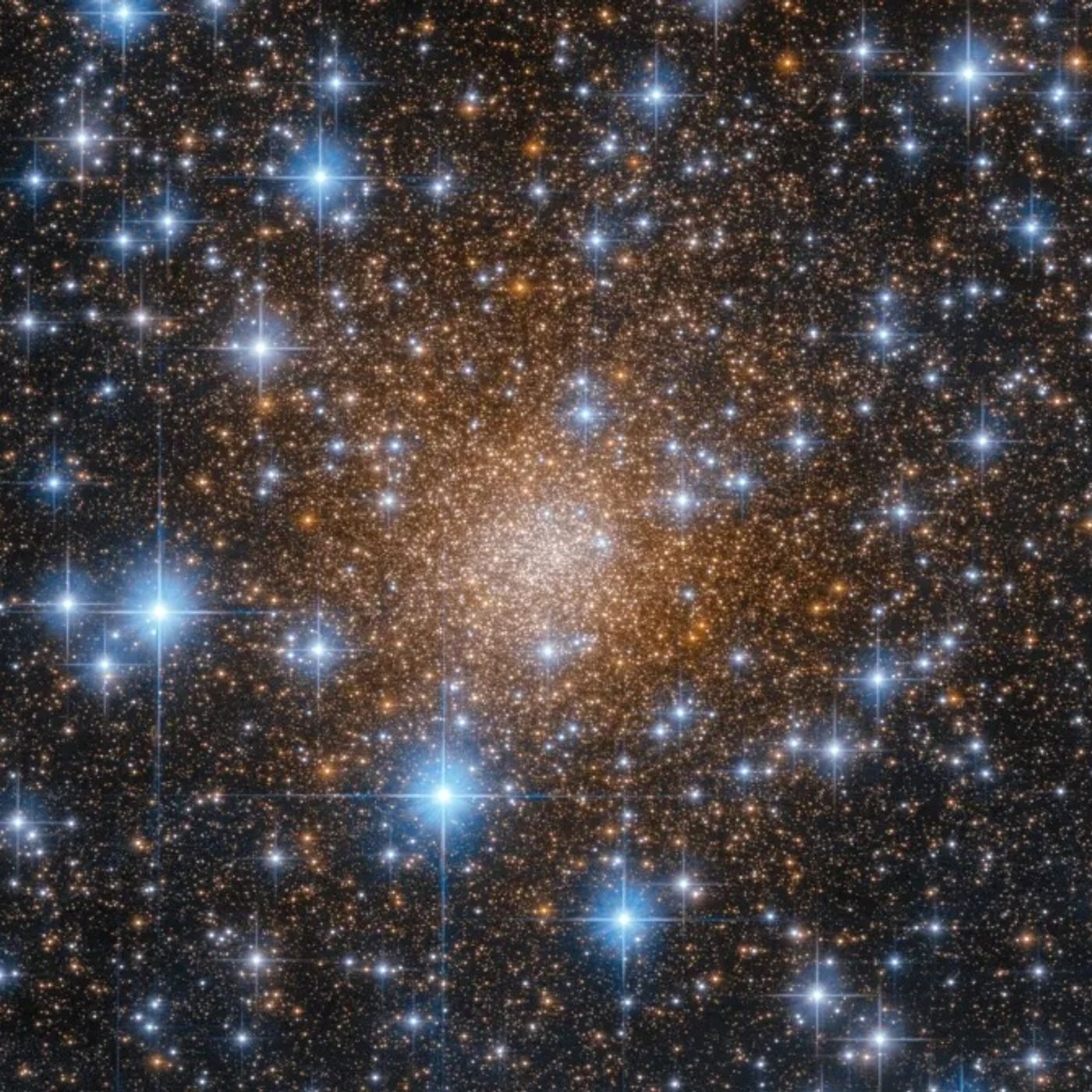 Travelers In The Night828-Alive With LightMost humans live in cities under a dome of light pollution. They have never witnessed that the natural night sky is not dark; but rather it is alive with it's own lights.To see for yourself, pick a natural night sky location near you like the Cosmic Campground International Dark Sky Sanctuary in New Mexico and recruit a friend.2024-12-2002 min
Travelers In The Night828-Alive With LightMost humans live in cities under a dome of light pollution. They have never witnessed that the natural night sky is not dark; but rather it is alive with it's own lights.To see for yourself, pick a natural night sky location near you like the Cosmic Campground International Dark Sky Sanctuary in New Mexico and recruit a friend.2024-12-2002 min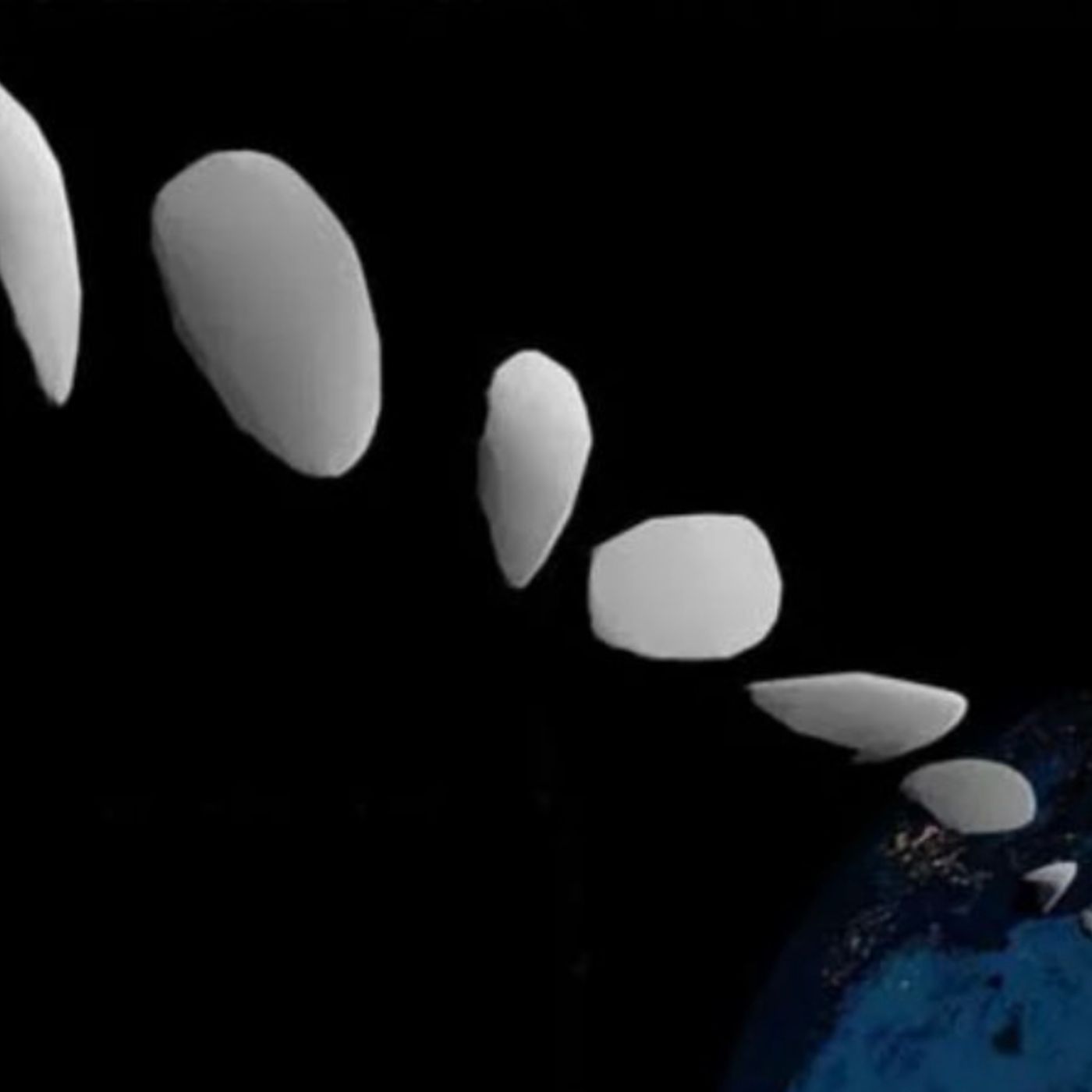 Travelers In The Night315E-334-Last 19 Hours2008 TC3 was discovered by my Catalina Sky Survey teammate Richard Kowalski on October 6, 2008. It is the first of only 9 asteroids which humans have tracked traveling through space, have seen exploding in our atmosphere, and have been able walk up to pieces on the Earth's surface.2024-12-1702 min
Travelers In The Night315E-334-Last 19 Hours2008 TC3 was discovered by my Catalina Sky Survey teammate Richard Kowalski on October 6, 2008. It is the first of only 9 asteroids which humans have tracked traveling through space, have seen exploding in our atmosphere, and have been able walk up to pieces on the Earth's surface.2024-12-1702 min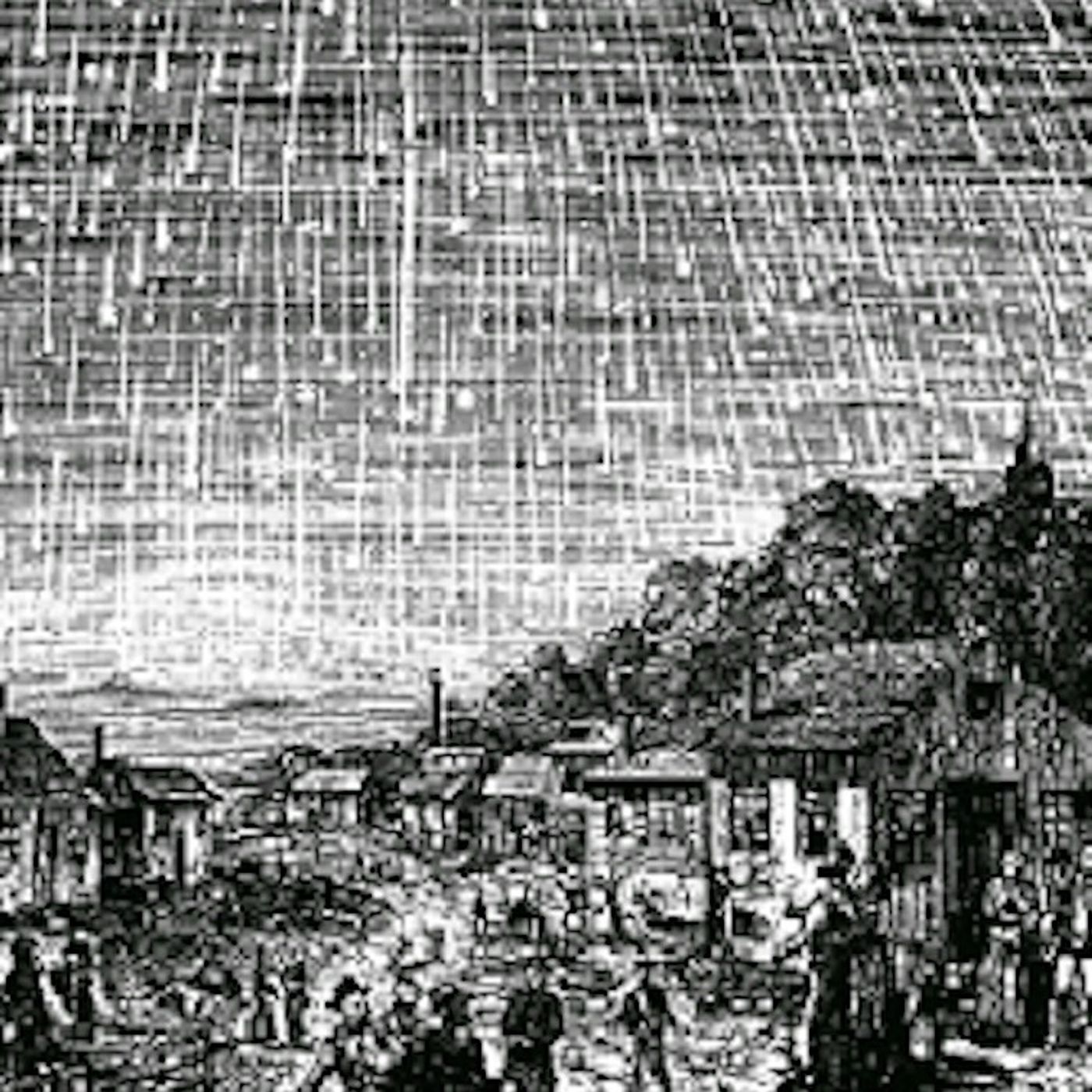 Travelers In The Night827-Meteor ParentsOne of the joys of visiting a natural night sky location on a clear dark of the Moon night is to observe meteors streaking across the sky. It took more than 2,000 years for humans to figure out at meteors and comets are related.2024-12-1302 min
Travelers In The Night827-Meteor ParentsOne of the joys of visiting a natural night sky location on a clear dark of the Moon night is to observe meteors streaking across the sky. It took more than 2,000 years for humans to figure out at meteors and comets are related.2024-12-1302 min Travelers In The Night314E-333-WhoppersRecently, my Catalina Team Captain Eric Christensen discovered a potentially hazardous 3,000 foot diameter asteroid, 2017 CH1. Asteroid hunters are discovering less than one asteroid of this size or greater per month. Eric's discovery, 2017 CH1, has an orbit which can bring it to about twice the Moon's distance from planet Earth. Although it will not come anywhere near Earth in the foreseeable future, asteroid hunters will continue to monitor 2017 CH1's orbit to make sure that it remains no threat to planet Earth.2024-12-1202 min
Travelers In The Night314E-333-WhoppersRecently, my Catalina Team Captain Eric Christensen discovered a potentially hazardous 3,000 foot diameter asteroid, 2017 CH1. Asteroid hunters are discovering less than one asteroid of this size or greater per month. Eric's discovery, 2017 CH1, has an orbit which can bring it to about twice the Moon's distance from planet Earth. Although it will not come anywhere near Earth in the foreseeable future, asteroid hunters will continue to monitor 2017 CH1's orbit to make sure that it remains no threat to planet Earth.2024-12-1202 min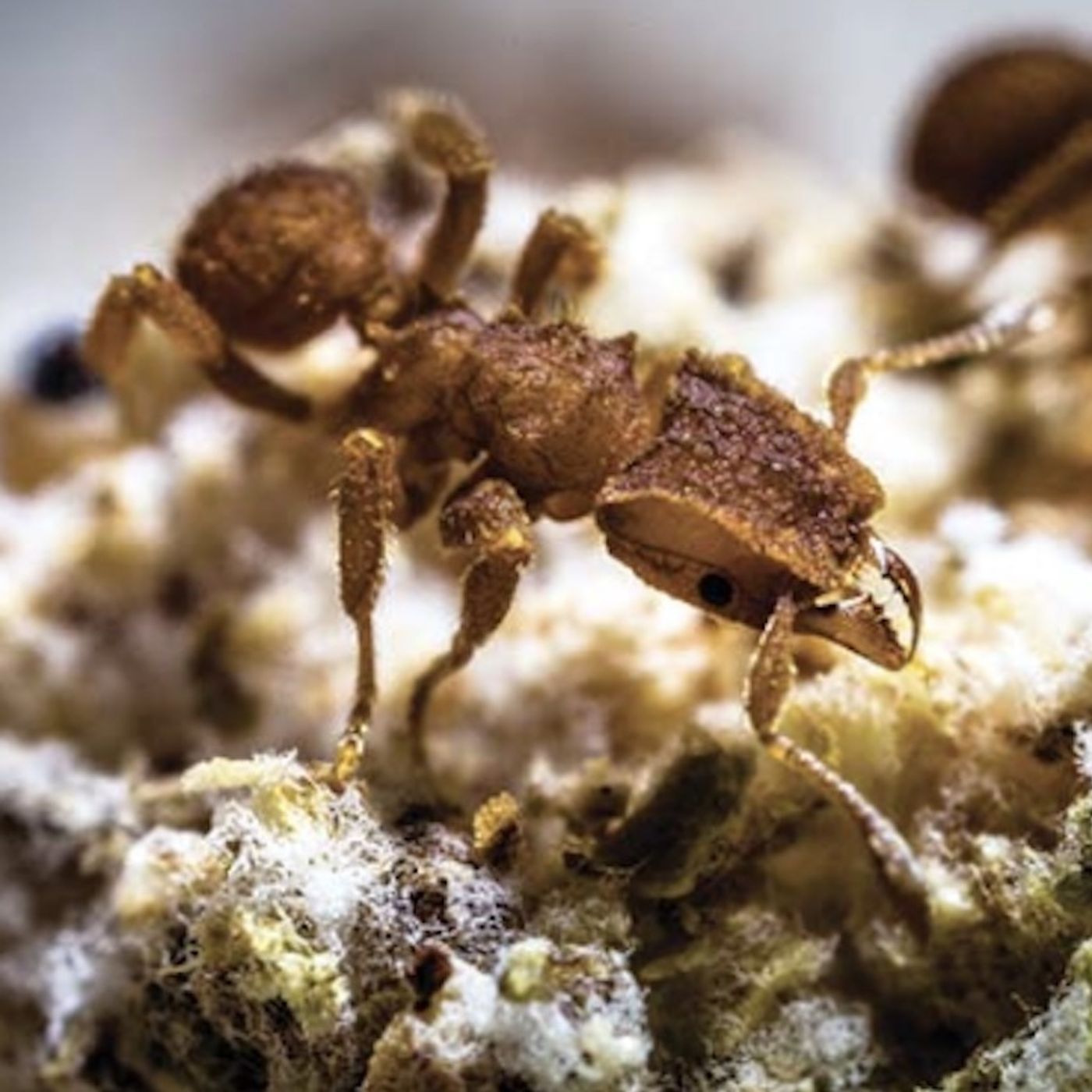 Travelers In The Night826-Ants and AsteroidsAbout 66 million years ago a 6 to 9 mile diameter asteroid traveling at approximately 12 miles per second slammed into the Gulf of Mexico off of the modern coastline of the Yucatan Peninsula in Mexico. Ants survived, flourished, and developed agriculture while other species went extinct.2024-12-0602 min
Travelers In The Night826-Ants and AsteroidsAbout 66 million years ago a 6 to 9 mile diameter asteroid traveling at approximately 12 miles per second slammed into the Gulf of Mexico off of the modern coastline of the Yucatan Peninsula in Mexico. Ants survived, flourished, and developed agriculture while other species went extinct.2024-12-0602 min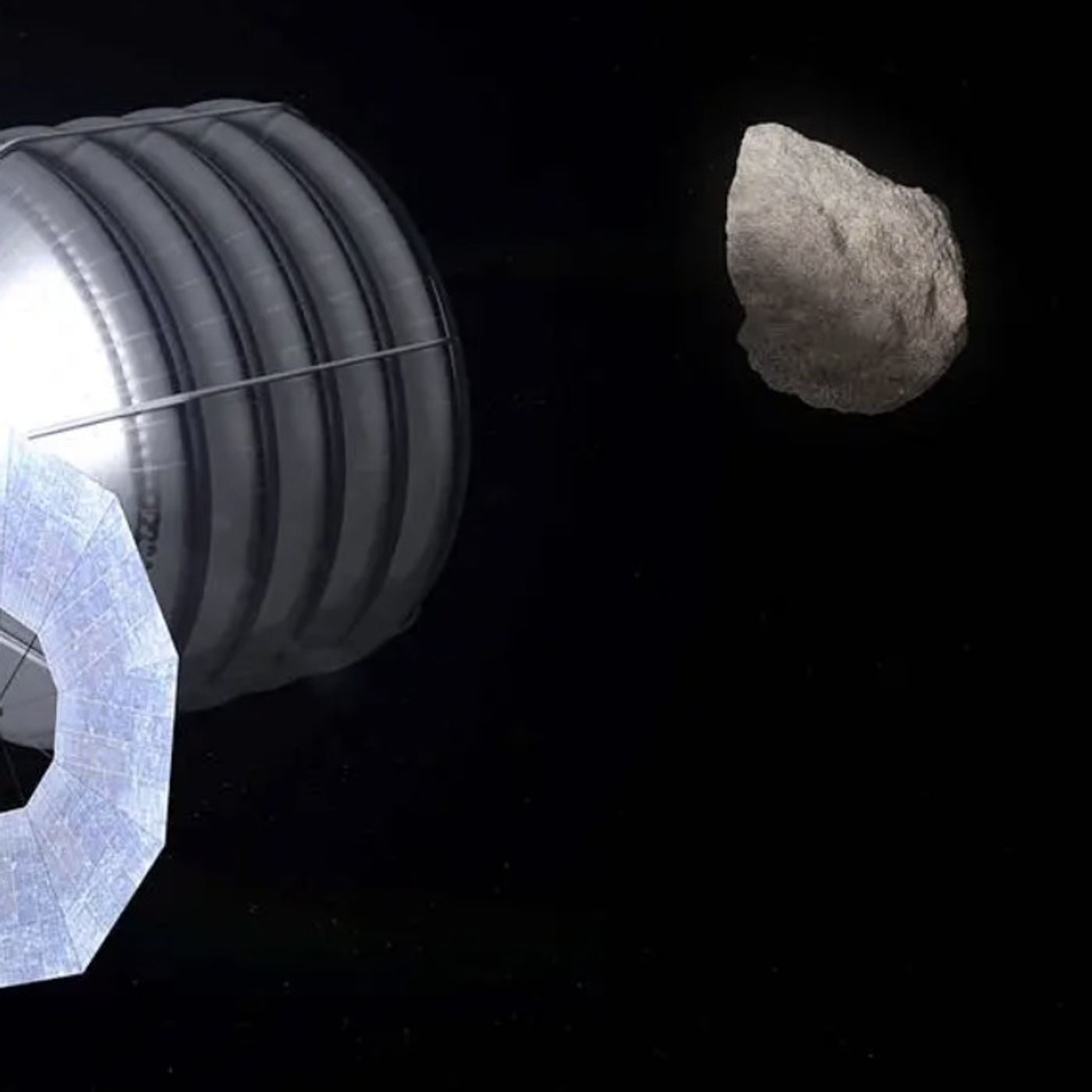 Travelers In The Night313E-332-Greg's DestinationA winter storm hit Mt. Lemmon, Arizona closing access to the observatory by blowing over trees and producing large snow drifts. After the Mountain Operations Crew cleared the road, my Catalina Sky Survey teammate Greg Leonard was able to make his way to the top and discover an asteroid which could be visited by human astronauts. Greg's new 120 foot diameter space rock , named 2017 BV93, spends most of its time between Earth and Venus as it orbits the Sun once every 346 days.2024-12-0302 min
Travelers In The Night313E-332-Greg's DestinationA winter storm hit Mt. Lemmon, Arizona closing access to the observatory by blowing over trees and producing large snow drifts. After the Mountain Operations Crew cleared the road, my Catalina Sky Survey teammate Greg Leonard was able to make his way to the top and discover an asteroid which could be visited by human astronauts. Greg's new 120 foot diameter space rock , named 2017 BV93, spends most of its time between Earth and Venus as it orbits the Sun once every 346 days.2024-12-0302 min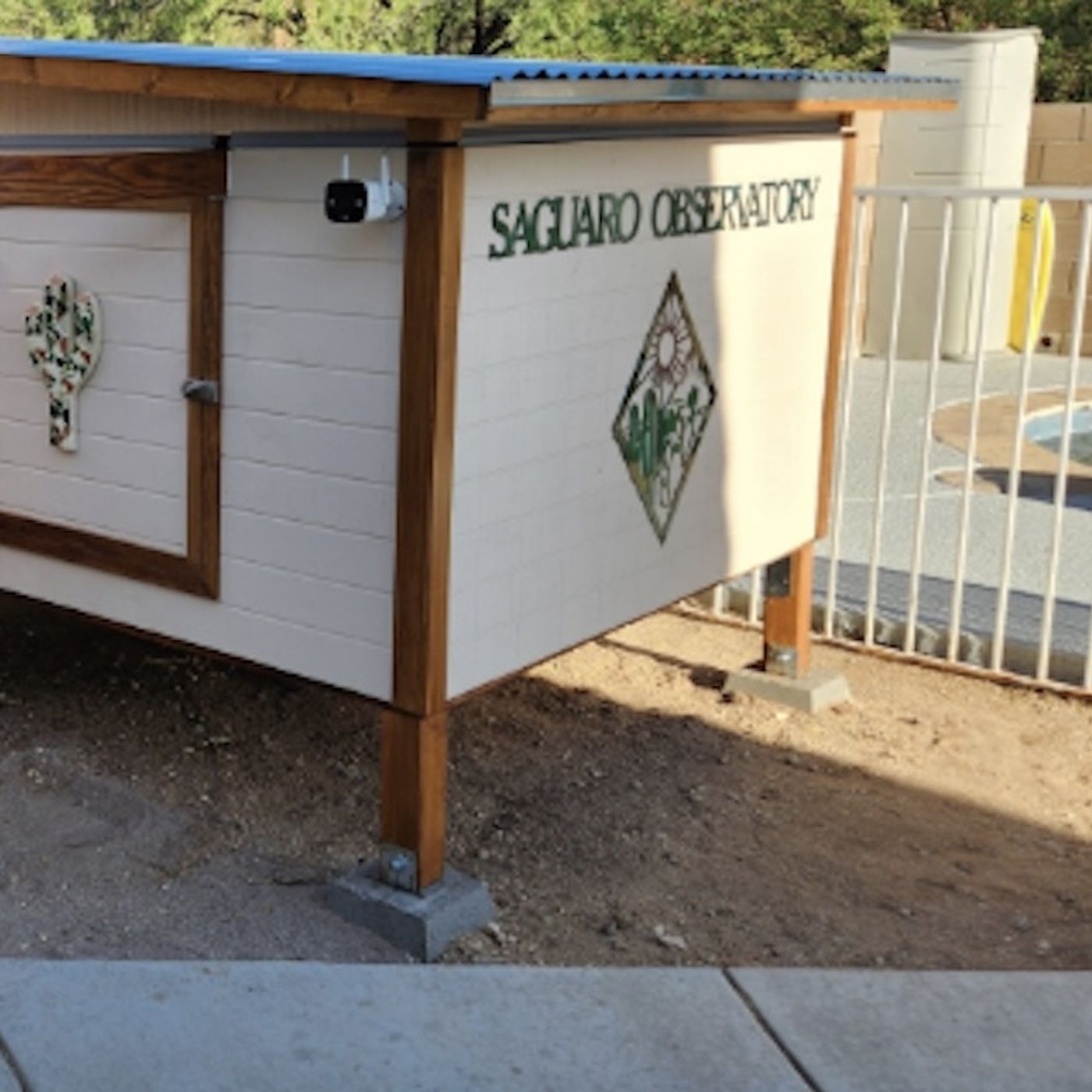 Travelers In The Night825-Backyard Asteroid DiscoveryMy Catalina Sky Survey teammate David Rankin’s regular job is asteroid hunting at the telescope and creating software to improve detection as well as to better keep track of space rocks that come near our home planet. During his time off, in his backyard in Tucson, Arizona, David has built and operates equipment to track meteors, a seismograph to detect Earthquakes, and a small observatory to discover asteroids.2024-11-2902 min
Travelers In The Night825-Backyard Asteroid DiscoveryMy Catalina Sky Survey teammate David Rankin’s regular job is asteroid hunting at the telescope and creating software to improve detection as well as to better keep track of space rocks that come near our home planet. During his time off, in his backyard in Tucson, Arizona, David has built and operates equipment to track meteors, a seismograph to detect Earthquakes, and a small observatory to discover asteroids.2024-11-2902 min Travelers In The Night312E-331-Space SalsaIf Lunar and Martian colonists are to have chips and salsa they will need grow their own tomatoes. To test methods to do this German Aerospace Center or DLR has developed the EU:CROPIS satellite which will be launched by a Space-X Falcon 9 rocket into low Earth orbit sometime in 2017. Once in orbit the satellite will be programmed to rotate at two different speeds on its own axis to produce Lunar gravity for 6 months and then Martian gravity for the next 6 months. Inside the satellite tomato seeds will germinate and grow under the watchful eyes of 16 onboard cameras. A trickle...2024-11-2602 min
Travelers In The Night312E-331-Space SalsaIf Lunar and Martian colonists are to have chips and salsa they will need grow their own tomatoes. To test methods to do this German Aerospace Center or DLR has developed the EU:CROPIS satellite which will be launched by a Space-X Falcon 9 rocket into low Earth orbit sometime in 2017. Once in orbit the satellite will be programmed to rotate at two different speeds on its own axis to produce Lunar gravity for 6 months and then Martian gravity for the next 6 months. Inside the satellite tomato seeds will germinate and grow under the watchful eyes of 16 onboard cameras. A trickle...2024-11-2602 min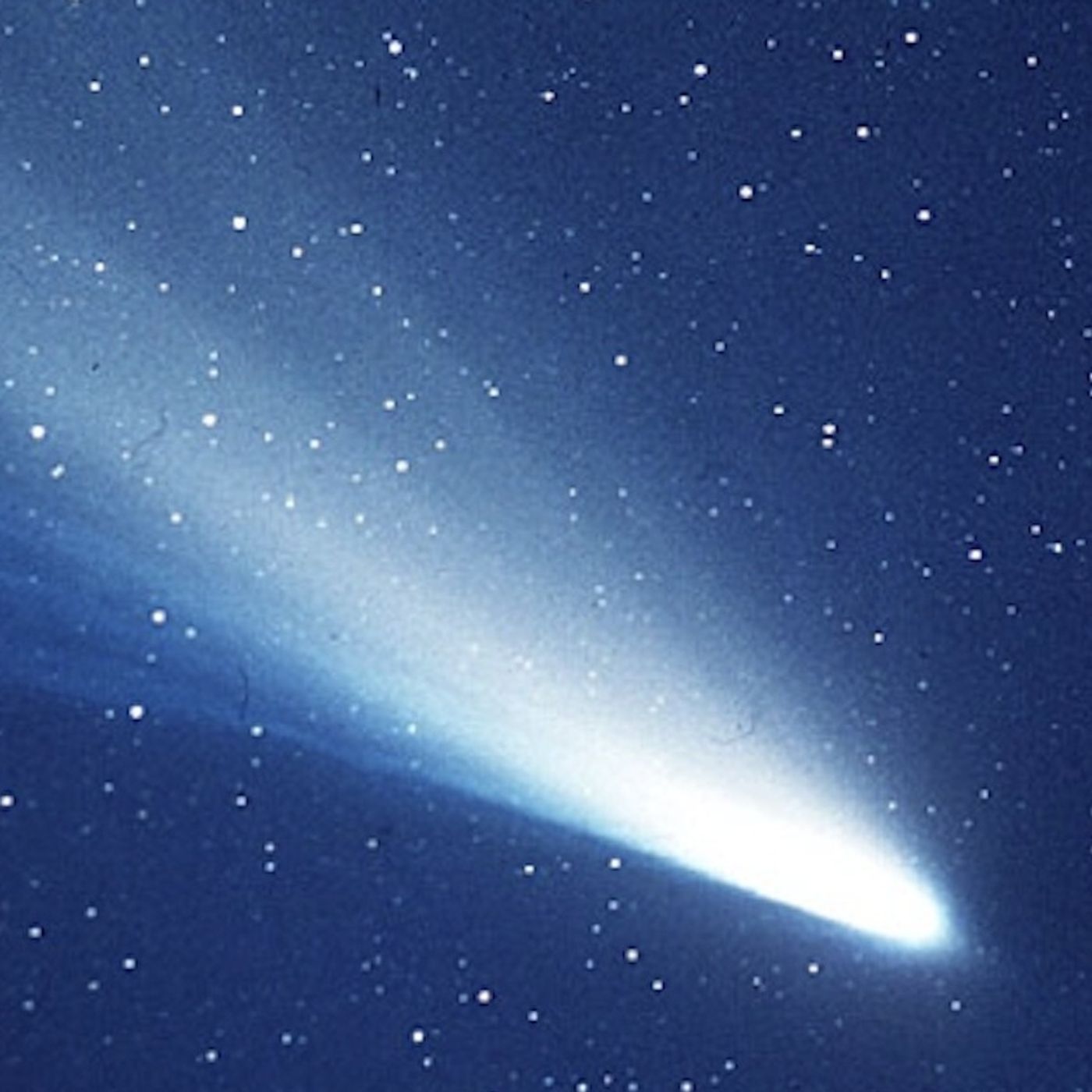 Travelers In The Night824-Catalina Near Earth CometMy Catalina Sky Survey teammate Kacper Wierzchos was asteroid hunting with our Schmidt telescope on Mt. Bigelow, Arizona when he discovered and reported a fuzzy looking unknown object in a set of his images. There is no chance of an impact from Kacper's discovery, P/2019 Y3 (Catalina), in the foreseeable future.2024-11-2202 min
Travelers In The Night824-Catalina Near Earth CometMy Catalina Sky Survey teammate Kacper Wierzchos was asteroid hunting with our Schmidt telescope on Mt. Bigelow, Arizona when he discovered and reported a fuzzy looking unknown object in a set of his images. There is no chance of an impact from Kacper's discovery, P/2019 Y3 (Catalina), in the foreseeable future.2024-11-2202 min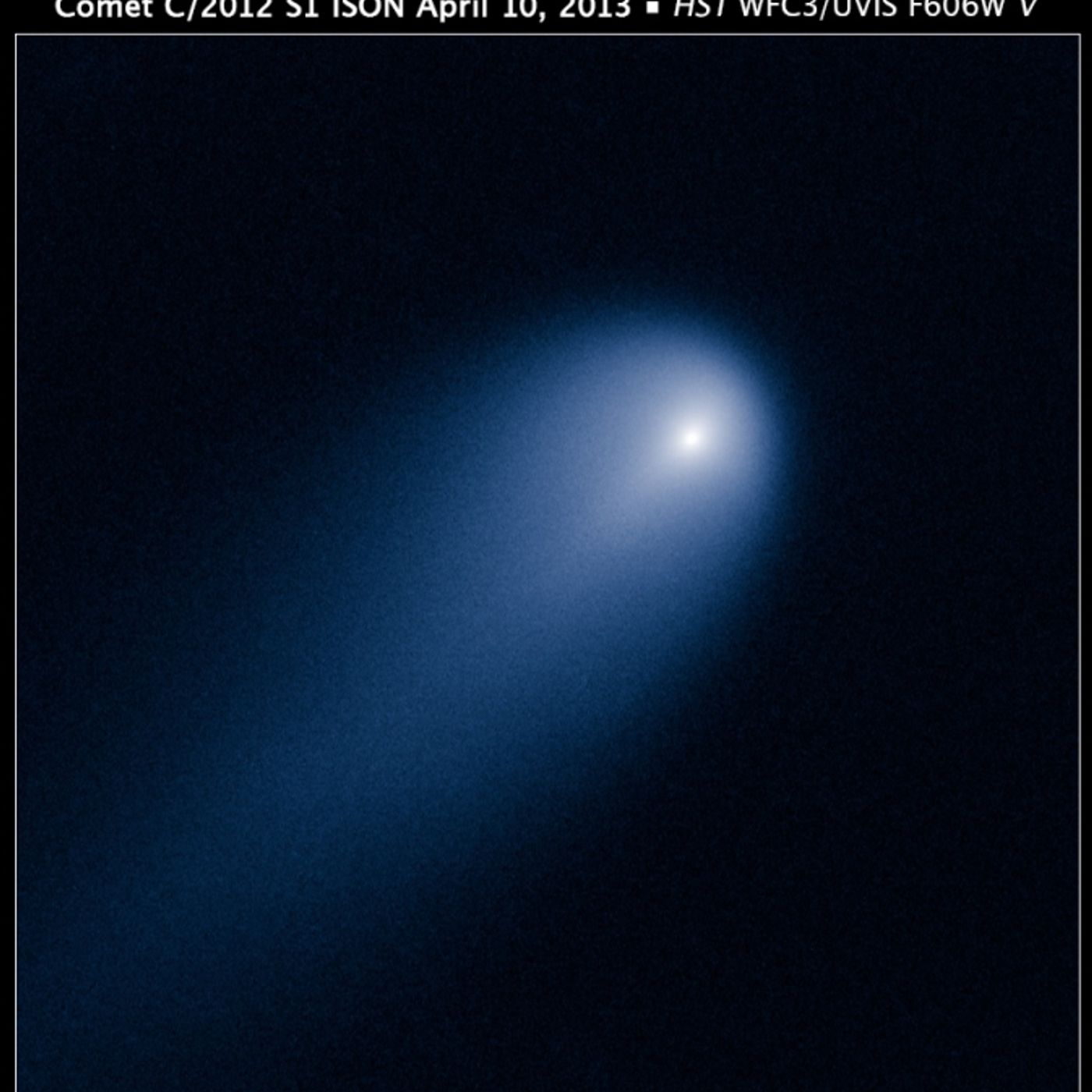 Travelers In The Night311E-330-Comet JohnsonComet C2/2015 V2 Johnson was discovered by my Catalina Sky Survey teammate Jess Johnson on November 3, 2015. It travels on a hyperbolic path around the Sun which is highly inclined to the plane where the planets and most of the asteroids travel. Jess's comet's path takes it from deep space into the inner solar system slightly further from the Sun than the planet Mars. Although it will not get closer to the Earth than about 75 million miles it may out gas enough material to make it visible to the naked eye. Observers in the northern hemisphere will have their best chance...2024-11-1902 min
Travelers In The Night311E-330-Comet JohnsonComet C2/2015 V2 Johnson was discovered by my Catalina Sky Survey teammate Jess Johnson on November 3, 2015. It travels on a hyperbolic path around the Sun which is highly inclined to the plane where the planets and most of the asteroids travel. Jess's comet's path takes it from deep space into the inner solar system slightly further from the Sun than the planet Mars. Although it will not get closer to the Earth than about 75 million miles it may out gas enough material to make it visible to the naked eye. Observers in the northern hemisphere will have their best chance...2024-11-1902 min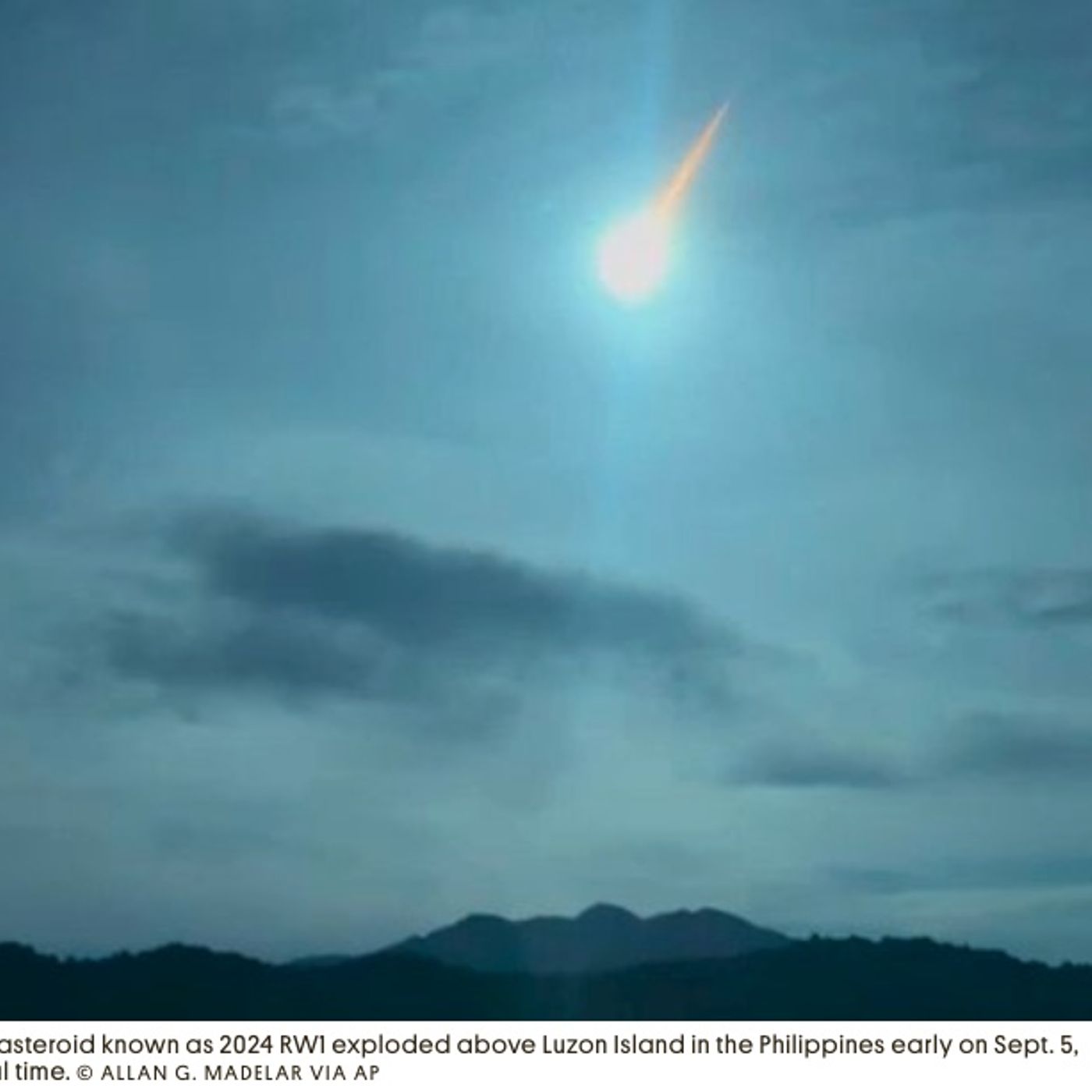 Travelers In The Night823 Jacqui's ImpactorMy Catalina Sky Survey teammate Jacqueline Fazekas was asteroid hunting in the constellation of Aquarius with our 60 inch telescope on Mt. Lemmon Arizona when she discovered a tiny asteroid which would impact the Earth in about 10 hours.2024-11-1502 min
Travelers In The Night823 Jacqui's ImpactorMy Catalina Sky Survey teammate Jacqueline Fazekas was asteroid hunting in the constellation of Aquarius with our 60 inch telescope on Mt. Lemmon Arizona when she discovered a tiny asteroid which would impact the Earth in about 10 hours.2024-11-1502 min Travelers In The Night310E-329-Near NeighborMy Catalina Sky Survey teammate Carson Fuls was using the new hundred million pixel camera on our team's Schmidt telescope located on Mt. Bigelow, Arizona, when he discovered 2017 AG13. It passes near the Earth's orbit twice a year on its own 345 day path around the Sun. When Carson spotted it, 9 lunar distances from him it was heading in our direction at about nine and a half miles per second. Three days later it came to less than two times the distance the Moon's distance from us. Carson's new space rock, 2017 AG13's orbit, can bring it to less than 2,000 miles...2024-11-1202 min
Travelers In The Night310E-329-Near NeighborMy Catalina Sky Survey teammate Carson Fuls was using the new hundred million pixel camera on our team's Schmidt telescope located on Mt. Bigelow, Arizona, when he discovered 2017 AG13. It passes near the Earth's orbit twice a year on its own 345 day path around the Sun. When Carson spotted it, 9 lunar distances from him it was heading in our direction at about nine and a half miles per second. Three days later it came to less than two times the distance the Moon's distance from us. Carson's new space rock, 2017 AG13's orbit, can bring it to less than 2,000 miles...2024-11-1202 min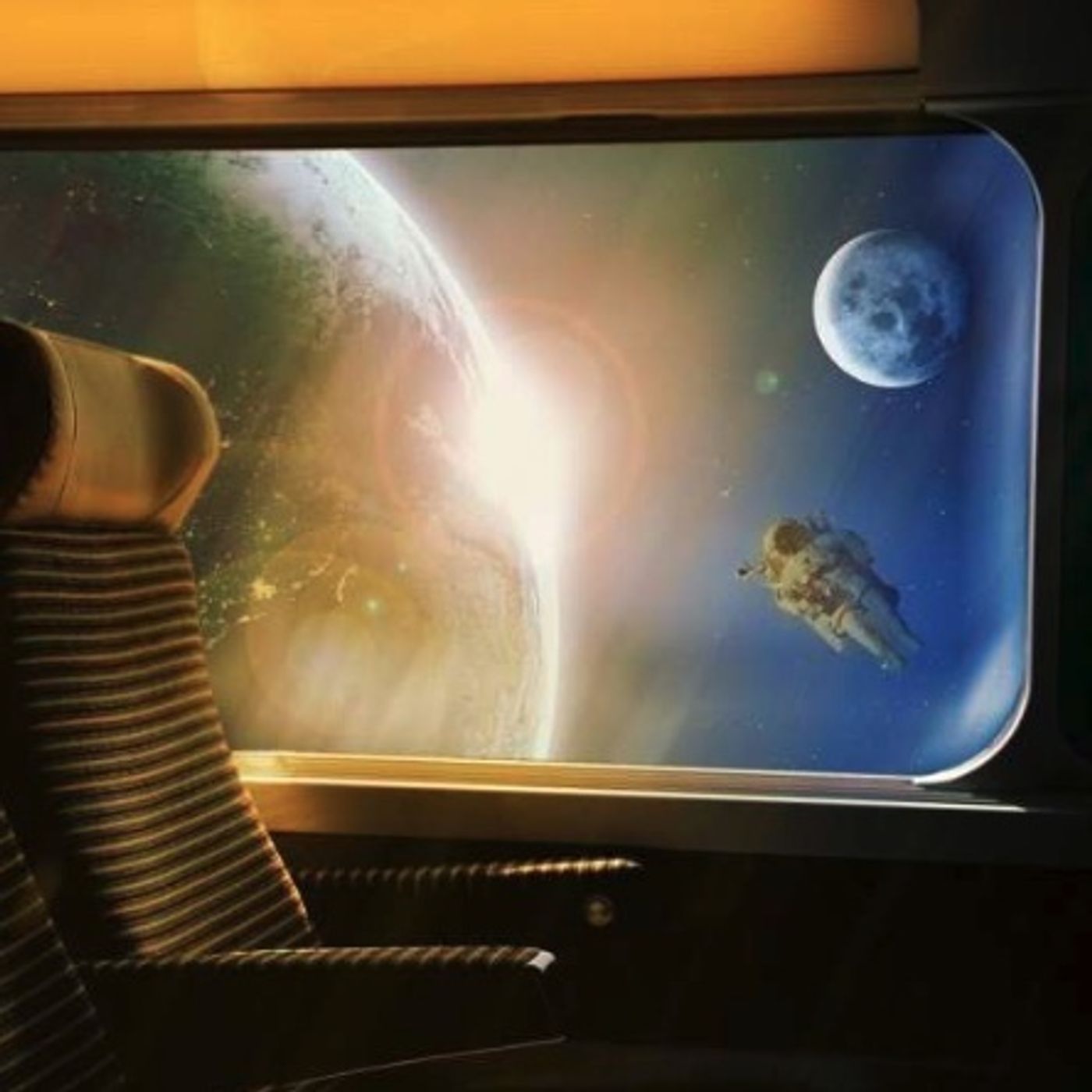 Travelers In The Night822-Dark Matter and Alien BeingsIn a recent paper published in the International Journal of Astrobiology, a philosopher Dr. Vojin Rakić (voyin rack itch) reviews some 50 or so proposed solutions to Fermi’s paradox, including, that human life is so exceptional that it happened only once in the universe, that perhaps other civilizations destroy themselves like we are trying to do, civilizations broadcast radio and TV signals only for a relatively brief period of time, alien intelligent life maybe incomprehensible to our species, and that maybe the energy requirements and distances in the Milky way are too great allow us to discover others of our kin...2024-11-0802 min
Travelers In The Night822-Dark Matter and Alien BeingsIn a recent paper published in the International Journal of Astrobiology, a philosopher Dr. Vojin Rakić (voyin rack itch) reviews some 50 or so proposed solutions to Fermi’s paradox, including, that human life is so exceptional that it happened only once in the universe, that perhaps other civilizations destroy themselves like we are trying to do, civilizations broadcast radio and TV signals only for a relatively brief period of time, alien intelligent life maybe incomprehensible to our species, and that maybe the energy requirements and distances in the Milky way are too great allow us to discover others of our kin...2024-11-0802 min Travelers In The Night309E-328-The Heat is OnThe National Oceanic and Atmospheric Administration has published an extensive data based review, analysis, and summary of the Earth's Climate. 2016 was hotter than 2015 which was hotter than 2014. 2016 is the warmest year the Earth has been in the more than 180 years of record keeping. Overall in 2016 the whole Earth was 1.8 F above the 1951-1980 average. The Arctic in 2016 was 7.2F higher than it was the pre-industrial age.2024-11-0502 min
Travelers In The Night309E-328-The Heat is OnThe National Oceanic and Atmospheric Administration has published an extensive data based review, analysis, and summary of the Earth's Climate. 2016 was hotter than 2015 which was hotter than 2014. 2016 is the warmest year the Earth has been in the more than 180 years of record keeping. Overall in 2016 the whole Earth was 1.8 F above the 1951-1980 average. The Arctic in 2016 was 7.2F higher than it was the pre-industrial age.2024-11-0502 min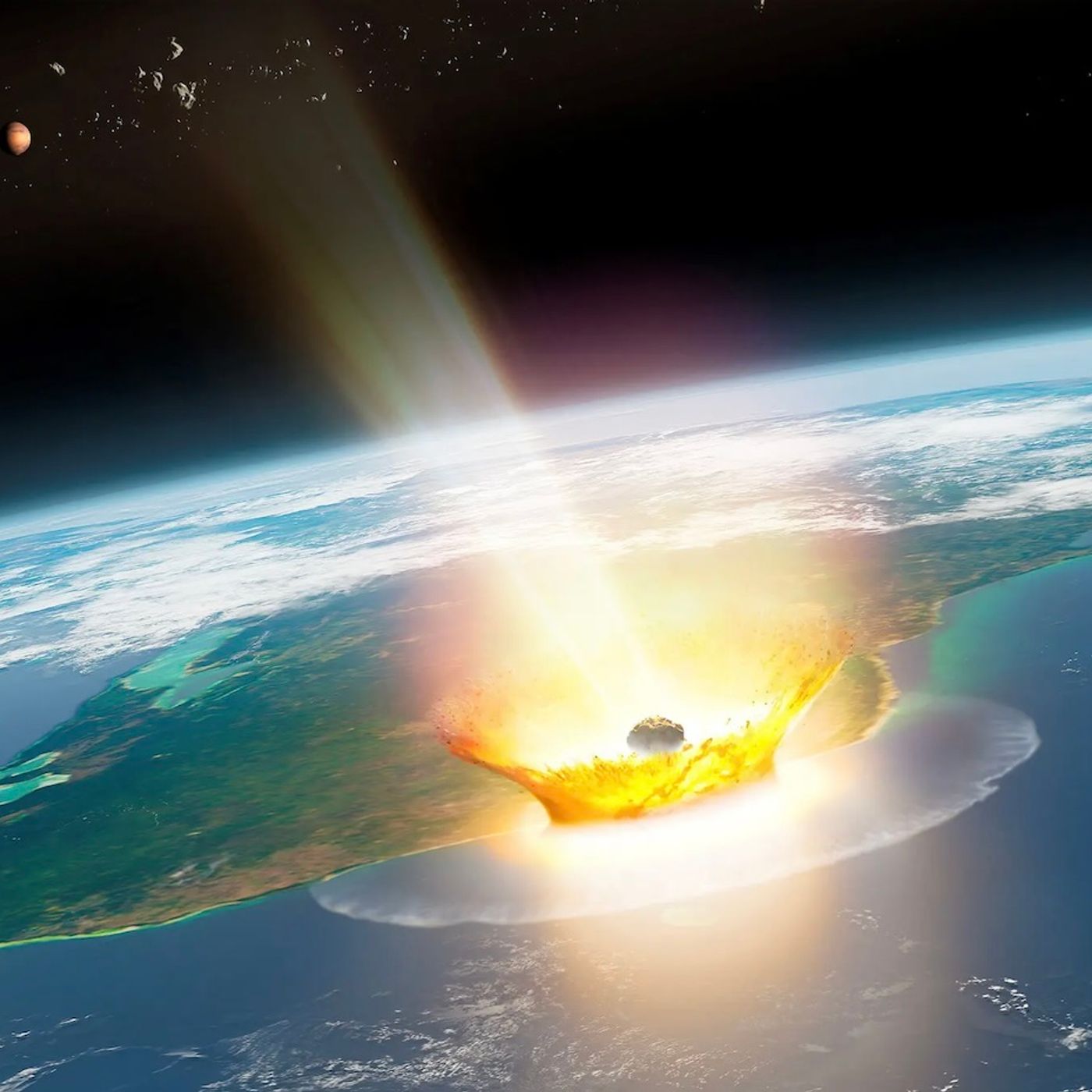 Travelers In The Night821-Dinosaur Killing AsteroidScientific results are consistent with the hypothesis that the dinosaur killing, K-T layer forming Chicxulub impactor came from well beyond Jupiter while the other 5 impactors in the past 541 million years as well as most meteorites found on Earth came from asteroids formed between Mars and Jupiter. All of this prompts us to marvel that we are here at all and puzzle over how to prepare for what the future might hold. In particular asteroid hunters should take seriously the possibility of an impactor from deep space with our number on it.2024-11-0102 min
Travelers In The Night821-Dinosaur Killing AsteroidScientific results are consistent with the hypothesis that the dinosaur killing, K-T layer forming Chicxulub impactor came from well beyond Jupiter while the other 5 impactors in the past 541 million years as well as most meteorites found on Earth came from asteroids formed between Mars and Jupiter. All of this prompts us to marvel that we are here at all and puzzle over how to prepare for what the future might hold. In particular asteroid hunters should take seriously the possibility of an impactor from deep space with our number on it.2024-11-0102 min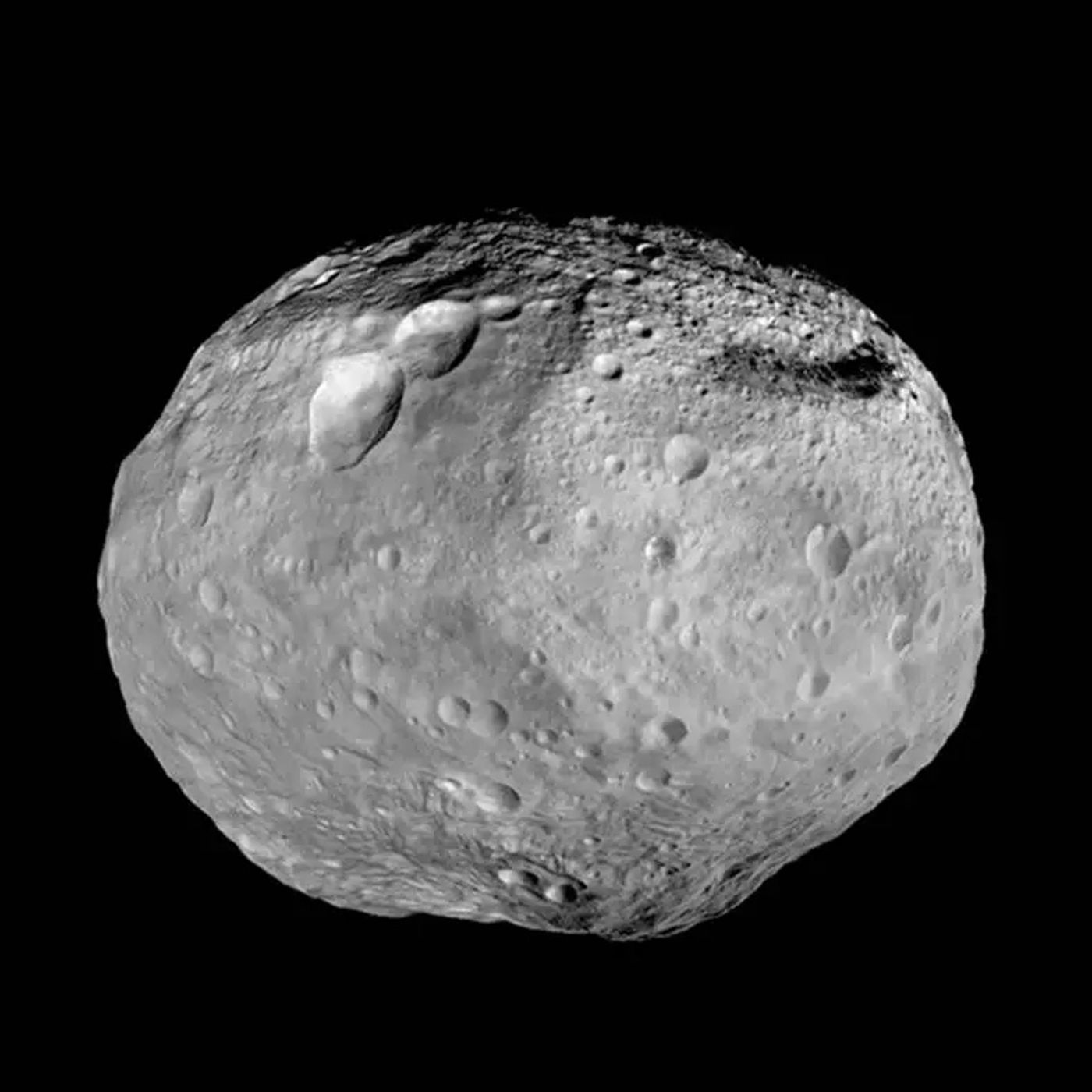 Travelers In The Night308E-327-Suddenly BrightAn example that a relatively large space rock can approach the Earth suddenly started with what appeared as a bright star moving across the images that I had just obtained with the Catalina Sky Survey's 60 inch telescope on Mt. Lemmon, Arizona. It was about 100 times brighter than most of Earth approaching objects asteroid hunters discover. Over the next 64 hours it was tracked by 45 different observatories around the globe. This previously unknown space rock, now named 2017 AG5, is approximately 370 feet in diameter and can come closer than the Moon's distance to us.2024-10-2902 min
Travelers In The Night308E-327-Suddenly BrightAn example that a relatively large space rock can approach the Earth suddenly started with what appeared as a bright star moving across the images that I had just obtained with the Catalina Sky Survey's 60 inch telescope on Mt. Lemmon, Arizona. It was about 100 times brighter than most of Earth approaching objects asteroid hunters discover. Over the next 64 hours it was tracked by 45 different observatories around the globe. This previously unknown space rock, now named 2017 AG5, is approximately 370 feet in diameter and can come closer than the Moon's distance to us.2024-10-2902 min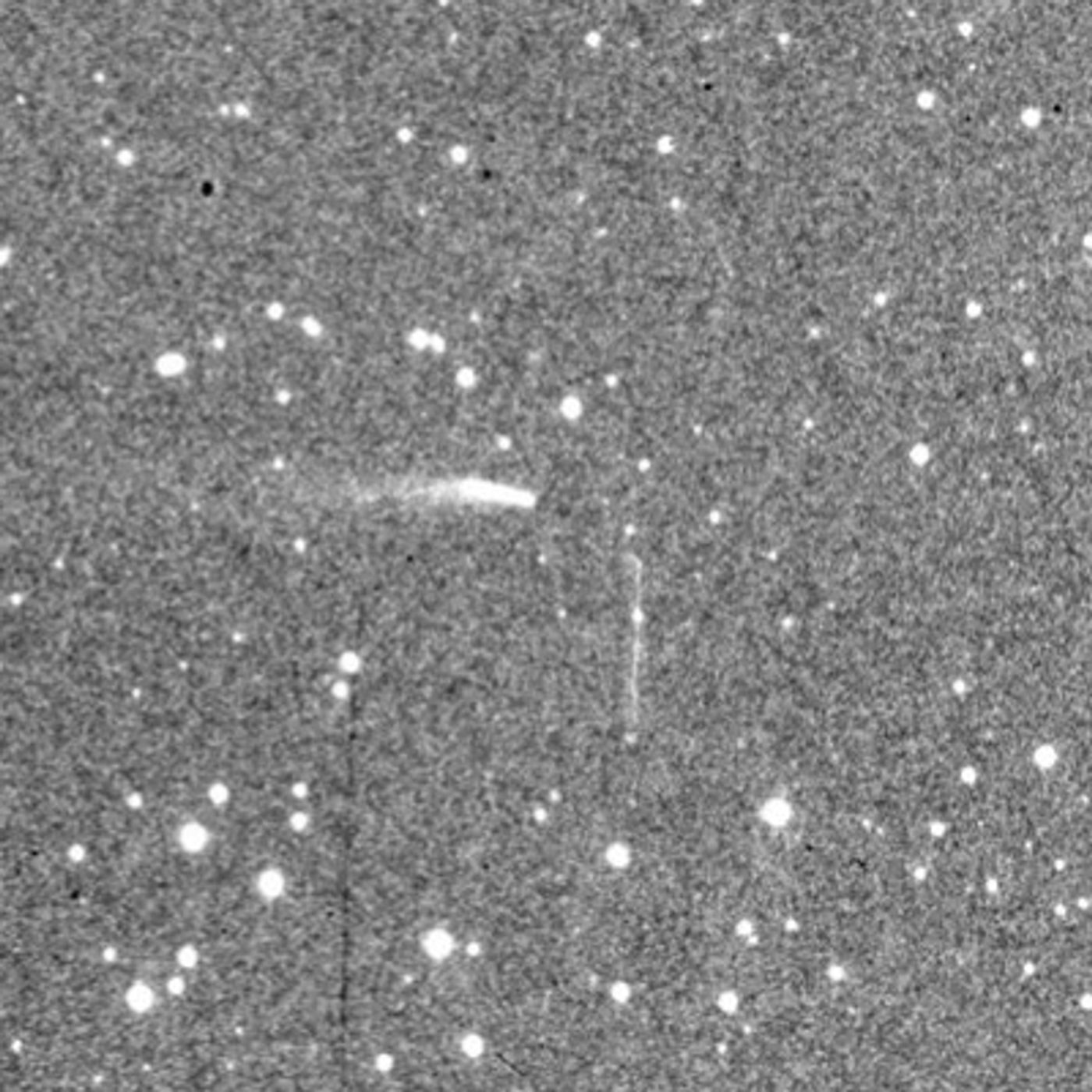 Travelers In The Night820-4015 Wilson-Harrington (1979 VA)4015 Wilson-Harrington (1979 VA) was discovered as a comet by Wilson and Harrington in 1949, lost to astronomers for 30 years, and rediscovered in 1979 as an asteroid named 1979 VA. In 1992 with more data it was determined that comet Wilson-Harrington and asteroid 1979 VA are the same object.2024-10-2502 min
Travelers In The Night820-4015 Wilson-Harrington (1979 VA)4015 Wilson-Harrington (1979 VA) was discovered as a comet by Wilson and Harrington in 1949, lost to astronomers for 30 years, and rediscovered in 1979 as an asteroid named 1979 VA. In 1992 with more data it was determined that comet Wilson-Harrington and asteroid 1979 VA are the same object.2024-10-2502 min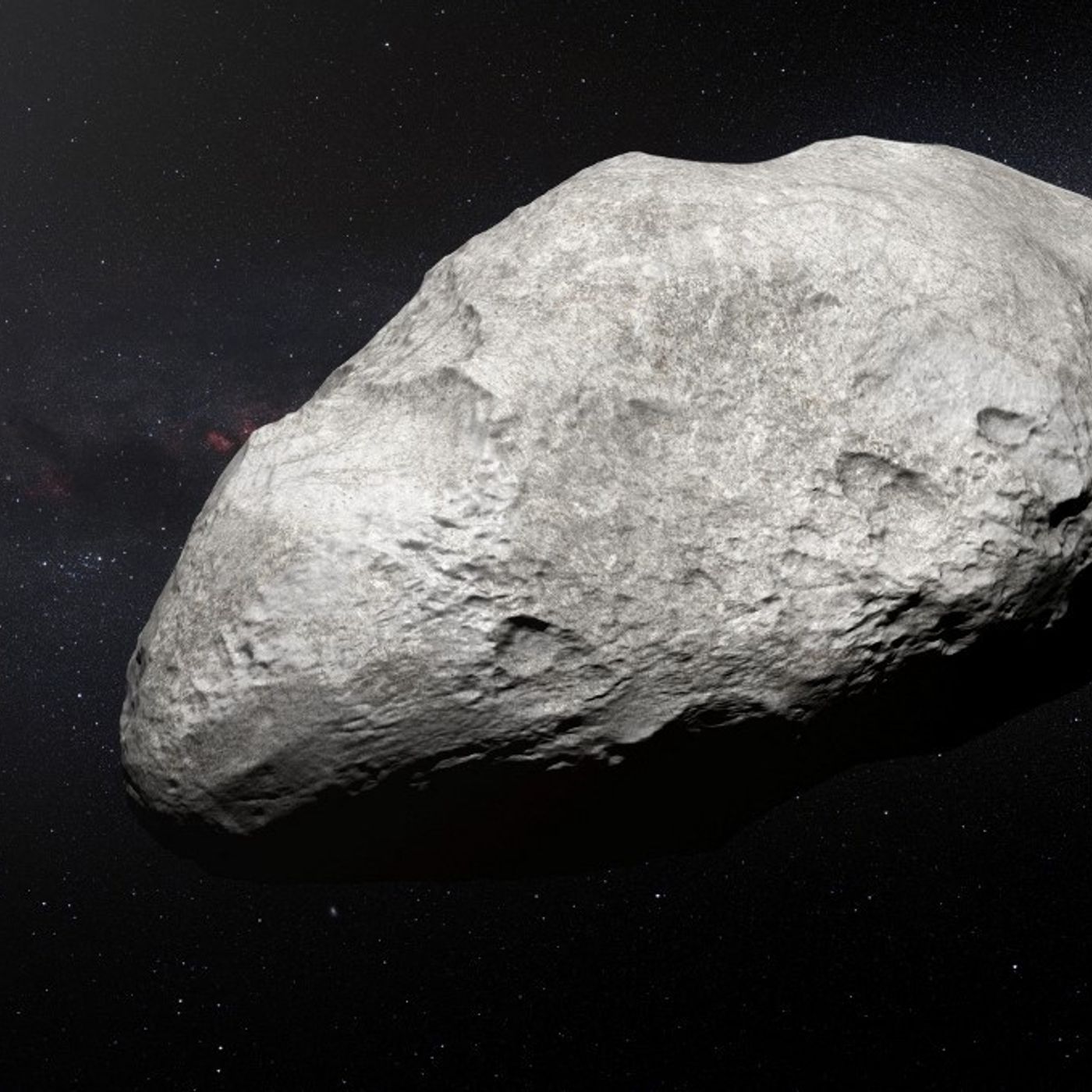 Travelers In The Night307E-326-Asteroids 20162016 was another record year for asteroid hunters during which we discovered 1,894 new Earth approaching objects. My team, the NASA funded, Catalina Sky Survey, led the pack with 931 Near Earth Asteroid discoveries.2024-10-2202 min
Travelers In The Night307E-326-Asteroids 20162016 was another record year for asteroid hunters during which we discovered 1,894 new Earth approaching objects. My team, the NASA funded, Catalina Sky Survey, led the pack with 931 Near Earth Asteroid discoveries.2024-10-2202 min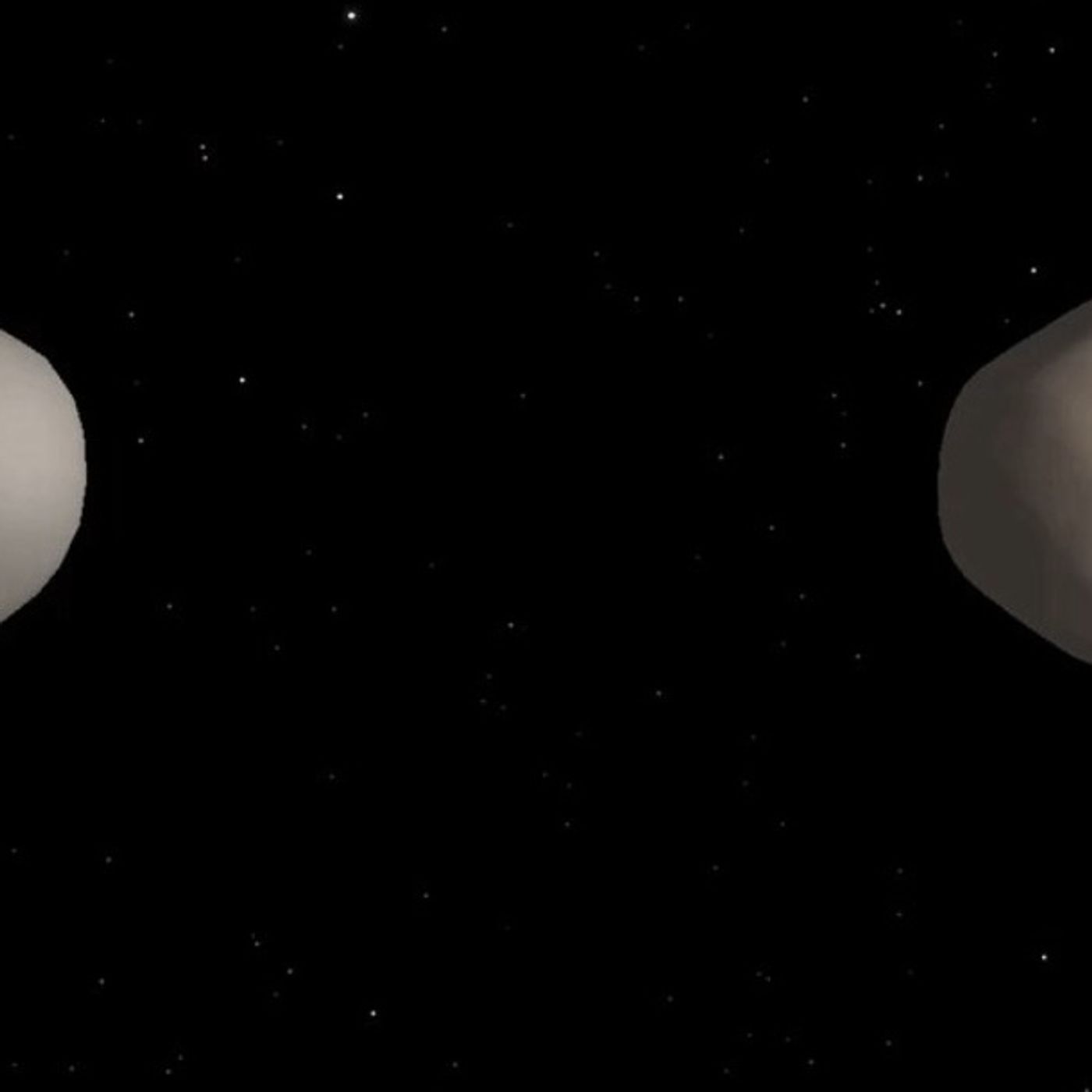 Travelers In The Night819-Binary AsteroidsBinary asteroids are important since they enable astronomers to study how objects interact in space and in some cases the data can even yield their sizes and shapes.2024-10-1802 min
Travelers In The Night819-Binary AsteroidsBinary asteroids are important since they enable astronomers to study how objects interact in space and in some cases the data can even yield their sizes and shapes.2024-10-1802 min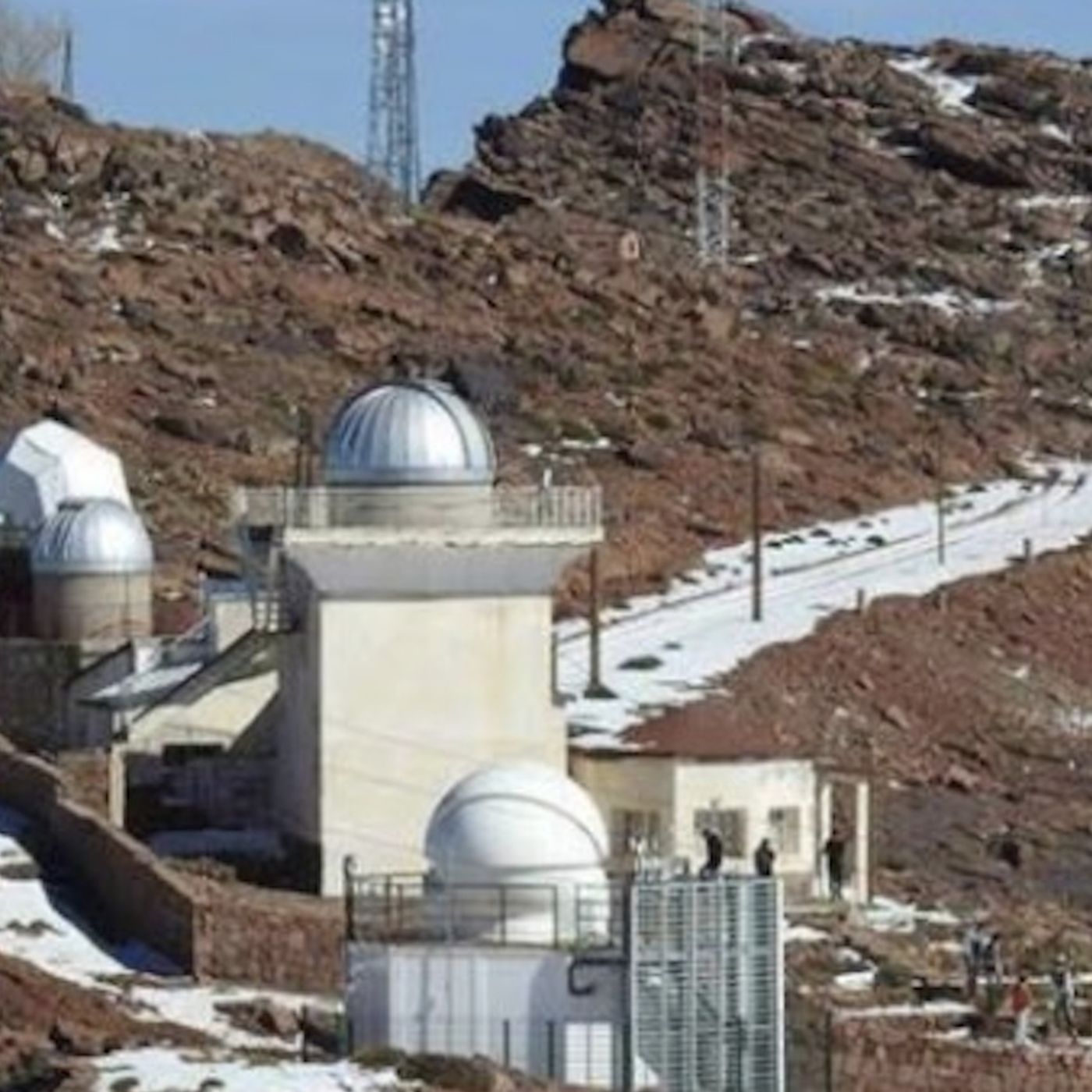 Travelers In The Night306E-325-MarrakechA location 9,000 feet above sea level in the Atlas Mountains of Morocco is ideal for an asteroid hunter since the weather is often clear and the skies are dark. It was thus intriguing for me to see that a new asteroid discovery was posted from J43 which is the Morocco Oukaïmeden [pronounced Oukaï-meden] Sky Survey or (MOSS) located near Marrakech , a name I had not encountered except in the Crosby, Stills, and Nash song "Marrakech Express". The MOSS observatory has team members in Morocco, France, and Switzerland, call themselves amateurs, and produces professional quality results.2024-10-1502 min
Travelers In The Night306E-325-MarrakechA location 9,000 feet above sea level in the Atlas Mountains of Morocco is ideal for an asteroid hunter since the weather is often clear and the skies are dark. It was thus intriguing for me to see that a new asteroid discovery was posted from J43 which is the Morocco Oukaïmeden [pronounced Oukaï-meden] Sky Survey or (MOSS) located near Marrakech , a name I had not encountered except in the Crosby, Stills, and Nash song "Marrakech Express". The MOSS observatory has team members in Morocco, France, and Switzerland, call themselves amateurs, and produces professional quality results.2024-10-1502 min Travelers In The Night818-Historical Near Earth CometsApproximately once every 45 million years a long period comet strikes the Earth with catastrophic results. Astronomers have identified and calculated orbits for more than 25 comets which have passed less than 40 times the Moon’s distance from us prior to the year 1900. There is the possibility of a Leonid meteor storm in mid November from 2021 to 2031 as the Earth passes through the debris left behind from Comet 55P/Tempel-Tuttle. Find a natural night sky location like the Cosmic Campground in New Mexico and check it out for yourself.2024-10-1102 min
Travelers In The Night818-Historical Near Earth CometsApproximately once every 45 million years a long period comet strikes the Earth with catastrophic results. Astronomers have identified and calculated orbits for more than 25 comets which have passed less than 40 times the Moon’s distance from us prior to the year 1900. There is the possibility of a Leonid meteor storm in mid November from 2021 to 2031 as the Earth passes through the debris left behind from Comet 55P/Tempel-Tuttle. Find a natural night sky location like the Cosmic Campground in New Mexico and check it out for yourself.2024-10-1102 min Travelers In The Night305E-324-Newborn PlanetsThe ALMA radio telescope located in the Atacama desert of northern Chile is able to see the faint millimeter wave length glow emitted by gas molecules and dust particles in the disk of material surrounding the very young star named HD 163296. This solar system in formation is located about 400 light years away in the constellation of Sagittarius. HD 162396's age compared to our Sun is like that of a 3 day old human baby compared to a 65 year old adult.2024-10-0802 min
Travelers In The Night305E-324-Newborn PlanetsThe ALMA radio telescope located in the Atacama desert of northern Chile is able to see the faint millimeter wave length glow emitted by gas molecules and dust particles in the disk of material surrounding the very young star named HD 163296. This solar system in formation is located about 400 light years away in the constellation of Sagittarius. HD 162396's age compared to our Sun is like that of a 3 day old human baby compared to a 65 year old adult.2024-10-0802 min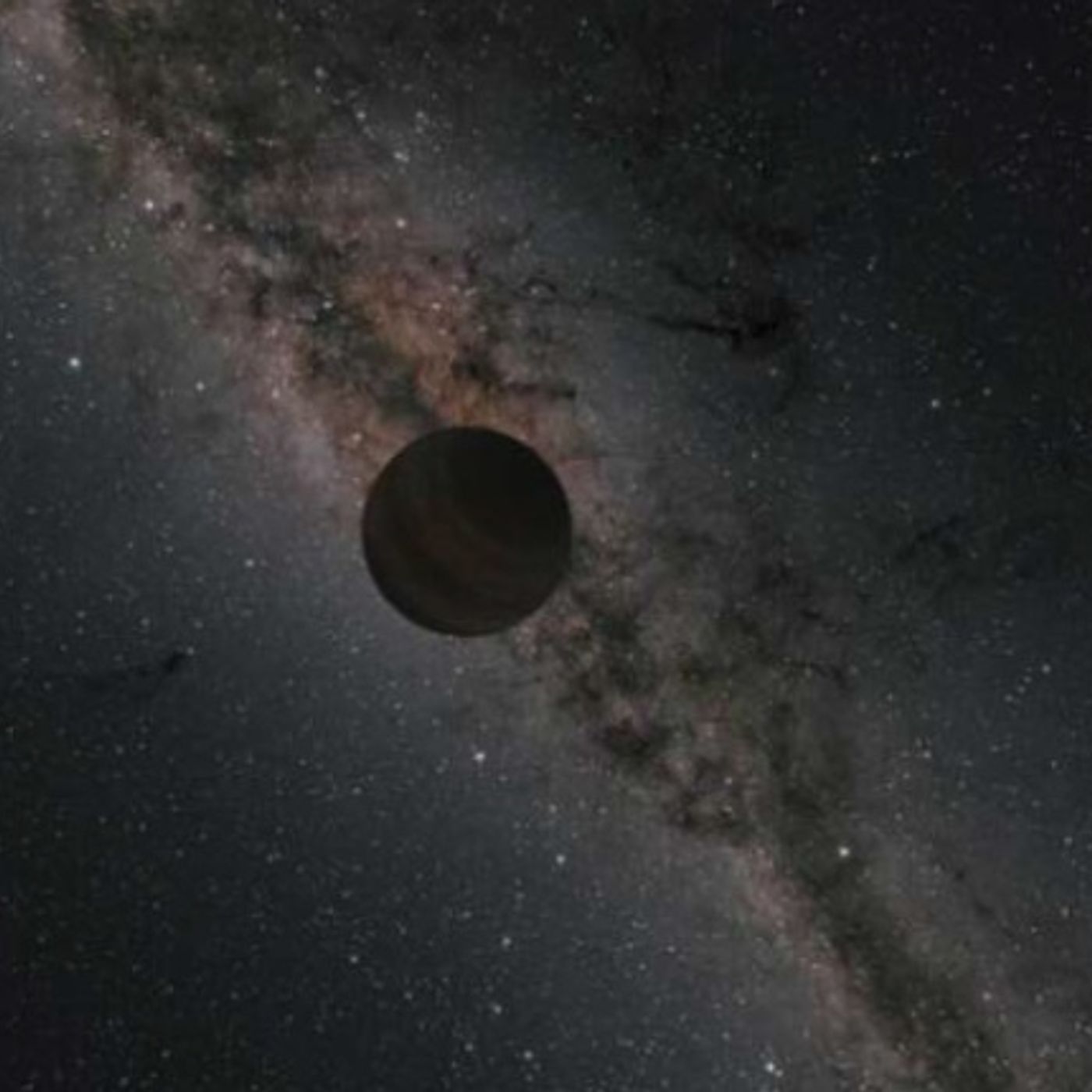 Travelers In The Night817-Interstellar Travelers In The NightAs astronomers learned to measure the distance to the stars and how the laws of Physics works with rockets, it seemed that travel between the stars would take so much energy and time to get there that interstellar travel is a remote possibility at best. On the other hand, objects have been discovered being ejected from our solar system by a close encounter with Jupiter.Recently a team of researchers identified a region of our solar system where interstellar comets, asteroids, and even rouge planets might permanently reside after being captured by the Sun’s gravity.2024-10-0402 min
Travelers In The Night817-Interstellar Travelers In The NightAs astronomers learned to measure the distance to the stars and how the laws of Physics works with rockets, it seemed that travel between the stars would take so much energy and time to get there that interstellar travel is a remote possibility at best. On the other hand, objects have been discovered being ejected from our solar system by a close encounter with Jupiter.Recently a team of researchers identified a region of our solar system where interstellar comets, asteroids, and even rouge planets might permanently reside after being captured by the Sun’s gravity.2024-10-0402 min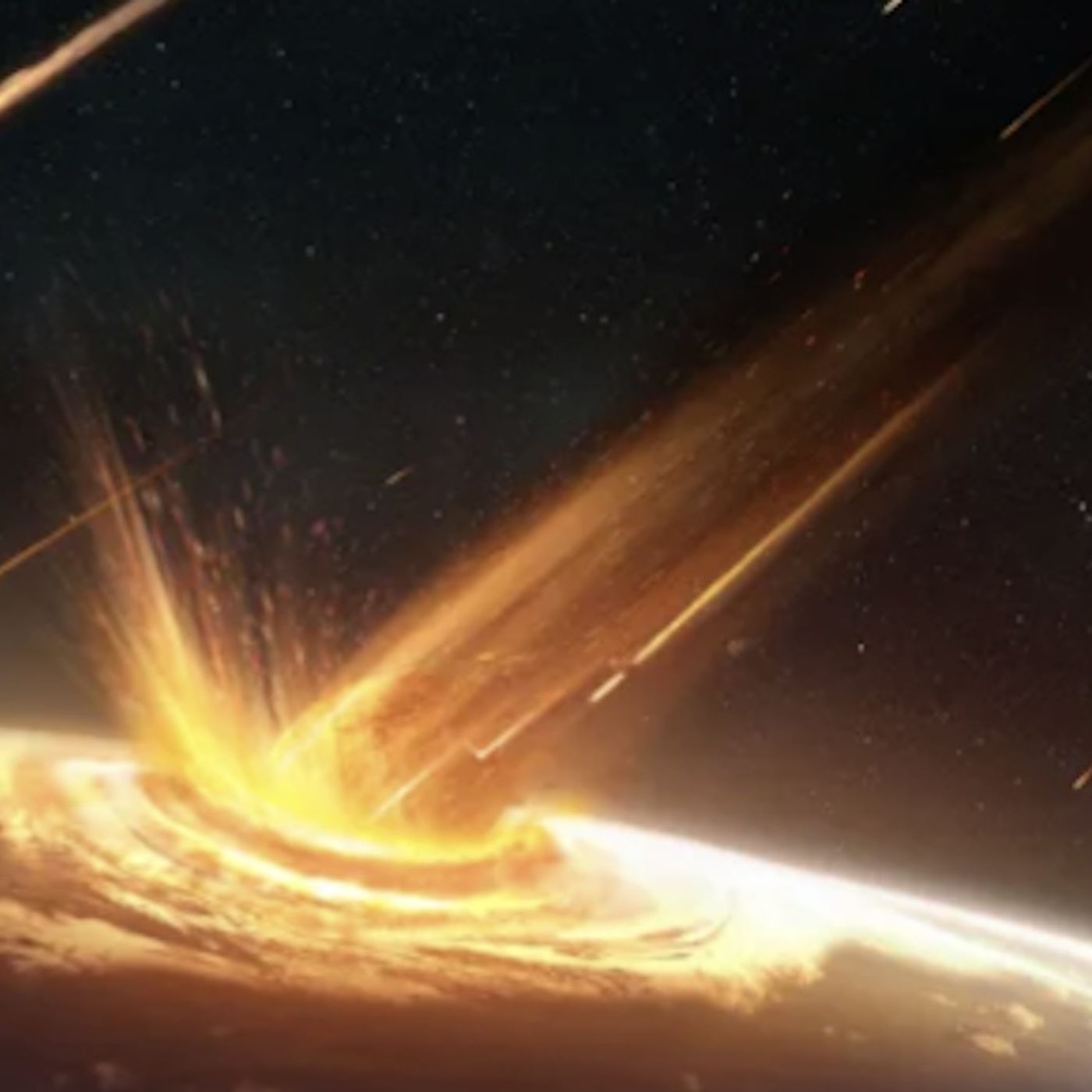 Travelers In The Night304E-323-Big SplashTo discover what would happen if an asteroid were to strike a large body of water, Dr. Galen Gisler led a team of scientists who used high performance computing facilities at Los Alamos National Laboratory to calculate and visualize a 3-D model of an asteroid entering the Earth's atmosphere over one of the world's oceans. These efforts won them the Best Visualization and Data Analytics Showcase award at Supercomputing 2016. Reality is that what happens depends upon the mass, size, speed, angle of approach, and composition of the impacting object. Galen's group of scientists documented the hunch that since an asteroid...2024-10-0102 min
Travelers In The Night304E-323-Big SplashTo discover what would happen if an asteroid were to strike a large body of water, Dr. Galen Gisler led a team of scientists who used high performance computing facilities at Los Alamos National Laboratory to calculate and visualize a 3-D model of an asteroid entering the Earth's atmosphere over one of the world's oceans. These efforts won them the Best Visualization and Data Analytics Showcase award at Supercomputing 2016. Reality is that what happens depends upon the mass, size, speed, angle of approach, and composition of the impacting object. Galen's group of scientists documented the hunch that since an asteroid...2024-10-0102 min Travelers In The Night816-David's Close Approaching CometMy Catalina Sky Survey Teammate David Rankin was asteroid hunting in the constellation of Pegasus with our 60 inch telescope on Mt. Lemmon, AZ when he spotted a faint fuzzy object moving through a set of his images.David’s discovery is classified to be one of the more than 30 Encke type comets. This family small solar system objects have orbital periods about the Sun similar to their namesake comet 2P/Encke’s orbital period of 3.3 years2024-09-2702 min
Travelers In The Night816-David's Close Approaching CometMy Catalina Sky Survey Teammate David Rankin was asteroid hunting in the constellation of Pegasus with our 60 inch telescope on Mt. Lemmon, AZ when he spotted a faint fuzzy object moving through a set of his images.David’s discovery is classified to be one of the more than 30 Encke type comets. This family small solar system objects have orbital periods about the Sun similar to their namesake comet 2P/Encke’s orbital period of 3.3 years2024-09-2702 min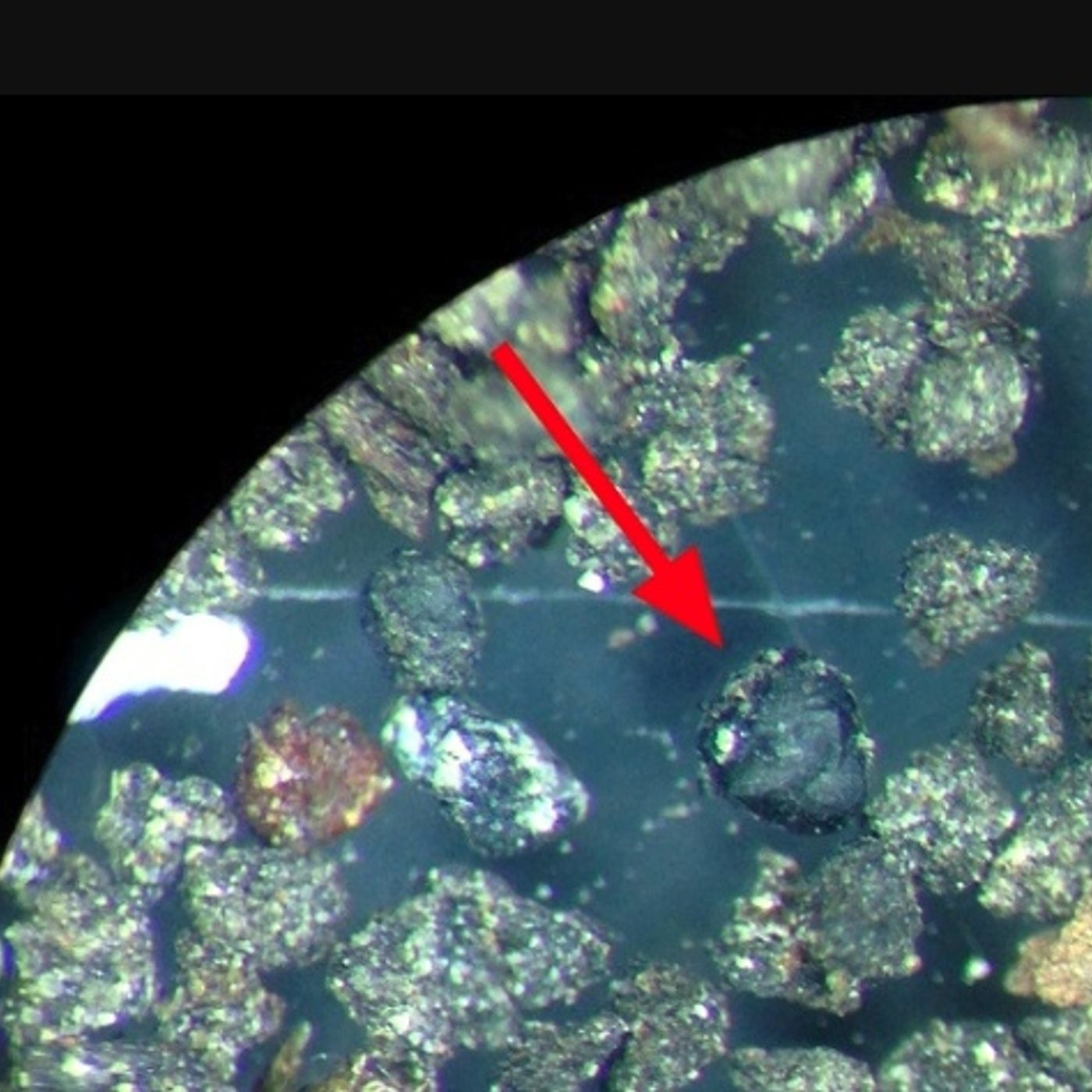 Travelers In The Night303E-322-Dust StoriesCollect your own beautiful micro-meteorite sample. It is estimated that several hundred thousand pounds of left over particles from the formation of our solar system enters the Earth's atmosphere every day with perhaps 10% of the of the total reaching the surface of our home planet. The individual grains of cosmic dust or micro-meteorites as they are also called range in size from the diameter of a human hair to twice the thickness of a dime.2024-09-2402 min
Travelers In The Night303E-322-Dust StoriesCollect your own beautiful micro-meteorite sample. It is estimated that several hundred thousand pounds of left over particles from the formation of our solar system enters the Earth's atmosphere every day with perhaps 10% of the of the total reaching the surface of our home planet. The individual grains of cosmic dust or micro-meteorites as they are also called range in size from the diameter of a human hair to twice the thickness of a dime.2024-09-2402 min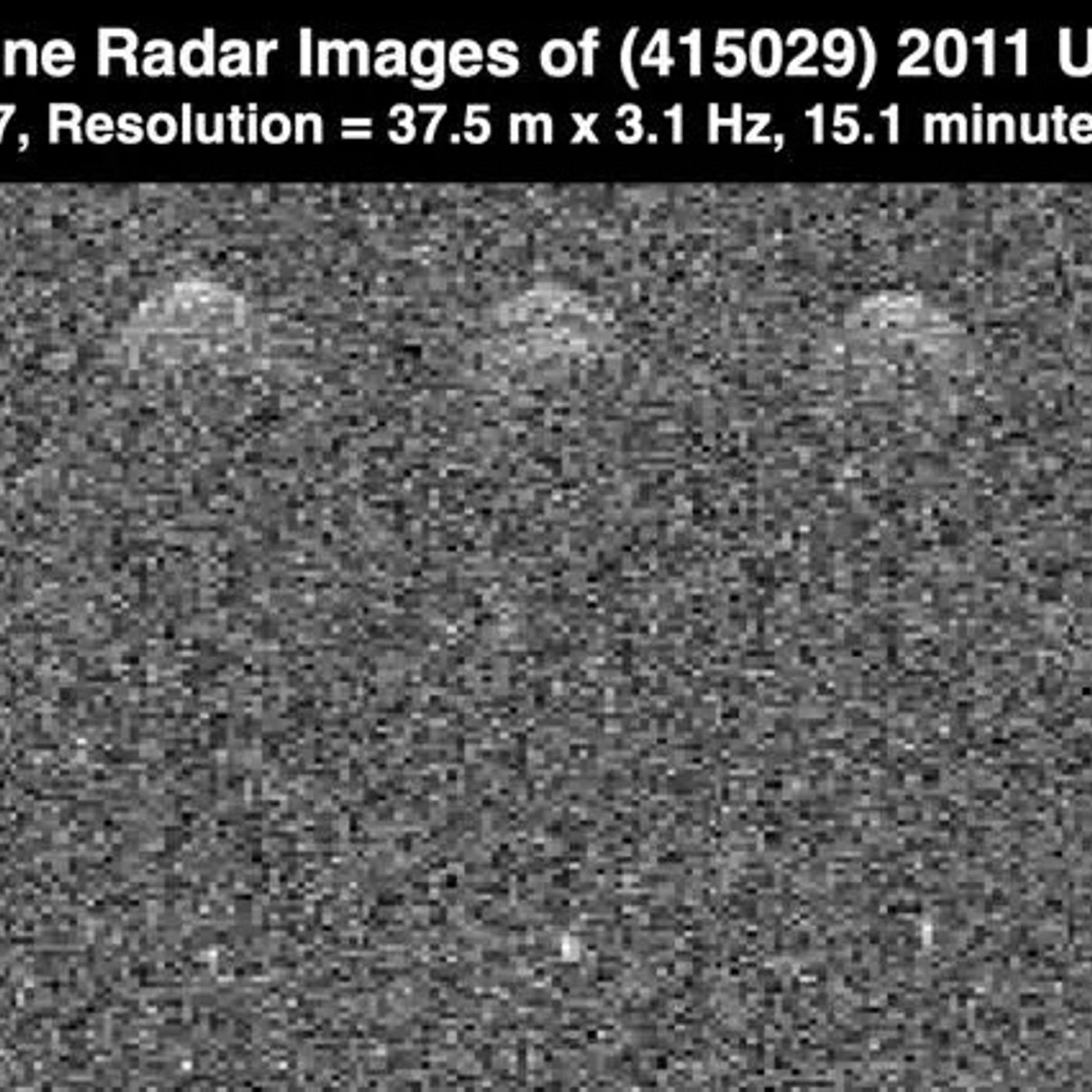 Travelers In The Night815-RADAR Observes Binary PHARADAR is very powerful tool since it can precisely measure an asteroid’s position and velocity as well as in some cases yield information about its size, shape, and other characteristics.2024-09-2002 min
Travelers In The Night815-RADAR Observes Binary PHARADAR is very powerful tool since it can precisely measure an asteroid’s position and velocity as well as in some cases yield information about its size, shape, and other characteristics.2024-09-2002 min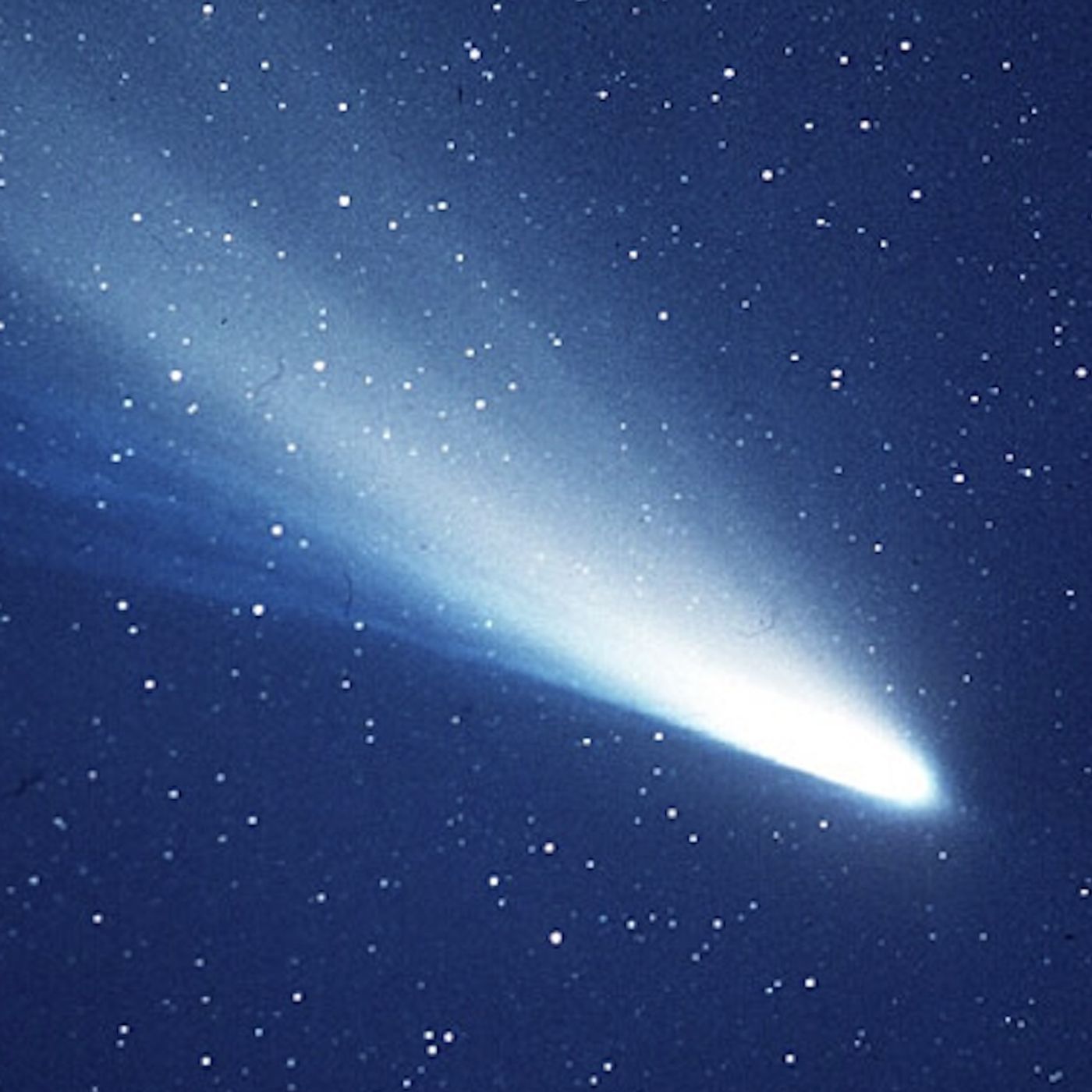 Travelers In The Night302E-321-Dangereous CometProtection against a comet strike is worth considering. Every year, if we are lucky, several comets can come close enough for the Sun to warm and us to see the beautiful changing dust and gas clouds around them with binoculars or our unaided eyes. So far asteroids have gotten most of the attention as dangerous celestial neighbors, however, Dr. Joseph Nuth, a researcher at NASA's Goddard Space Flight Center in Greenbelt, Maryland recently pointed out "Comets can also deliver a heaping helping of calamity to Earth, and scientists and policymakers alike should start taking measures to combat the threat".2024-09-1702 min
Travelers In The Night302E-321-Dangereous CometProtection against a comet strike is worth considering. Every year, if we are lucky, several comets can come close enough for the Sun to warm and us to see the beautiful changing dust and gas clouds around them with binoculars or our unaided eyes. So far asteroids have gotten most of the attention as dangerous celestial neighbors, however, Dr. Joseph Nuth, a researcher at NASA's Goddard Space Flight Center in Greenbelt, Maryland recently pointed out "Comets can also deliver a heaping helping of calamity to Earth, and scientists and policymakers alike should start taking measures to combat the threat".2024-09-1702 min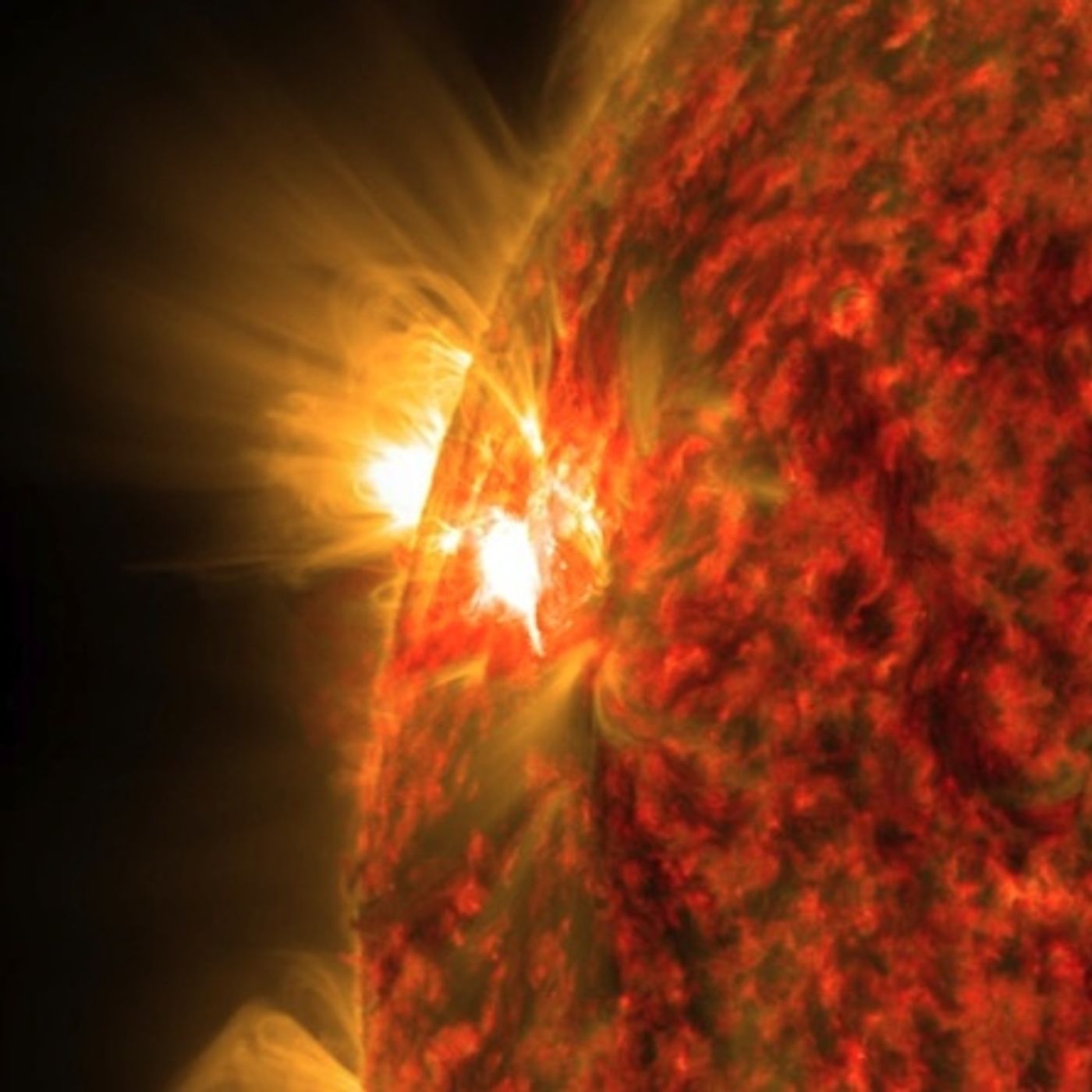 Travelers In The Night814-Threat of Solar StormsSolar storms on our home planet occur when bursts of visible, ultraviolet and other photons hit our atmosphere and/or streams of energetic particles in the solar wind interact with Earth’s magnetic field. Mild solar storms produce beautiful aurora while the most intense ones have the potential to do trillions of dollars in damage to power grids, pipelines, rail networks, aviation, mobile phones, banking, credit card users, GPS, satellite communications, spacecraft, and more.2024-09-1302 min
Travelers In The Night814-Threat of Solar StormsSolar storms on our home planet occur when bursts of visible, ultraviolet and other photons hit our atmosphere and/or streams of energetic particles in the solar wind interact with Earth’s magnetic field. Mild solar storms produce beautiful aurora while the most intense ones have the potential to do trillions of dollars in damage to power grids, pipelines, rail networks, aviation, mobile phones, banking, credit card users, GPS, satellite communications, spacecraft, and more.2024-09-1302 min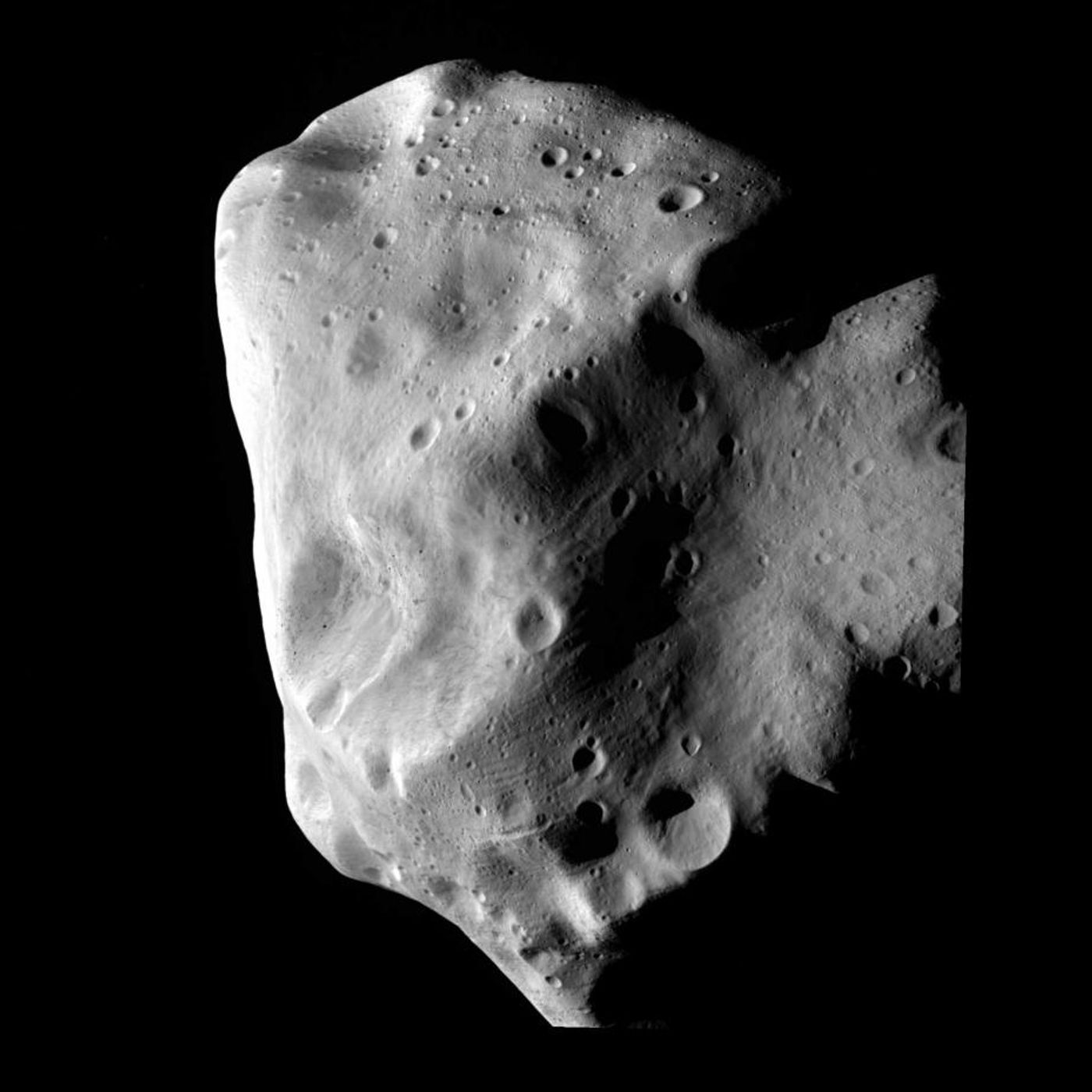 Travelers In The Night301E-320-WOW What a RideIt's a good thing this one will miss Earth. Riding the surface of the asteroid that my Catalina Sky Survey teammate Richard Kowalski recently discovered would be an incredible experience.2024-09-1002 min
Travelers In The Night301E-320-WOW What a RideIt's a good thing this one will miss Earth. Riding the surface of the asteroid that my Catalina Sky Survey teammate Richard Kowalski recently discovered would be an incredible experience.2024-09-1002 min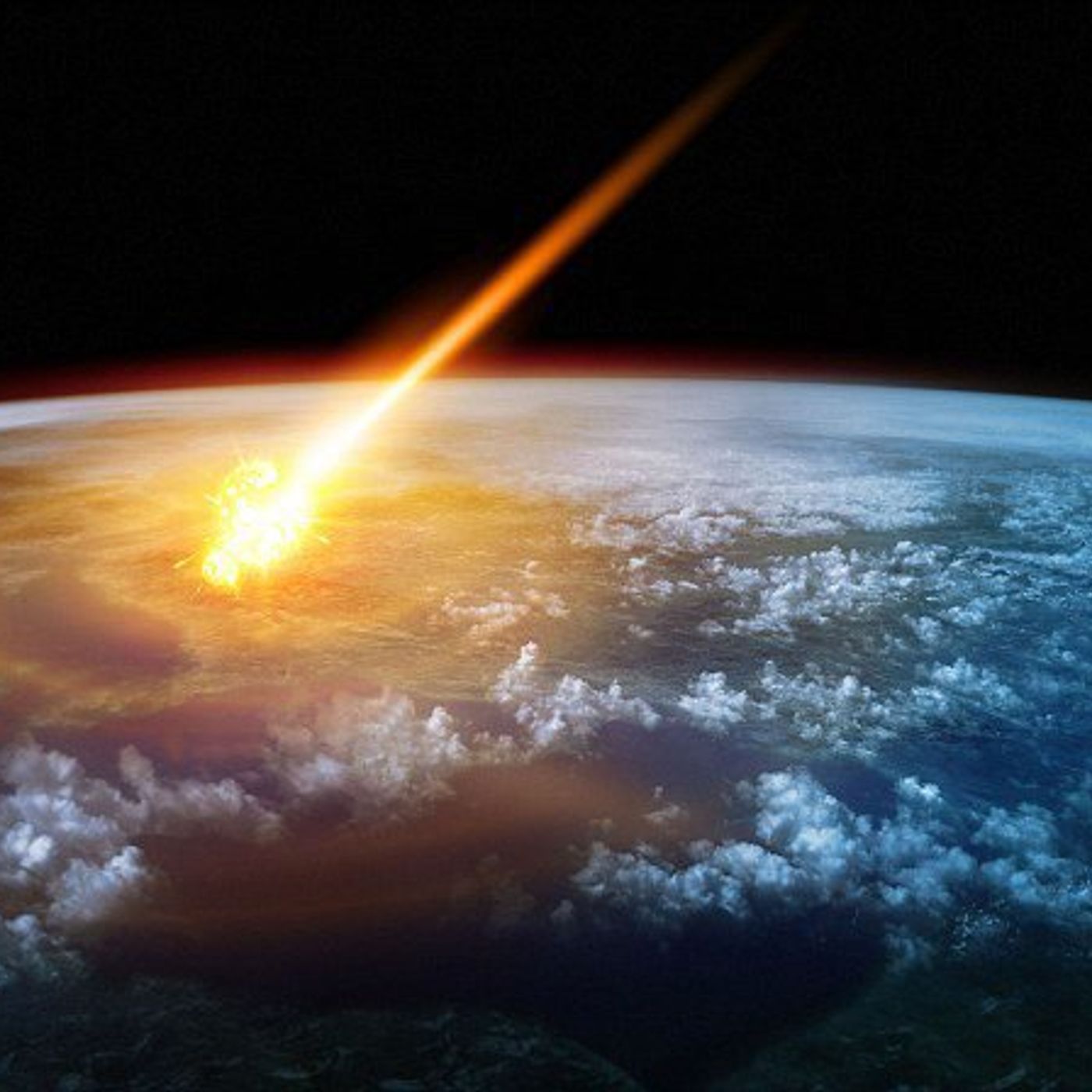 Travelers In The Night813-RADAR Observations of Close ApproacherAstronomers measure an asteroid’s position on the sky using a two dimensional system similar to the latitude and longitude coordinates we obtain with our GPS. For the vast majority of asteroids, we cannot measure the third dimension, the distance to the asteroid directly.2024-09-0602 min
Travelers In The Night813-RADAR Observations of Close ApproacherAstronomers measure an asteroid’s position on the sky using a two dimensional system similar to the latitude and longitude coordinates we obtain with our GPS. For the vast majority of asteroids, we cannot measure the third dimension, the distance to the asteroid directly.2024-09-0602 min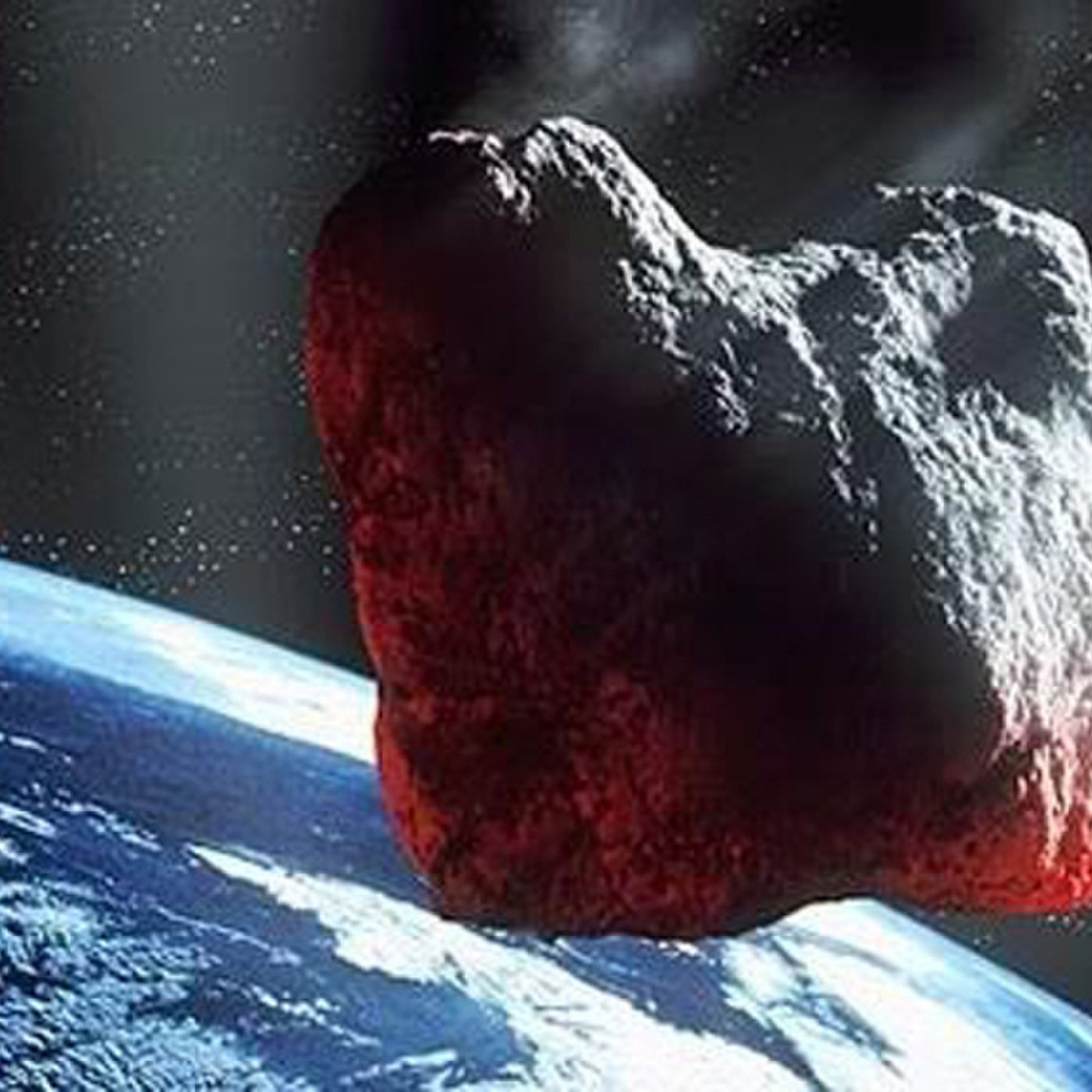 Travelers In The Night300E-319-Lost and FoundWhen asteroid hunters follow an object in the night sky for a few hours or a couple of days they are only able to observe a snippet or tracklet of the object's hundreds to thousands of days long path around the Sun. If we only have a short sample of an orbit we loose precision to locate the object as the length of time since the last observation increases. It is thus possible to lose the knowledge of where to find a particular asteroid.2024-09-0302 min
Travelers In The Night300E-319-Lost and FoundWhen asteroid hunters follow an object in the night sky for a few hours or a couple of days they are only able to observe a snippet or tracklet of the object's hundreds to thousands of days long path around the Sun. If we only have a short sample of an orbit we loose precision to locate the object as the length of time since the last observation increases. It is thus possible to lose the knowledge of where to find a particular asteroid.2024-09-0302 min Travelers In The Night812-The Benu Files IA recent scientific paper characterizes the 123 grams of the regolith or surface material from the asteroid Bennu which NASA’s OSIRIS-REx spacecraft brought back to Earth after a successful 7 year sample and return mission.Determining the chemical composition of asteroids like Bennu is essential to planning asteroid mining missions as well how to best mitigate the damage which would result from the impact of a large asteroid with our number on it.2024-08-3002 min
Travelers In The Night812-The Benu Files IA recent scientific paper characterizes the 123 grams of the regolith or surface material from the asteroid Bennu which NASA’s OSIRIS-REx spacecraft brought back to Earth after a successful 7 year sample and return mission.Determining the chemical composition of asteroids like Bennu is essential to planning asteroid mining missions as well how to best mitigate the damage which would result from the impact of a large asteroid with our number on it.2024-08-3002 min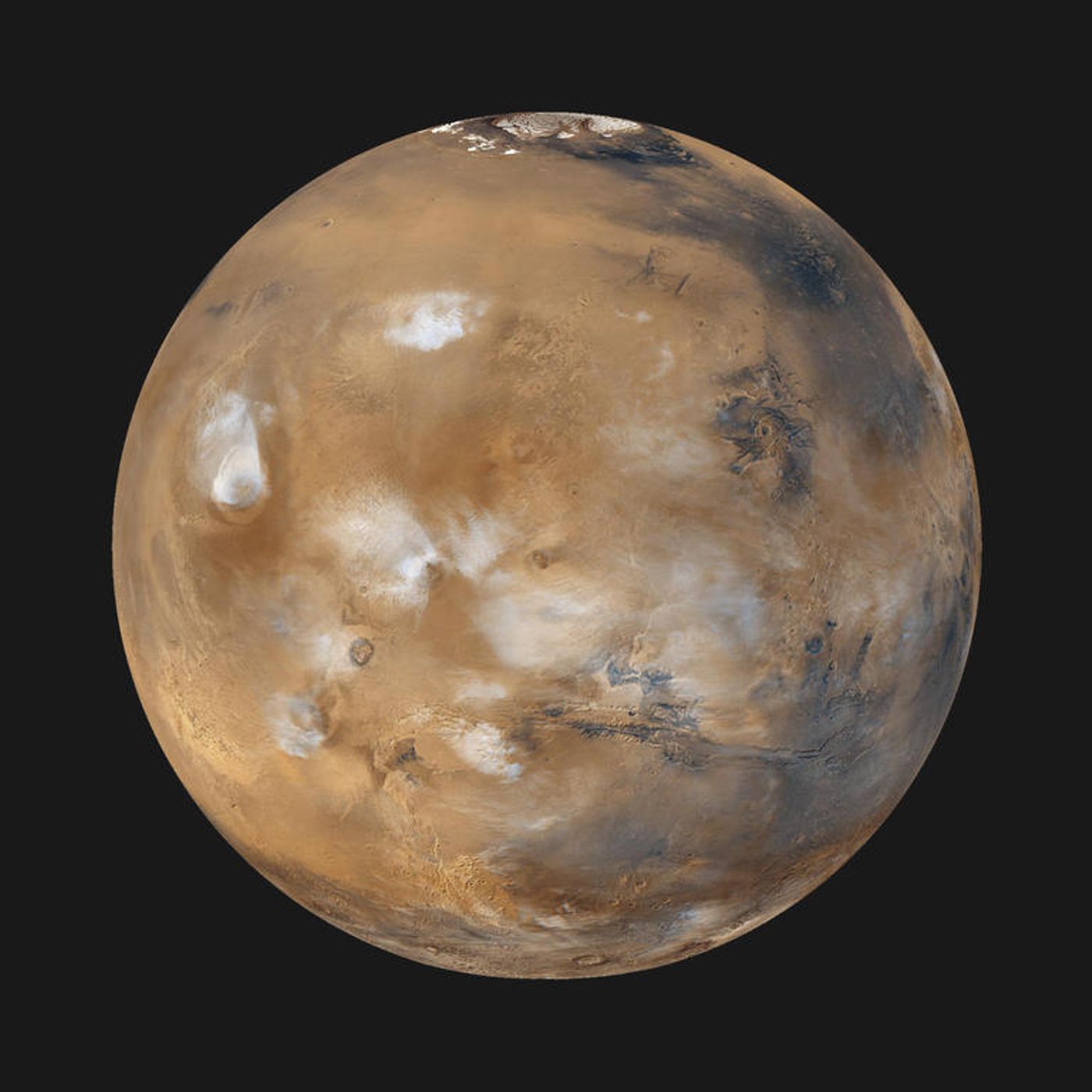 Travelers In The Night299E-318-Caves of MarsPresently the surface of Mars is very dry and any liquid water that reaches it quickly boils away since the martian atmospheric pressure is what you could experience in your space suit 30 to 50 miles above the Earth's surface. However, since the martian gravity is about 1/3 that of the Earth, it's crust is less dense and more porous than what we find on our home planet. This situation leads Dr. Alfred McEwen of the University of Arizona's Lunar and Planetary Laboratory to state “I consider it likely that there are deep pockets of water in the martian crust not yet detected”. Lett...2024-08-2702 min
Travelers In The Night299E-318-Caves of MarsPresently the surface of Mars is very dry and any liquid water that reaches it quickly boils away since the martian atmospheric pressure is what you could experience in your space suit 30 to 50 miles above the Earth's surface. However, since the martian gravity is about 1/3 that of the Earth, it's crust is less dense and more porous than what we find on our home planet. This situation leads Dr. Alfred McEwen of the University of Arizona's Lunar and Planetary Laboratory to state “I consider it likely that there are deep pockets of water in the martian crust not yet detected”. Lett...2024-08-2702 min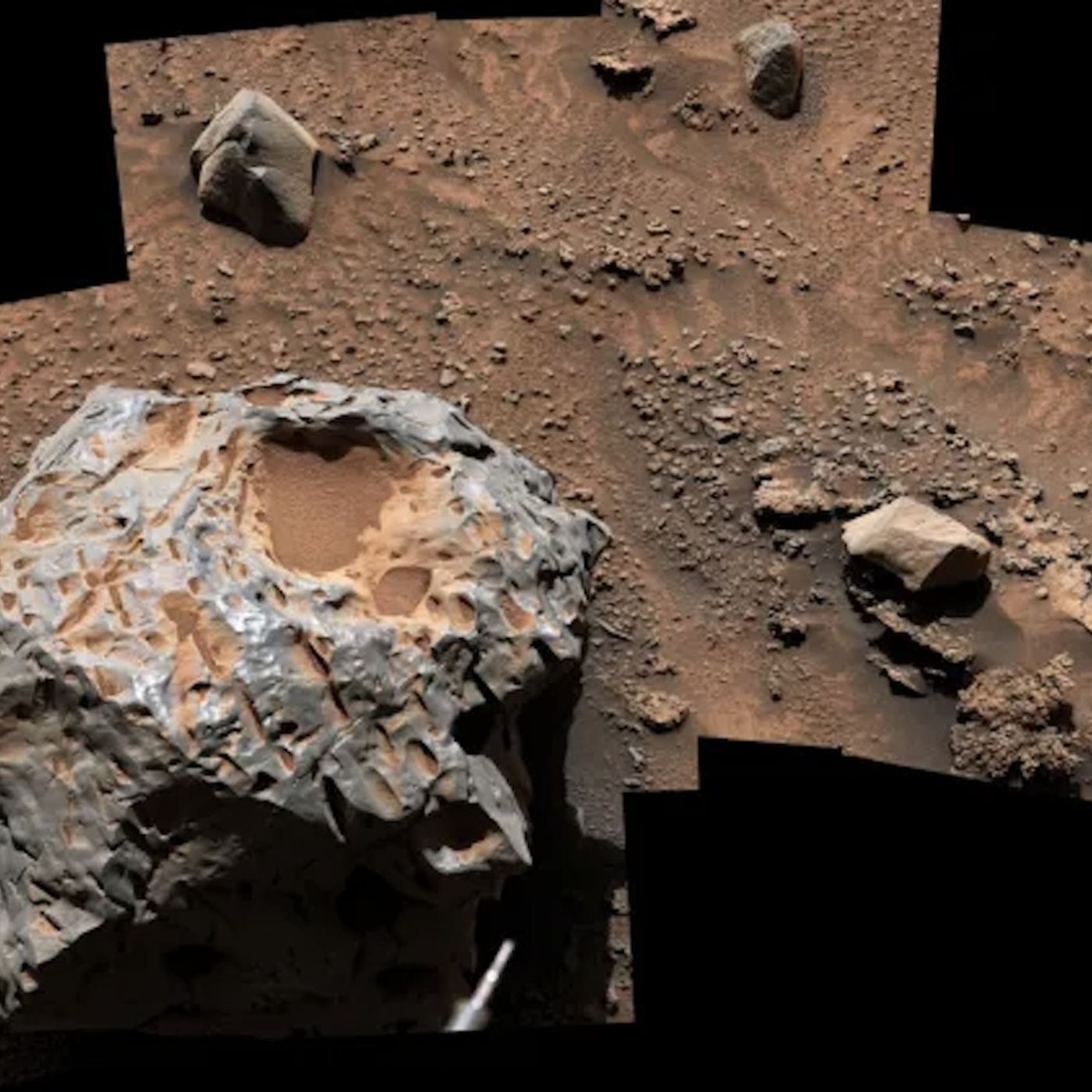 Travelers In The Night811-Martian Meteroite HuntersPerhaps someday humans will travel to Mars, walk the surface of the red planet, and collect meteorites. Recent studies suggest Mars to be an exciting place to find ancient relics of our solar system2024-08-2302 min
Travelers In The Night811-Martian Meteroite HuntersPerhaps someday humans will travel to Mars, walk the surface of the red planet, and collect meteorites. Recent studies suggest Mars to be an exciting place to find ancient relics of our solar system2024-08-2302 min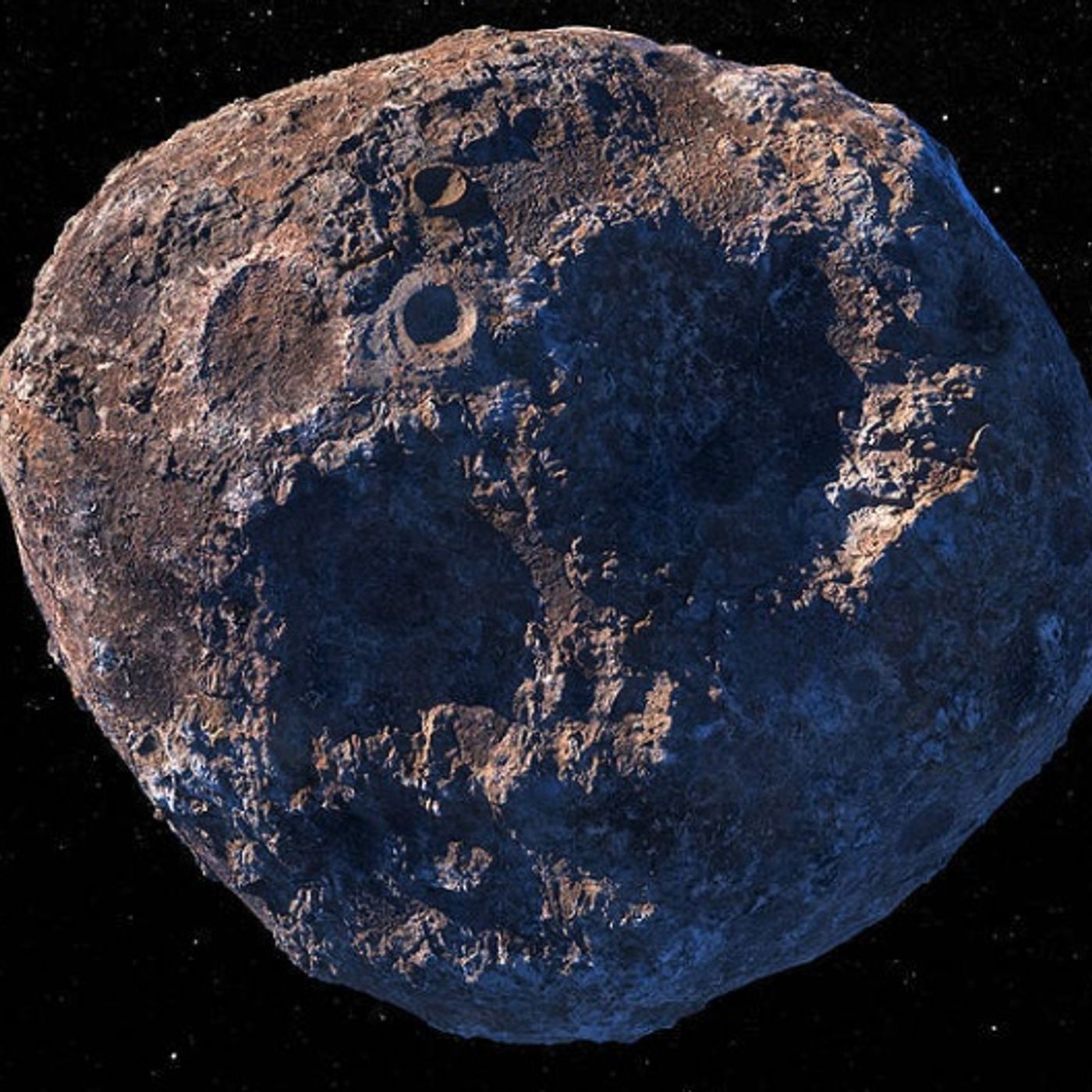 Travelers In The Night298E-317-Psyche WaterThe asteroid Psyche may be one of the most expensive pieces of real estate in the solar system. It is a small world about 116 miles in diameter and is composed of almost pure nickel-iron metal. It is located in the asteroid belt between Mars and Jupiter. Scientists find evidence that Psyche may be the exposed core of a planet which was destroyed by collisions as it was trying to form long ago.2024-08-2002 min
Travelers In The Night298E-317-Psyche WaterThe asteroid Psyche may be one of the most expensive pieces of real estate in the solar system. It is a small world about 116 miles in diameter and is composed of almost pure nickel-iron metal. It is located in the asteroid belt between Mars and Jupiter. Scientists find evidence that Psyche may be the exposed core of a planet which was destroyed by collisions as it was trying to form long ago.2024-08-2002 min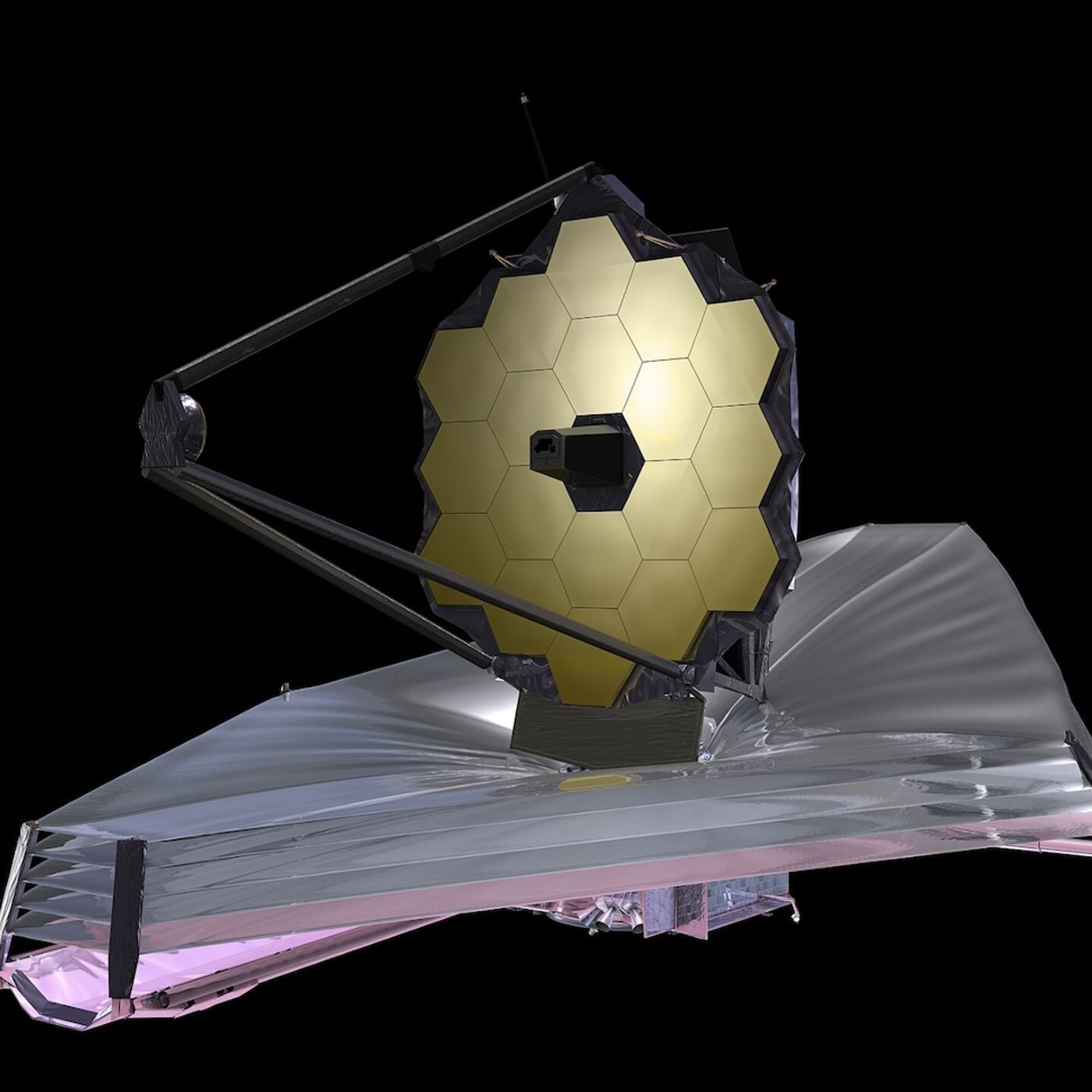 Travelers In The Night810-Humans CanThe James Webb Space Telescope or JWST for short is a superb scientific instrument which is revolutionizing our understanding of the structure of the universe and is providing a tool to help us to explore the possibility of life outside of Earth. It is also a testament to what humans can accomplish by working together.2024-08-1602 min
Travelers In The Night810-Humans CanThe James Webb Space Telescope or JWST for short is a superb scientific instrument which is revolutionizing our understanding of the structure of the universe and is providing a tool to help us to explore the possibility of life outside of Earth. It is also a testament to what humans can accomplish by working together.2024-08-1602 min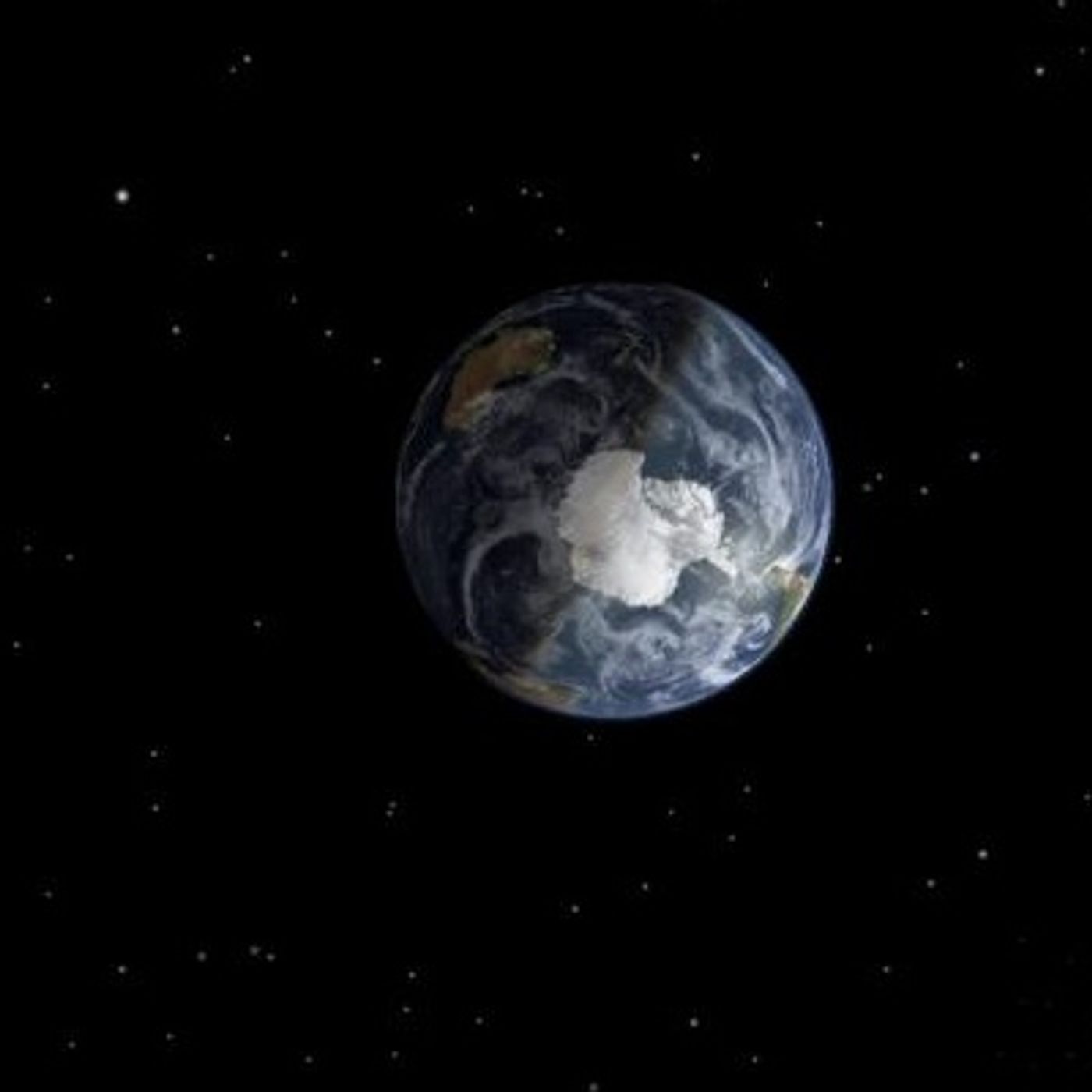 Travelers In The Night297E-316-Weird CentaurMy Catalina Sky Survey teammate Richard Kowalski was surprised to find a moving point of light on some his images which was more than 50 times brighter than a typical Earth approaching object he observes . He was even more amazed when it was not cataloged as a known object and he reported his observations to the Minor Planet Center. A couple of hours before Richard spotted it, scientists using the Space Surveillance Telescope in New Mexico had picked up this unknown object on some of their images but did not immediately report their observations. For the next 67 hours the new object...2024-08-1302 min
Travelers In The Night297E-316-Weird CentaurMy Catalina Sky Survey teammate Richard Kowalski was surprised to find a moving point of light on some his images which was more than 50 times brighter than a typical Earth approaching object he observes . He was even more amazed when it was not cataloged as a known object and he reported his observations to the Minor Planet Center. A couple of hours before Richard spotted it, scientists using the Space Surveillance Telescope in New Mexico had picked up this unknown object on some of their images but did not immediately report their observations. For the next 67 hours the new object...2024-08-1302 min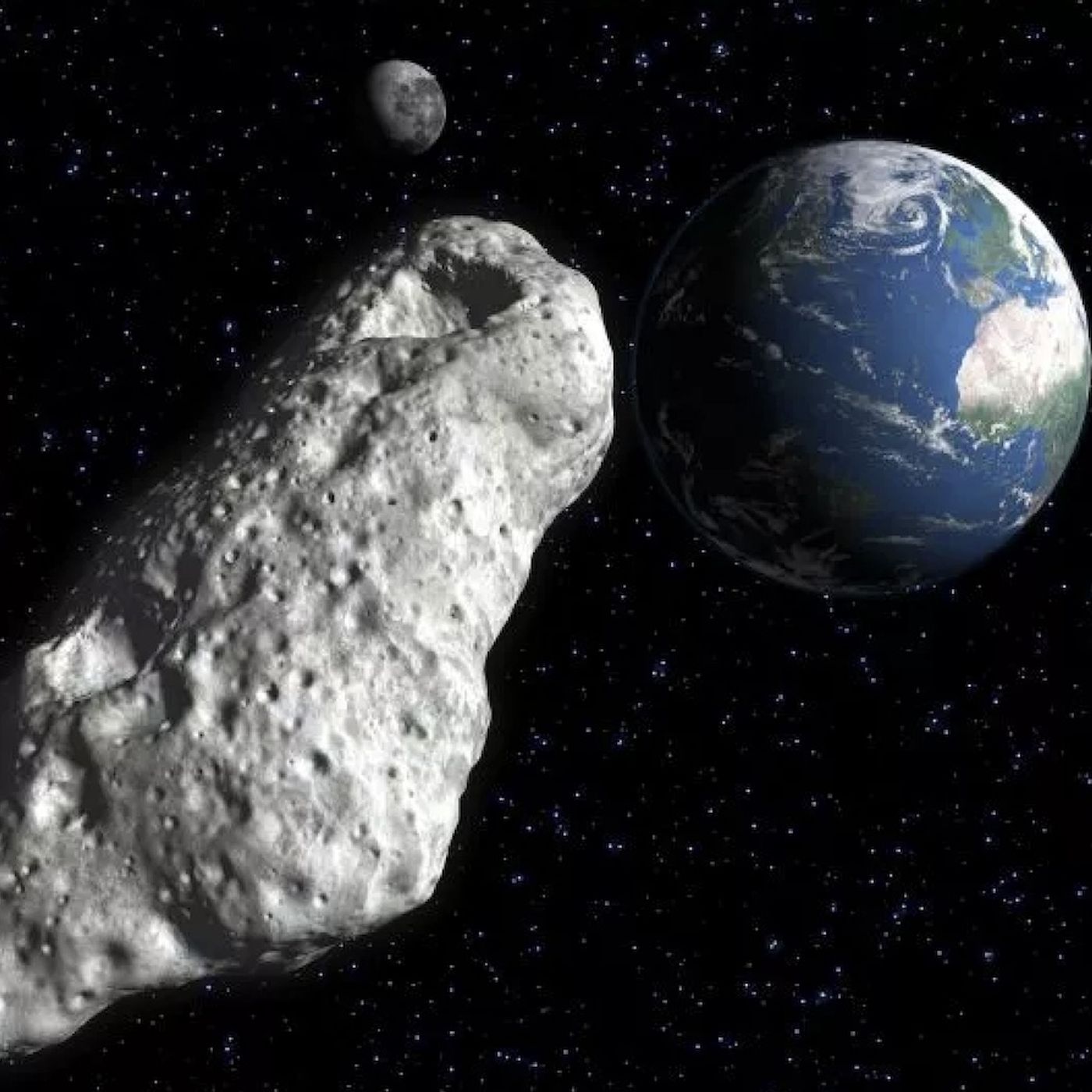 Travelers In The Night809- How Close Can An Asteroid ApproachThe Earth Minimum Orbit Intersection Distance or Earth MOID for short is the closest an asteroid can come to our home planet on it's current orbit.2024-08-0902 min
Travelers In The Night809- How Close Can An Asteroid ApproachThe Earth Minimum Orbit Intersection Distance or Earth MOID for short is the closest an asteroid can come to our home planet on it's current orbit.2024-08-0902 min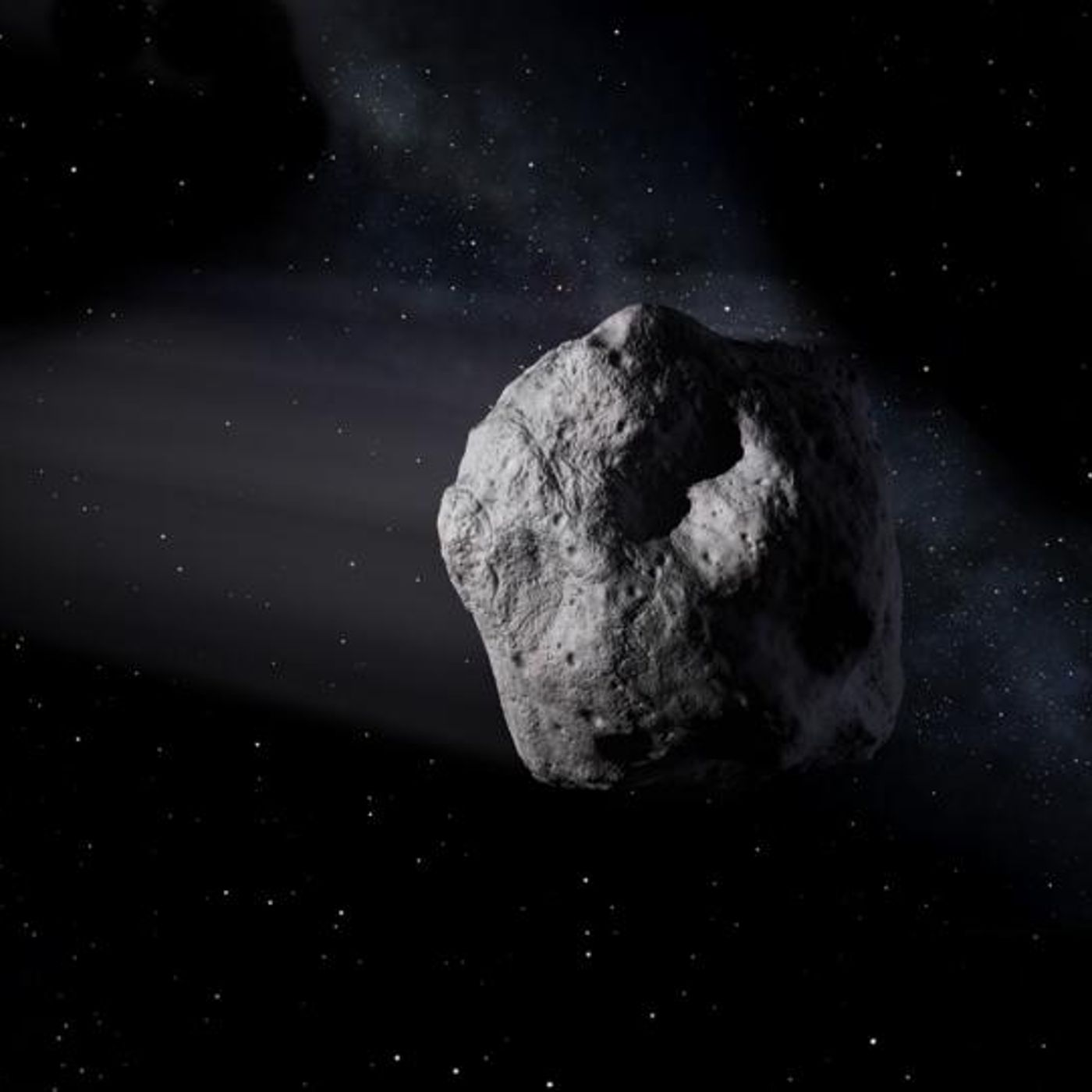 Travelers In The Night296E-314-Our NumberRecently my Catalina Sky Survey teammate Greg Leonard discovered, 2016 WJ1, a relatively large asteroid which can come close but will not hit the Earth. The extremely unlikely scenario of an impactor with our number on it would start the with the report of a fast moving point of light in the night sky. After a few days of data the Minor Planet Center would give it a name. Tracking the new asteroid, asteroid hunters would be alarmed as the chances that this object will impact the Earth starts to rise. Large telescopes would then be trained on it to obtain...2024-08-0602 min
Travelers In The Night296E-314-Our NumberRecently my Catalina Sky Survey teammate Greg Leonard discovered, 2016 WJ1, a relatively large asteroid which can come close but will not hit the Earth. The extremely unlikely scenario of an impactor with our number on it would start the with the report of a fast moving point of light in the night sky. After a few days of data the Minor Planet Center would give it a name. Tracking the new asteroid, asteroid hunters would be alarmed as the chances that this object will impact the Earth starts to rise. Large telescopes would then be trained on it to obtain...2024-08-0602 min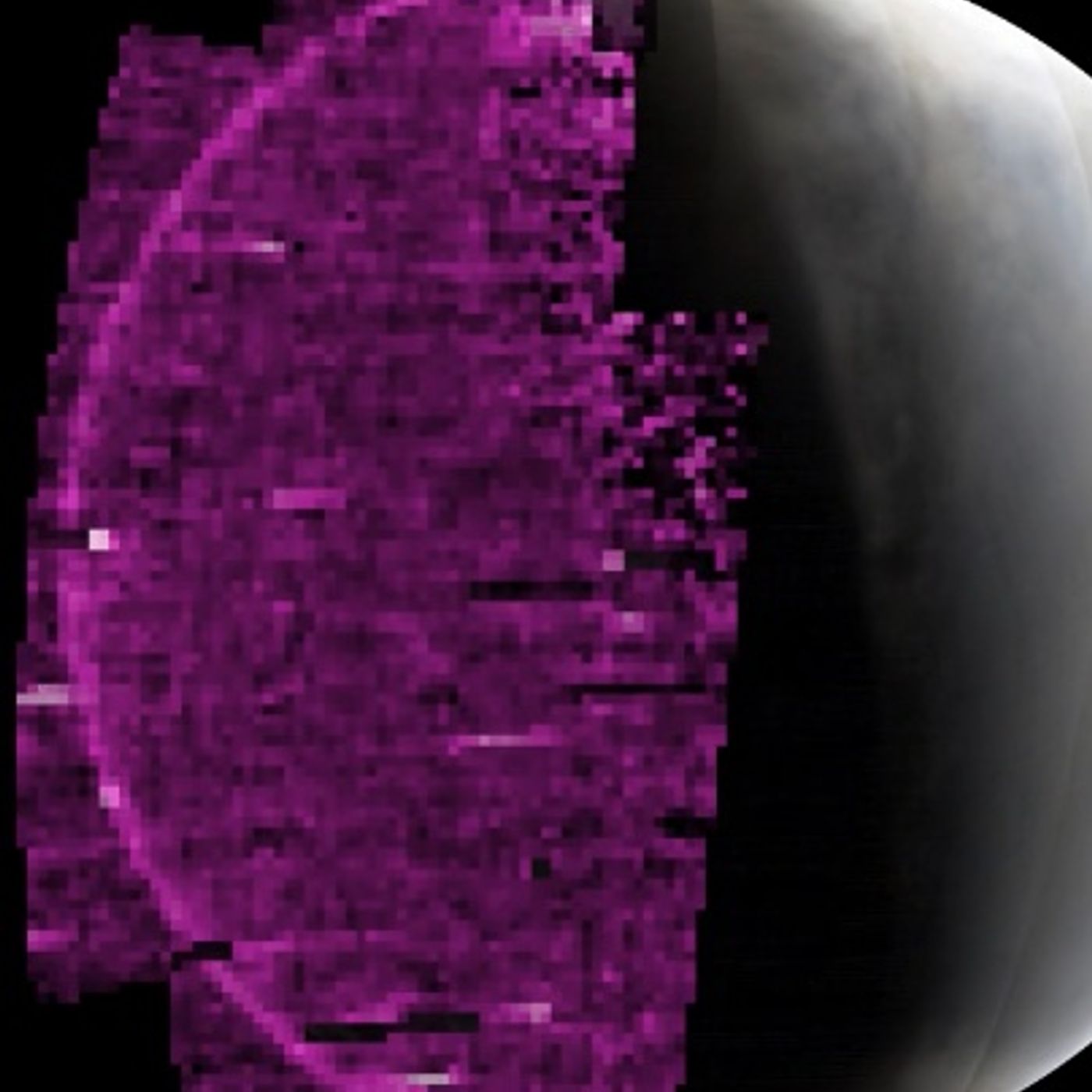 Travelers In The Night808-Global Auroras on MarsWhen the Earth enters a stream of high speed protons and other charged particles in the solar wind or our home planet is impacted by a solar coronal mass ejection the Earth’s strong magnetic field acts a a shield. Mars on the other hand lacks an Earth-like magnetic field and thus has little protection from solar storms.2024-08-0202 min
Travelers In The Night808-Global Auroras on MarsWhen the Earth enters a stream of high speed protons and other charged particles in the solar wind or our home planet is impacted by a solar coronal mass ejection the Earth’s strong magnetic field acts a a shield. Mars on the other hand lacks an Earth-like magnetic field and thus has little protection from solar storms.2024-08-0202 min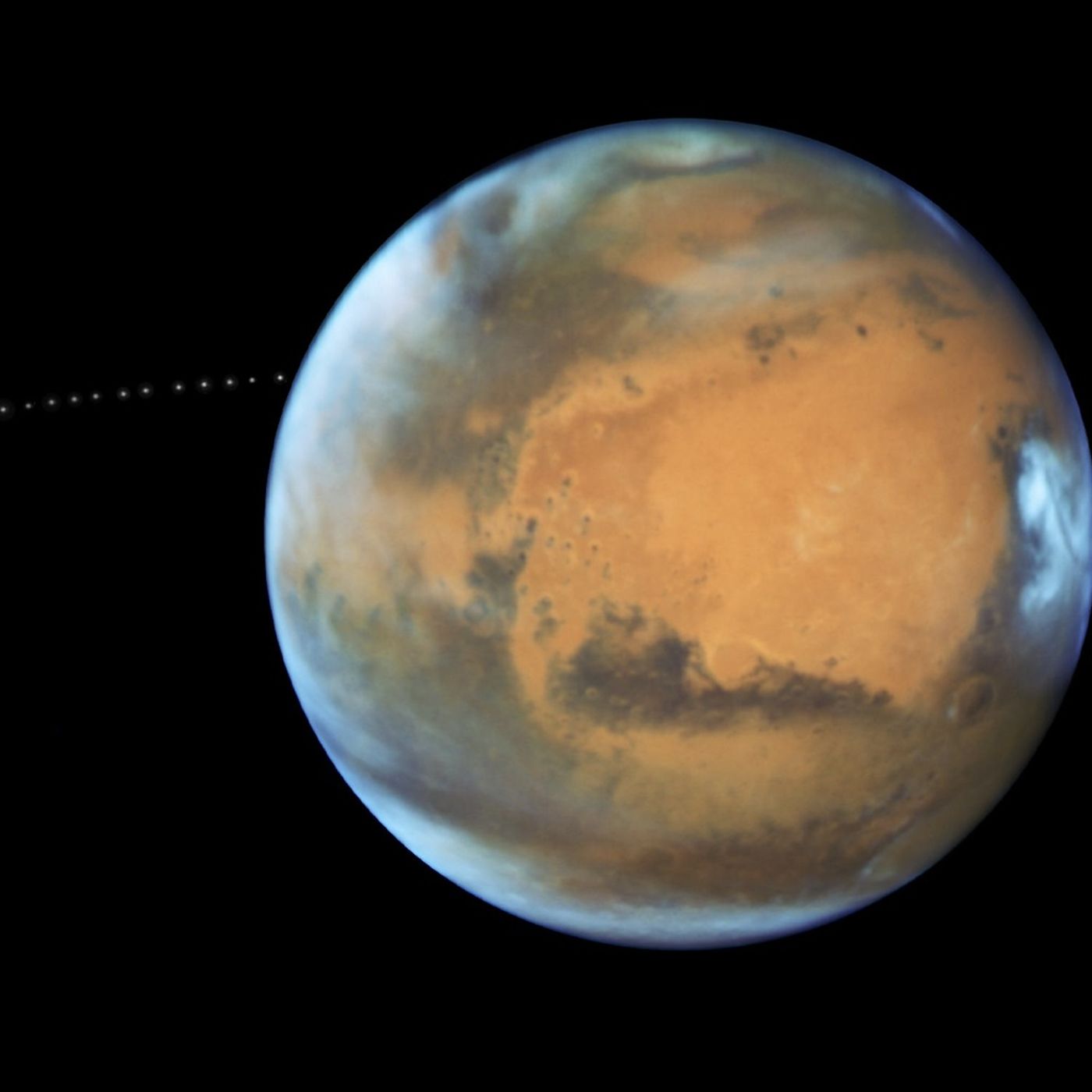 Travelers In The Night295E-313-Martian MotherlodeWater for Martian Colonists Martian colonists will need to create mini environments with air to breathe and water to drink. Energy will be required to keep warm, power the settlement, and enable vehicles to move around the planet.2024-07-3002 min
Travelers In The Night295E-313-Martian MotherlodeWater for Martian Colonists Martian colonists will need to create mini environments with air to breathe and water to drink. Energy will be required to keep warm, power the settlement, and enable vehicles to move around the planet.2024-07-3002 min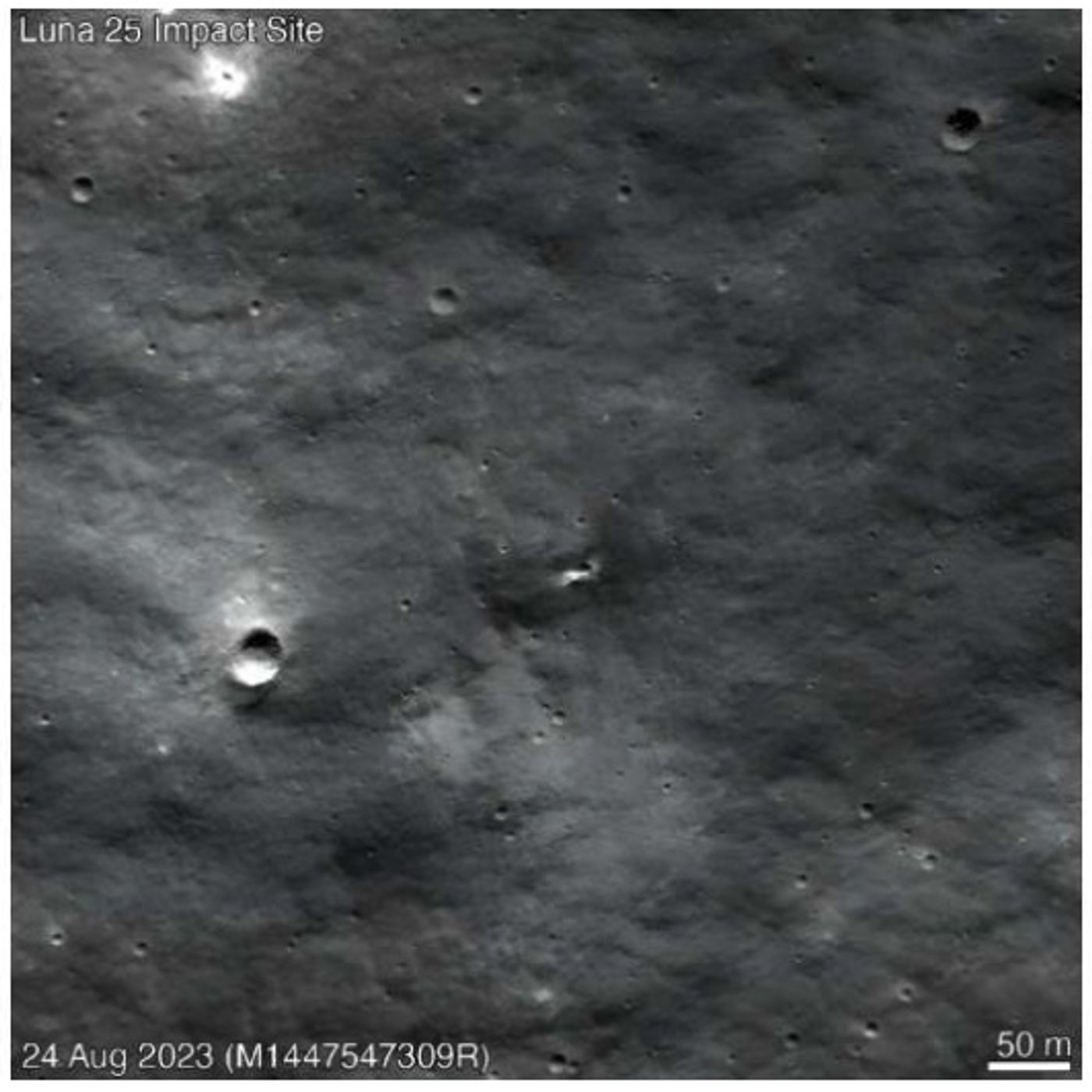 Travelers In The Night807-Moon Orbit CrossersDuring a recent 60 day period of time 23 space rocks came closer to Earth than our Moon2024-07-2602 min
Travelers In The Night807-Moon Orbit CrossersDuring a recent 60 day period of time 23 space rocks came closer to Earth than our Moon2024-07-2602 min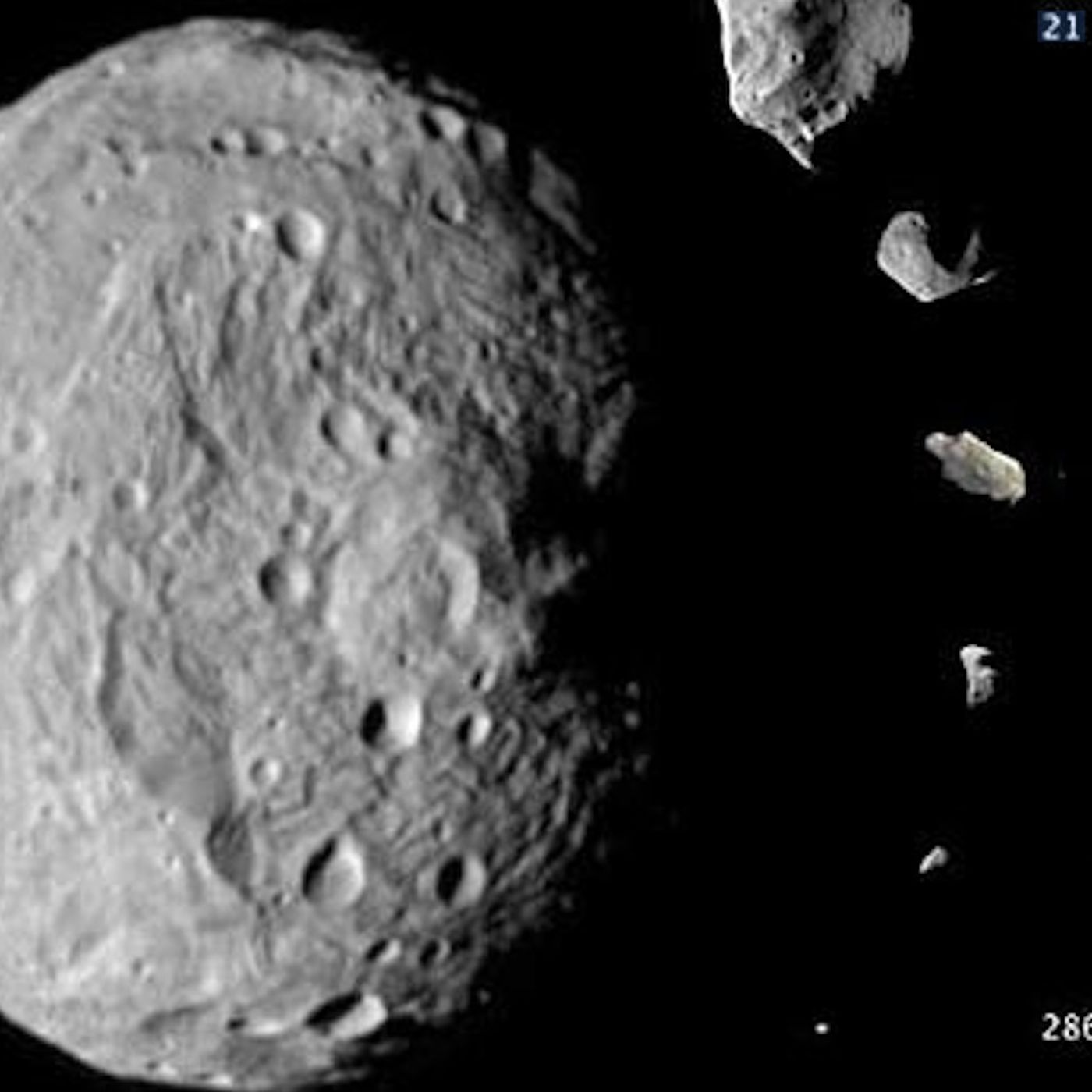 Travelers In The Night294E-312-200 Yards Of TroubleDangerous Asteroids Are Still Out There Recently my Catalina Sky Survey teammate Greg Leonard discovered a rapidly moving point of light in the night sky. Subsequent observations made by telescopes in Arizona, Romania, Illinois, the Czech Republic, Australia, and France revealed it to be a close approaching Potentially Hazardous Asteroid. The Minor Planet Center named it 2016 WJ1. This asteroid is about 200 yards in diameter, orbits the Sun once every 567 days, and currently can come to within about 26,000 miles of the Earth's surface. 2016 WJ1's orbit eventually will bring it near Mars, Earth, our Moon, and Venus. Any of these encounters...2024-07-2302 min
Travelers In The Night294E-312-200 Yards Of TroubleDangerous Asteroids Are Still Out There Recently my Catalina Sky Survey teammate Greg Leonard discovered a rapidly moving point of light in the night sky. Subsequent observations made by telescopes in Arizona, Romania, Illinois, the Czech Republic, Australia, and France revealed it to be a close approaching Potentially Hazardous Asteroid. The Minor Planet Center named it 2016 WJ1. This asteroid is about 200 yards in diameter, orbits the Sun once every 567 days, and currently can come to within about 26,000 miles of the Earth's surface. 2016 WJ1's orbit eventually will bring it near Mars, Earth, our Moon, and Venus. Any of these encounters...2024-07-2302 min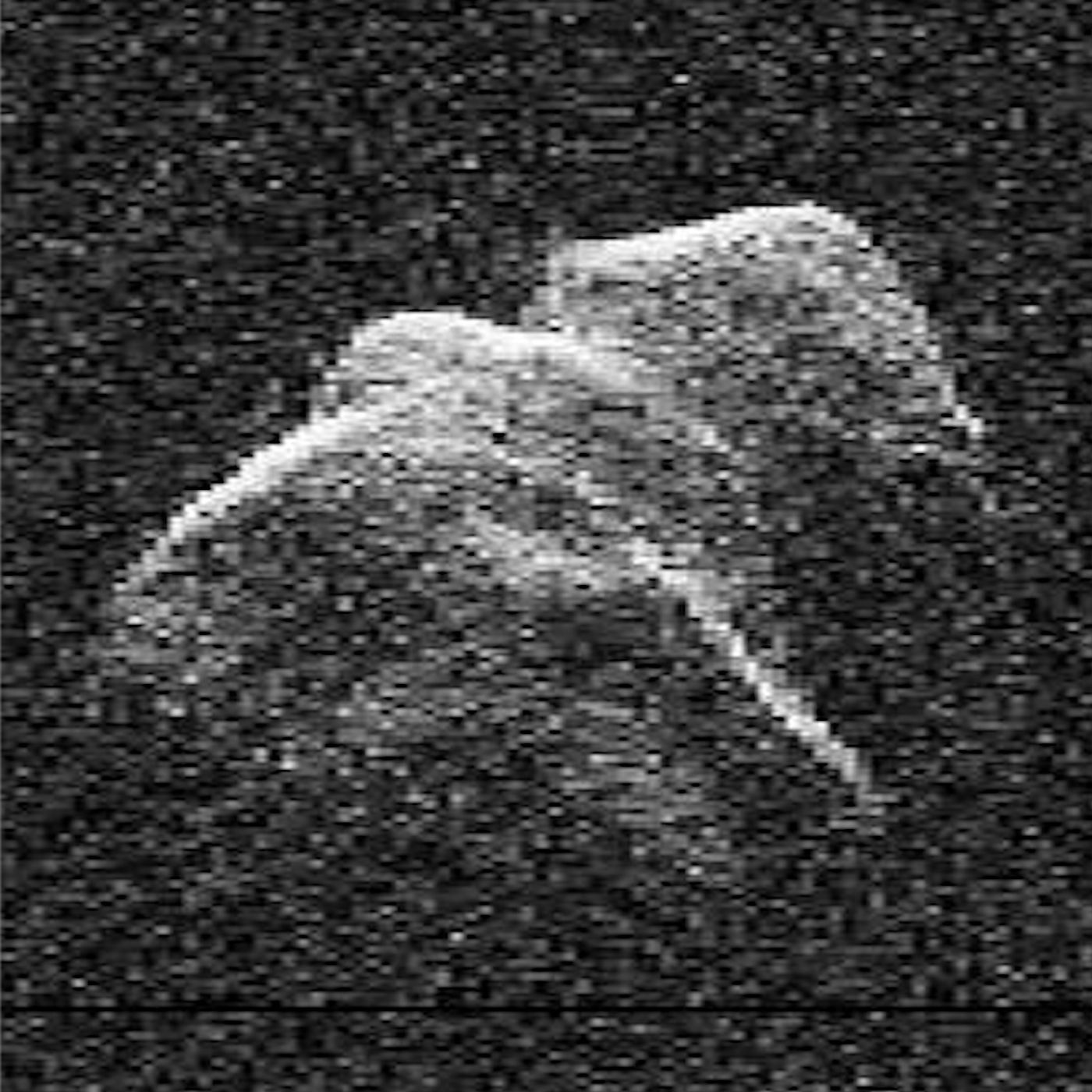 Travelers In The Night806-Distant PHAIt is hard to obtain time on the 8m Gemini South Observatory telescope on Cerro Pachon in Chile and the Large Binocular Telescope with its twin 8m mirrors on Mt. Graham, Arizona since they are among the largest telescopes in the world. My Catalina Sky Survey teammate Kacper Wierzchos wrote a scientifically competitive proposal to obtain the time to track the potentially hazardous asteroid 2016 PR38 on both of these telescopes when it was near its furthest point from our Sun and thus much too faint for the telescopes asteroid hunters routinely use2024-07-1902 min
Travelers In The Night806-Distant PHAIt is hard to obtain time on the 8m Gemini South Observatory telescope on Cerro Pachon in Chile and the Large Binocular Telescope with its twin 8m mirrors on Mt. Graham, Arizona since they are among the largest telescopes in the world. My Catalina Sky Survey teammate Kacper Wierzchos wrote a scientifically competitive proposal to obtain the time to track the potentially hazardous asteroid 2016 PR38 on both of these telescopes when it was near its furthest point from our Sun and thus much too faint for the telescopes asteroid hunters routinely use2024-07-1902 min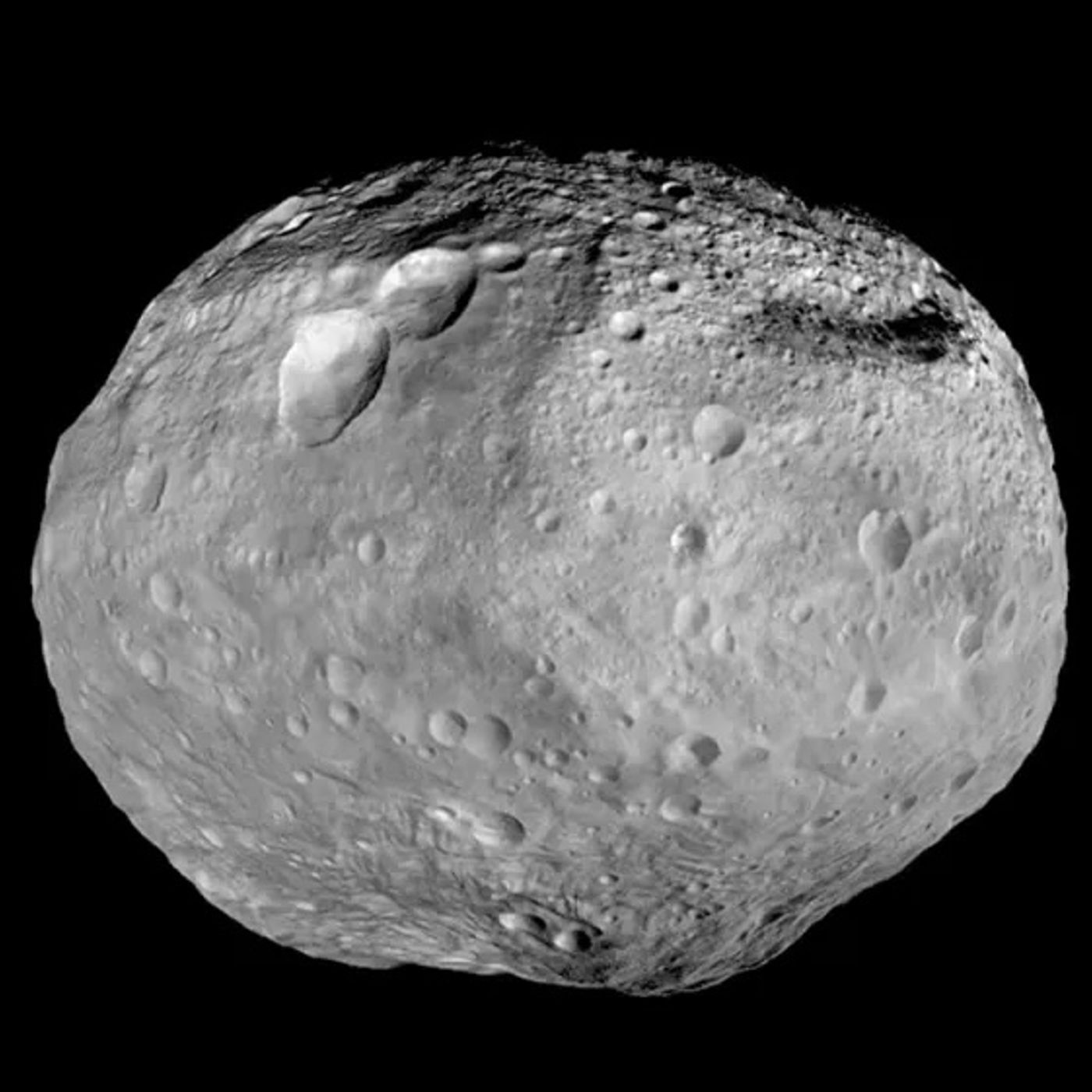 Travelers In The Night293E-311-Bright and BaldMy Catalina Sky Survey teammate Carson Fuls discovered 2015 TC25 as a rapidly moving point of light in the night sky. Followup observations using data from four different telescopes has enabled a team of astronomers led by Dr. Vishnu Reddy of the University of Arizona's Lunar and Planetary Laboratory to determine that this small asteroid reflects four times more of the sunlight than do most other Earth approaching asteroids. Dr. Reddy points out that large asteroids are covered by a blanket of dust but that "Small asteroids might be bald and dust free." This team of researchers found the surface of...2024-07-1602 min
Travelers In The Night293E-311-Bright and BaldMy Catalina Sky Survey teammate Carson Fuls discovered 2015 TC25 as a rapidly moving point of light in the night sky. Followup observations using data from four different telescopes has enabled a team of astronomers led by Dr. Vishnu Reddy of the University of Arizona's Lunar and Planetary Laboratory to determine that this small asteroid reflects four times more of the sunlight than do most other Earth approaching asteroids. Dr. Reddy points out that large asteroids are covered by a blanket of dust but that "Small asteroids might be bald and dust free." This team of researchers found the surface of...2024-07-1602 min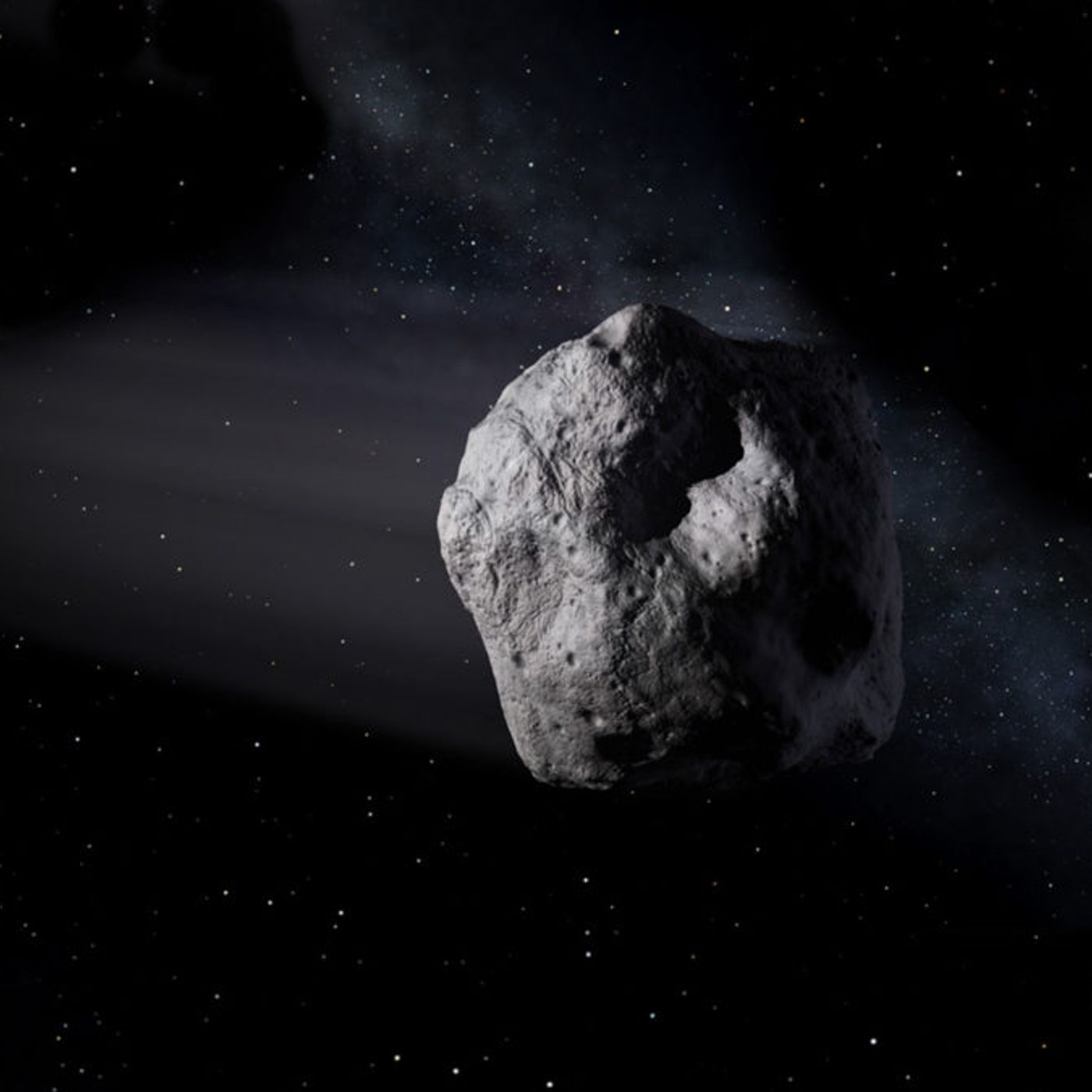 Travelers In The Night805-Very Close MissDuring a recent 60 day period asteroid hunters observed 23 asteroids which came closer to us than our Moon. Six of them passed closer to the Earth’s surface than 22,236 miles which is the distance to our communication satellites.2024-07-1202 min
Travelers In The Night805-Very Close MissDuring a recent 60 day period asteroid hunters observed 23 asteroids which came closer to us than our Moon. Six of them passed closer to the Earth’s surface than 22,236 miles which is the distance to our communication satellites.2024-07-1202 min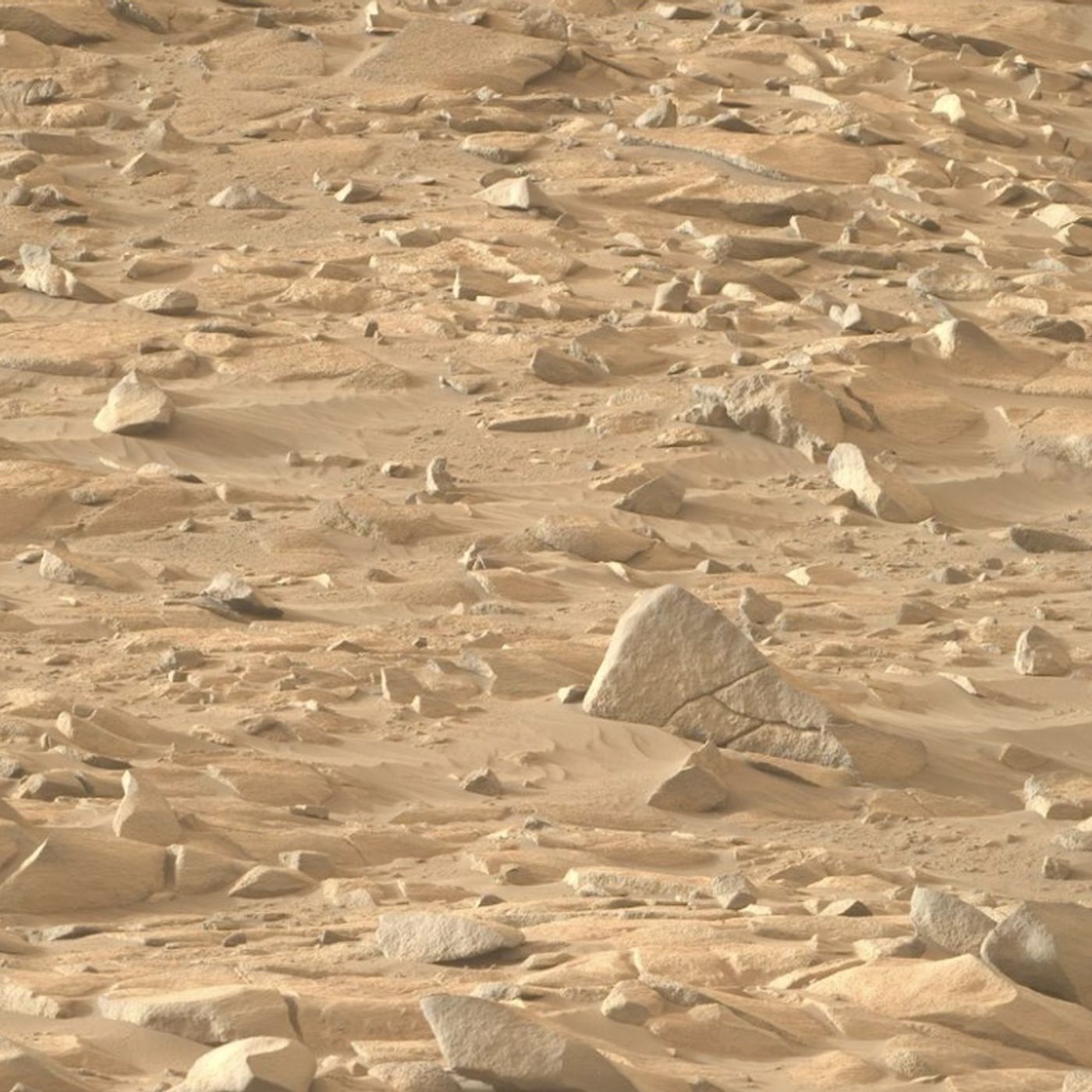 Travelers In The Night292E-310-Ethics and MarsShould martian microbes be sacrificed to human space exploration?It is unlikely that any living organism could survive being blasted from the surface of a planet, travel through interstellar space on a meteoroid, survive a fiery entry through another planet's atmosphere, and be viable when it reaches the surface. However, humans are breaching this interplanetary barrier. We have robots operating and are planning to land colonists on the red planet. This situation has prompted doctoral student Daniel Helman of Prescott College to ask the question "If Martian microbial life is discovered, is it ethical for humans to colonize Mars...2024-07-0902 min
Travelers In The Night292E-310-Ethics and MarsShould martian microbes be sacrificed to human space exploration?It is unlikely that any living organism could survive being blasted from the surface of a planet, travel through interstellar space on a meteoroid, survive a fiery entry through another planet's atmosphere, and be viable when it reaches the surface. However, humans are breaching this interplanetary barrier. We have robots operating and are planning to land colonists on the red planet. This situation has prompted doctoral student Daniel Helman of Prescott College to ask the question "If Martian microbial life is discovered, is it ethical for humans to colonize Mars...2024-07-0902 min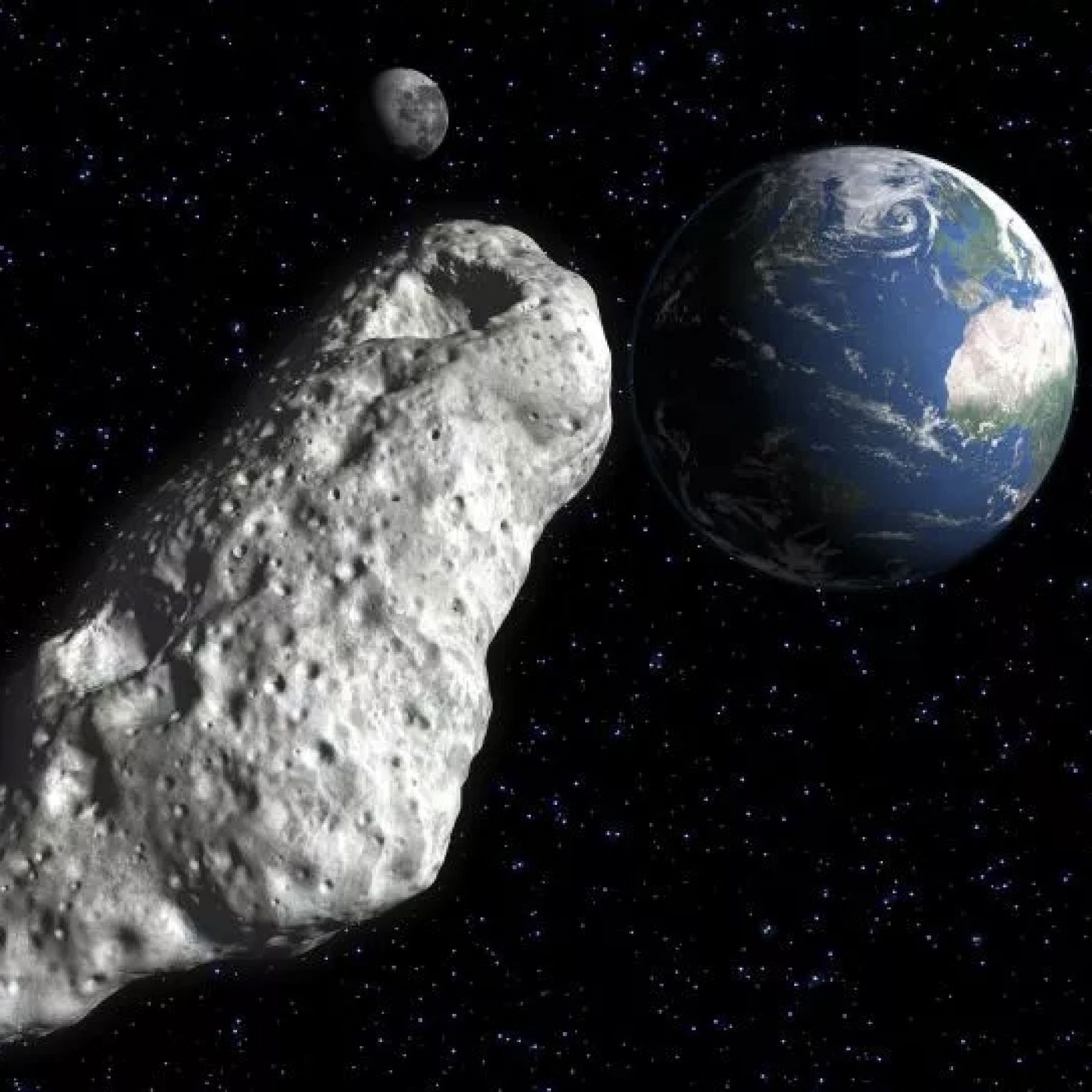 Travelers In The Night804-Tracie's SoloAfter months of training Tracie came full circle during her first solo 3 night observing run on the 60 inch telescope as she hosted groups of visitors as the observer instead of the tour guide.2024-07-0502 min
Travelers In The Night804-Tracie's SoloAfter months of training Tracie came full circle during her first solo 3 night observing run on the 60 inch telescope as she hosted groups of visitors as the observer instead of the tour guide.2024-07-0502 min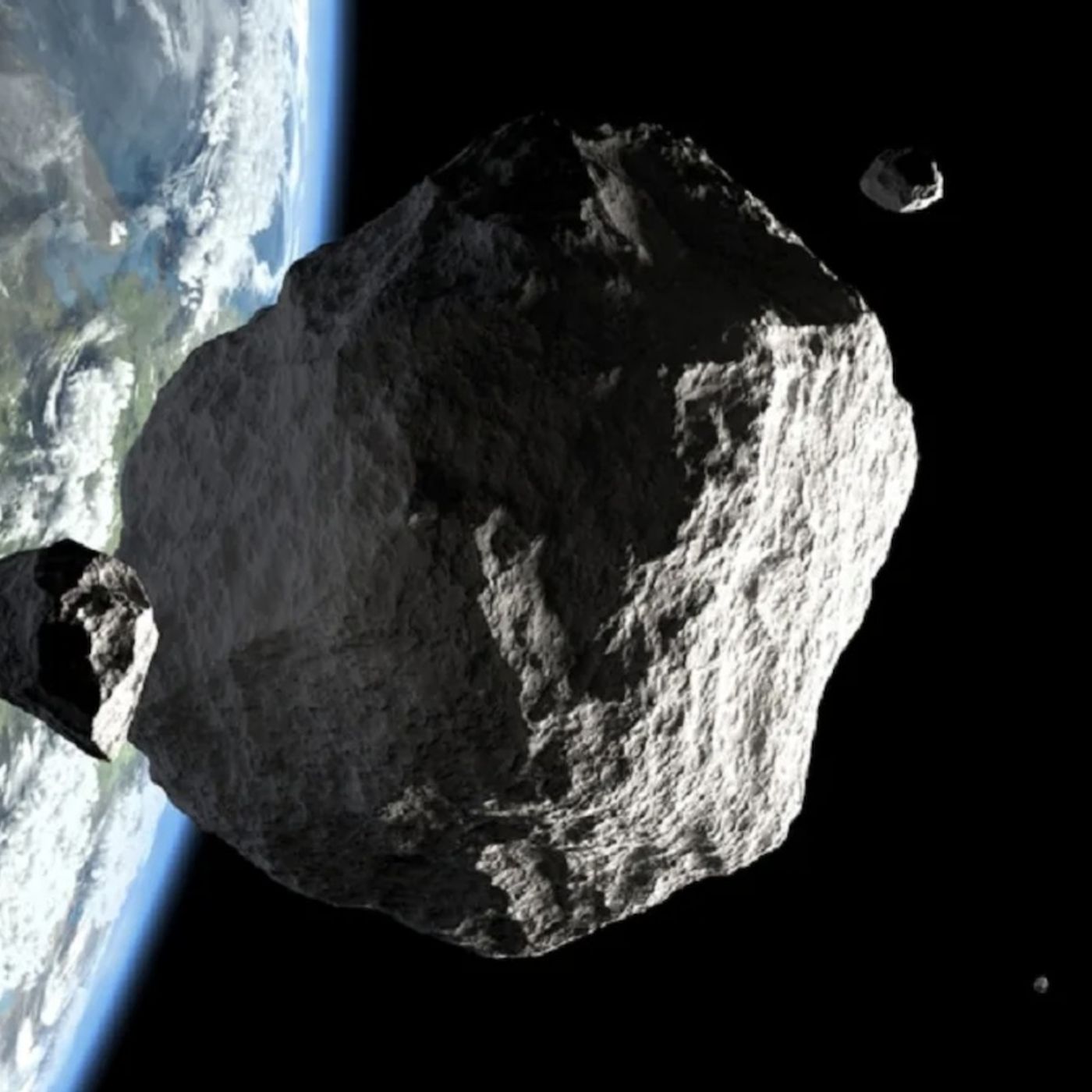 Travelers In The Night291E-309-Tiny AtiraAtira, named for the Pawnee goddess of Earth and the Morning and Evening Star orbits the Sun inside of our path. Atira, the first of this type of asteroid, was discovered by the Lincoln Near-Earth Asteroid Research Program using telescopes in New Mexico. Atira is a stony object more than a mile in diameter, spins on it's axis of rotation once every three hours, has an irregular shape, and orbits the Sun once every 233 days. This asteroid was named Atira who is a goddess of the Native American Pawnee tribe. She is the wife of the creator god, Tirawa [Tire a...2024-07-0202 min
Travelers In The Night291E-309-Tiny AtiraAtira, named for the Pawnee goddess of Earth and the Morning and Evening Star orbits the Sun inside of our path. Atira, the first of this type of asteroid, was discovered by the Lincoln Near-Earth Asteroid Research Program using telescopes in New Mexico. Atira is a stony object more than a mile in diameter, spins on it's axis of rotation once every three hours, has an irregular shape, and orbits the Sun once every 233 days. This asteroid was named Atira who is a goddess of the Native American Pawnee tribe. She is the wife of the creator god, Tirawa [Tire a...2024-07-0202 min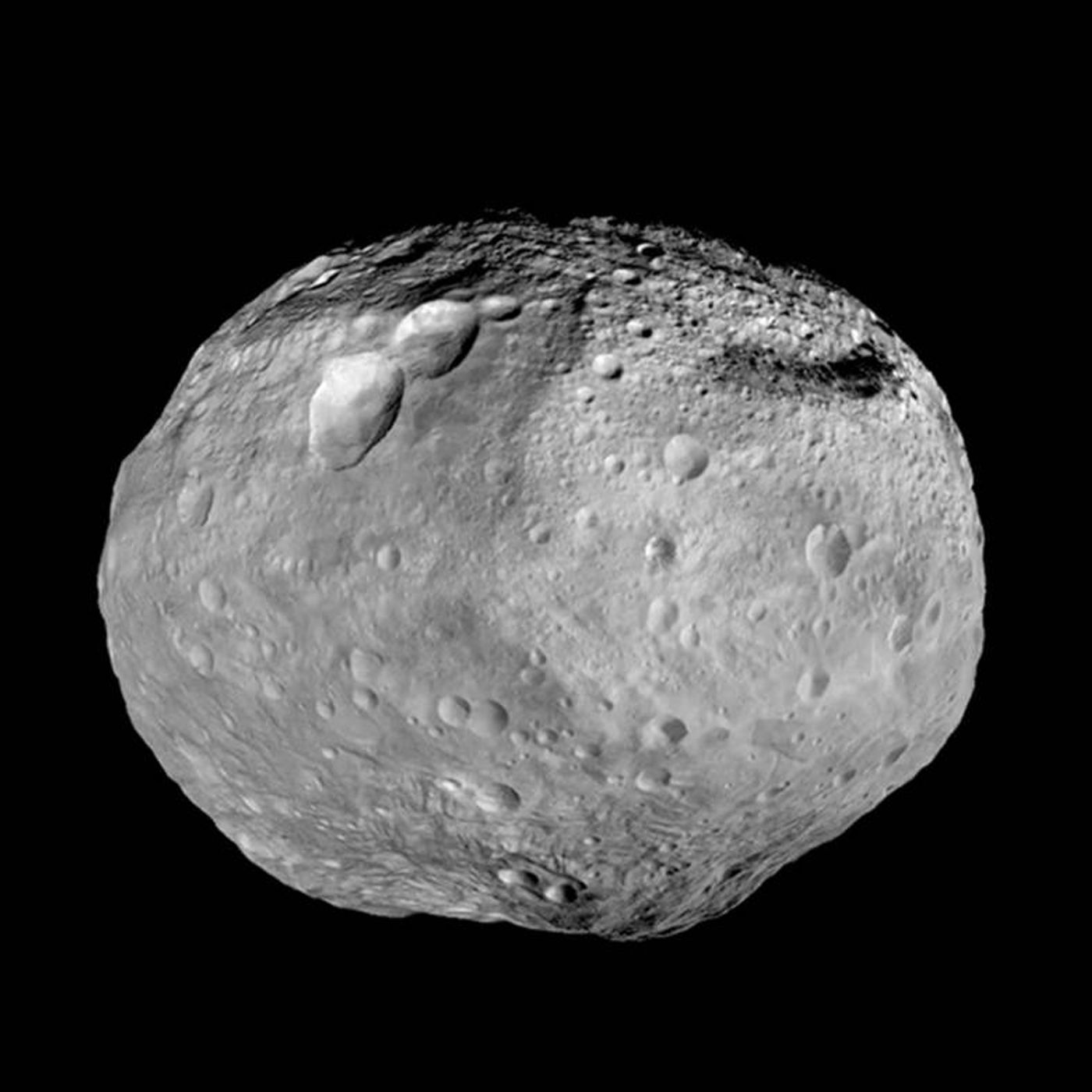 Travelers In The Night803-Monster NEOSince larger space rocks are rare, it was surprising when my Catalina Sky Survey teammate Hannes Groller found a half mile diameter asteroid traveling through the constellation of Auriga.Fortunately on it’s current path 2024 JW1 can’t come closer than 53 lunar distances from us. Asteroid hunters will continue to track 2024 JW1 to make sure that it does not become a threat as it passes near Earth, Mars , and Jupiter.2024-06-2802 min
Travelers In The Night803-Monster NEOSince larger space rocks are rare, it was surprising when my Catalina Sky Survey teammate Hannes Groller found a half mile diameter asteroid traveling through the constellation of Auriga.Fortunately on it’s current path 2024 JW1 can’t come closer than 53 lunar distances from us. Asteroid hunters will continue to track 2024 JW1 to make sure that it does not become a threat as it passes near Earth, Mars , and Jupiter.2024-06-2802 min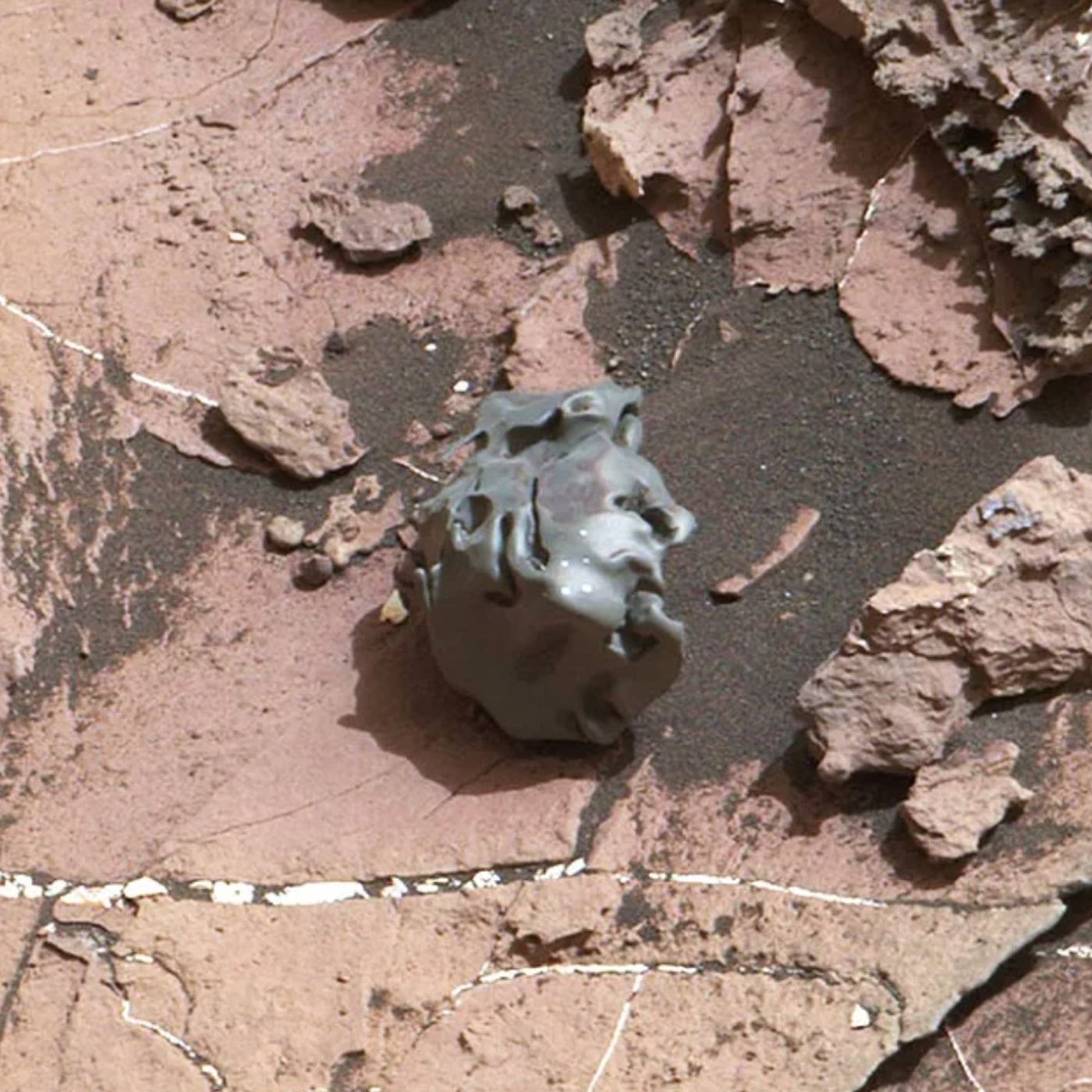 Travelers In The Night290E-306-Egg RockEgg rock's chemical composition and visual appearance is so different from other native Mars rocks that scientists have concluded that it is a meteorite which came from the molten core of an ancient asteroid.2024-06-2502 min
Travelers In The Night290E-306-Egg RockEgg rock's chemical composition and visual appearance is so different from other native Mars rocks that scientists have concluded that it is a meteorite which came from the molten core of an ancient asteroid.2024-06-2502 min Travelers In The Night802-Bok CometMy Catalina Sky Survey teammate Kacper Wierzchos was asteroid hunting in the constellation of Draco with the Steward Observatory Bok 90 inch telescope on Kitt Peak, Arizona when he discovered a faint fuzzy object moving through the night sky.Given the global warming which is happening in 2024 one has to wonder about the state of humanity and our home planet when comet C/2024 G1 (Wierzchos) returns to the inner solar system in 3331 CE.2024-06-2102 min
Travelers In The Night802-Bok CometMy Catalina Sky Survey teammate Kacper Wierzchos was asteroid hunting in the constellation of Draco with the Steward Observatory Bok 90 inch telescope on Kitt Peak, Arizona when he discovered a faint fuzzy object moving through the night sky.Given the global warming which is happening in 2024 one has to wonder about the state of humanity and our home planet when comet C/2024 G1 (Wierzchos) returns to the inner solar system in 3331 CE.2024-06-2102 min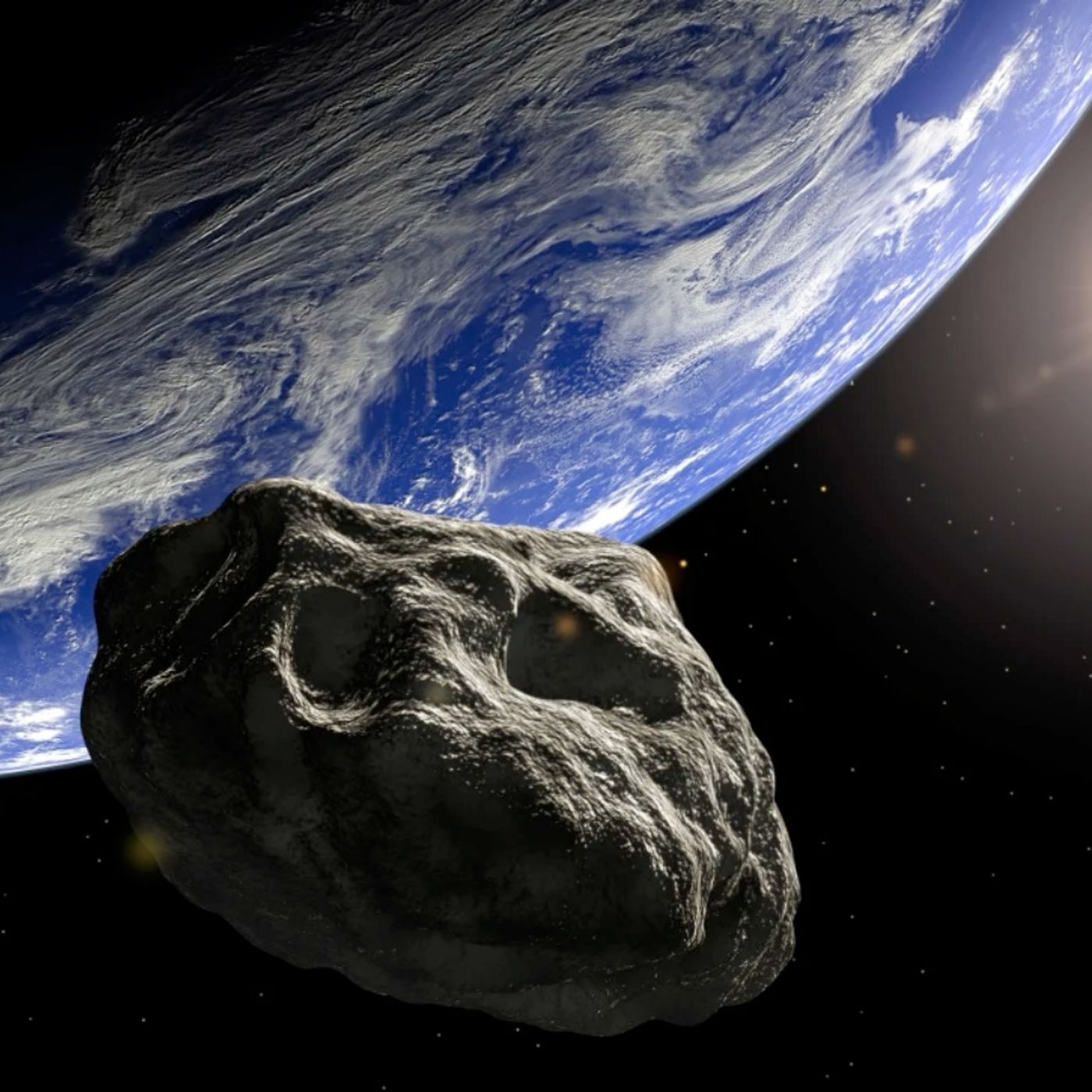 Travelers In The Night289E-305-MurkyIt was murky cloudy night on Mt. Lemmon where I was trying to find Earth approaching objects with the Catalina Sky Survey 60 inch telescope. At about 1AM another hole in the clouds opened and I could see stars on the all sky video camera. On this fourth attempt, one set of images showed a bright rapidly moving object. Followup observations by my teammate Greg Leonard using the Catalina Sky Survey 40 inch telescope next door and two different observers in Japan provided the data which allowed the Minor Planet Center to calculate an orbit, estimate a size, predict its path in...2024-06-1802 min
Travelers In The Night289E-305-MurkyIt was murky cloudy night on Mt. Lemmon where I was trying to find Earth approaching objects with the Catalina Sky Survey 60 inch telescope. At about 1AM another hole in the clouds opened and I could see stars on the all sky video camera. On this fourth attempt, one set of images showed a bright rapidly moving object. Followup observations by my teammate Greg Leonard using the Catalina Sky Survey 40 inch telescope next door and two different observers in Japan provided the data which allowed the Minor Planet Center to calculate an orbit, estimate a size, predict its path in...2024-06-1802 min Travelers In The Night801-Jacqui's PHAMy Catalina Sky Survey teammate Jacqueline Fazekas was asteroid hunting with our small but mighty Schmidt telescope on Mt. Bigelow, Arizona when she spotted and then reported a bright moving point of light in the night sky to the Minor Planet Center.Given the rate of human caused climate change one has to wonder about the state of our planet in January of 2163 when 2024 ER is predicted to pass safely some 66 lunar distances from humanity.2024-06-1402 min
Travelers In The Night801-Jacqui's PHAMy Catalina Sky Survey teammate Jacqueline Fazekas was asteroid hunting with our small but mighty Schmidt telescope on Mt. Bigelow, Arizona when she spotted and then reported a bright moving point of light in the night sky to the Minor Planet Center.Given the rate of human caused climate change one has to wonder about the state of our planet in January of 2163 when 2024 ER is predicted to pass safely some 66 lunar distances from humanity.2024-06-1402 min Travelers In The Night288E-304-Close OneMy Catalina Sky Survey teammate Rose Matheny had no way of knowing that the fast moving point of light that she had just discovered would create such a stir. Rose sent in her discovery and followup observations to the Minor Planet Center where astronomers calculated that her discovery would make a very close approach to Earth about two days later and gave it the name 2016 RB1. More than two dozen observatories around the world tracked 2016 RB1 as it came towards us.2024-06-1102 min
Travelers In The Night288E-304-Close OneMy Catalina Sky Survey teammate Rose Matheny had no way of knowing that the fast moving point of light that she had just discovered would create such a stir. Rose sent in her discovery and followup observations to the Minor Planet Center where astronomers calculated that her discovery would make a very close approach to Earth about two days later and gave it the name 2016 RB1. More than two dozen observatories around the world tracked 2016 RB1 as it came towards us.2024-06-1102 min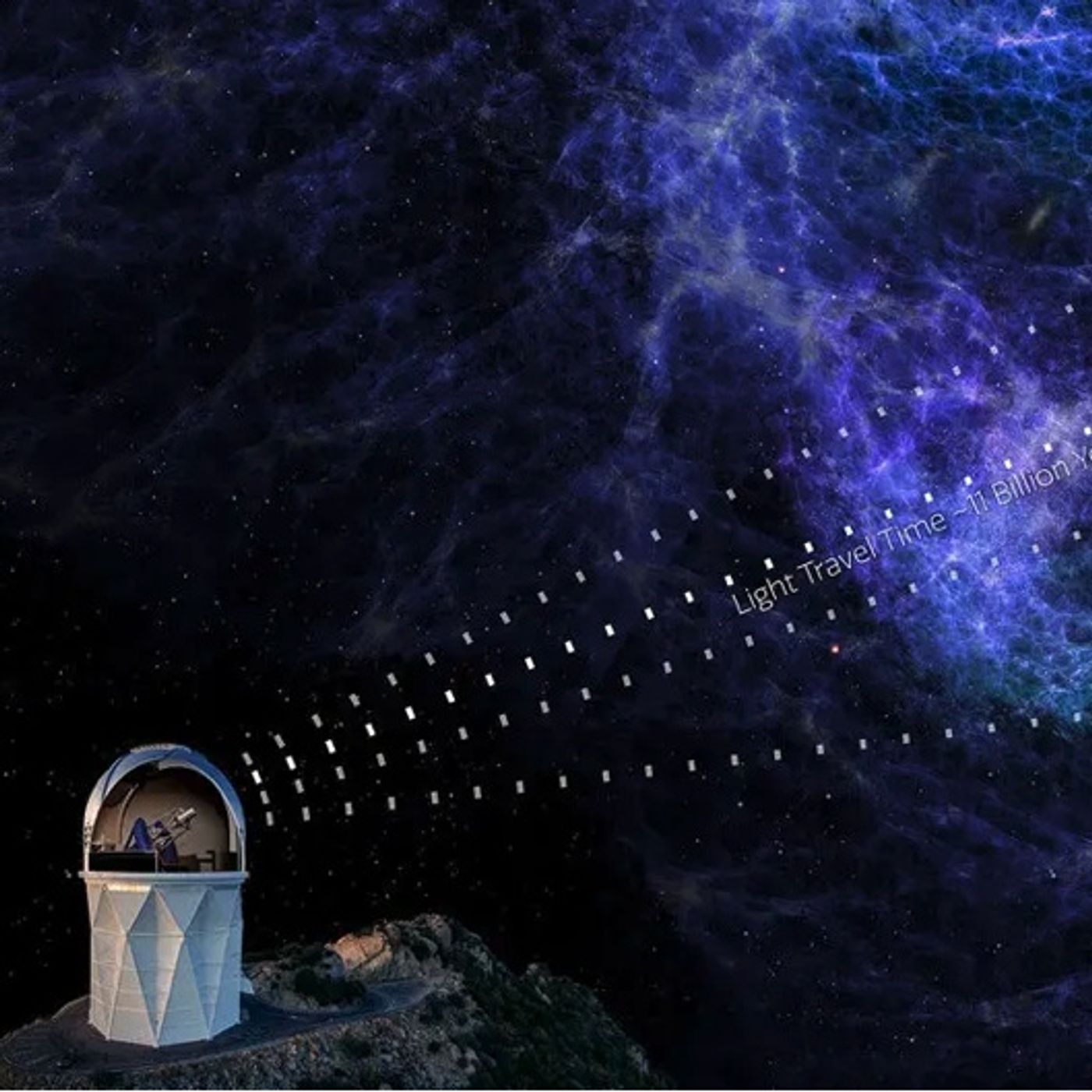 Travelers In The Night800-Telescope RebornIn an astonishing rebirth, the Mayall 4-m telescope has jumped to the forefront of astronomy once again because it is sturdy and precise enough to carry the massive Dark Energy Spectroscopic Instrument which routinely obtains the spectra of 5,000 galaxies simultaneously.2024-06-0702 min
Travelers In The Night800-Telescope RebornIn an astonishing rebirth, the Mayall 4-m telescope has jumped to the forefront of astronomy once again because it is sturdy and precise enough to carry the massive Dark Energy Spectroscopic Instrument which routinely obtains the spectra of 5,000 galaxies simultaneously.2024-06-0702 min Travelers In The Night287E-302-Sensing A CometMore than 400 years ago Galileo Galilei expanded human vision using a telescope to view the cosmos. Since then humans have extended their senses to view the Universe in x-rays, ultraviolet, infrared, radio, and other portions of the electromagnetic spectrum not accessible to our senses. In a pioneering effort, Ekaterina Smirnova has employed the spectroscopy, magnetometry, and molecular data collected by the Rosetta spacecraft to create watercolor paintings, sculptures, a musical collaboration, and an augmented reality project to create new art forms. She has also taken Rosetta data obtained from it's close up observations of comet 67P to create interactive art...2024-06-0402 min
Travelers In The Night287E-302-Sensing A CometMore than 400 years ago Galileo Galilei expanded human vision using a telescope to view the cosmos. Since then humans have extended their senses to view the Universe in x-rays, ultraviolet, infrared, radio, and other portions of the electromagnetic spectrum not accessible to our senses. In a pioneering effort, Ekaterina Smirnova has employed the spectroscopy, magnetometry, and molecular data collected by the Rosetta spacecraft to create watercolor paintings, sculptures, a musical collaboration, and an augmented reality project to create new art forms. She has also taken Rosetta data obtained from it's close up observations of comet 67P to create interactive art...2024-06-0402 min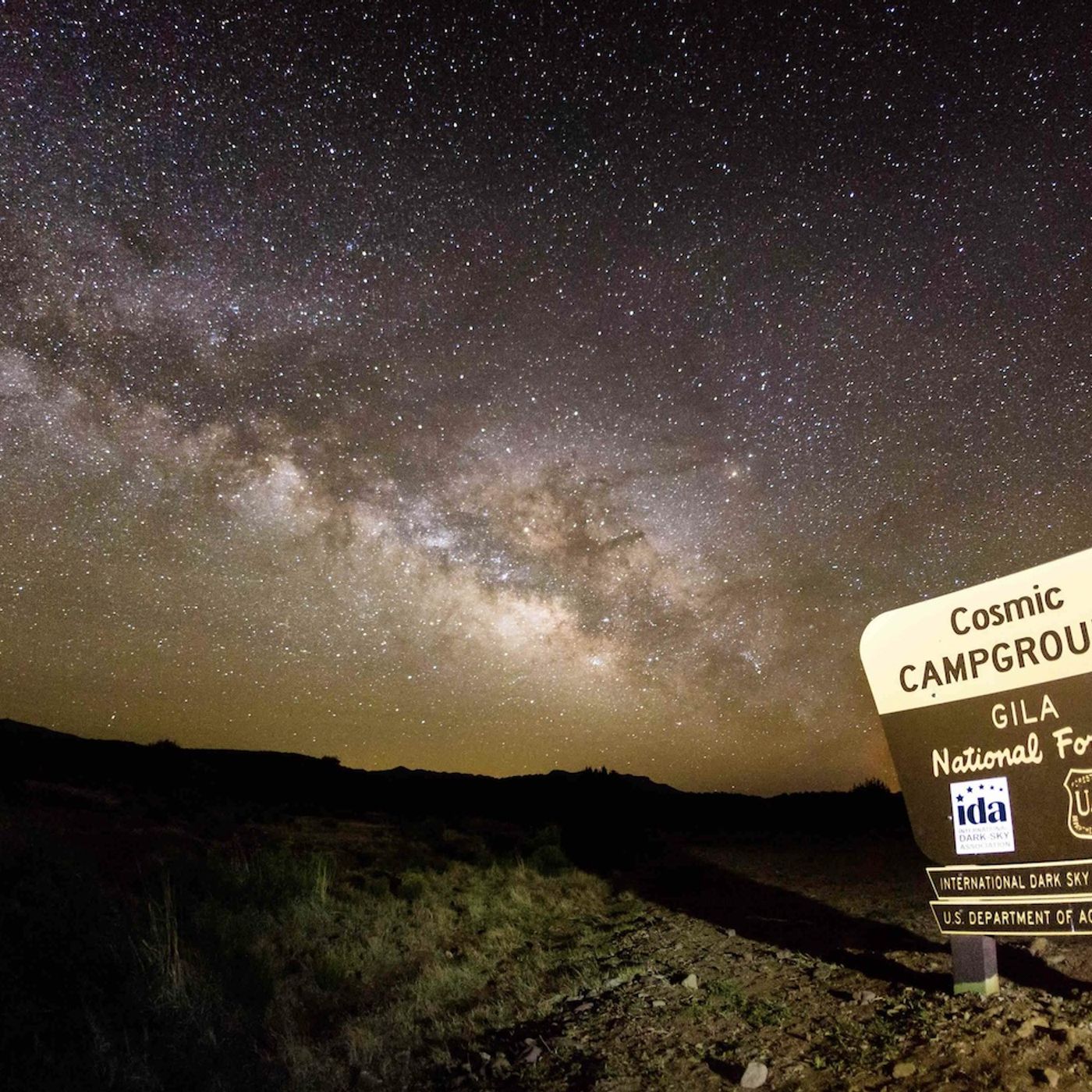 Travelers In The Night799-Nature's GatewaysThe Cosmic Campground International Dark Sky Sanctuary and the Aldo Leopold Gila Wilderness in New Mexico are gateways to nature where man is only a visitor.These New Mexico neighbors give us a sense of wonder, glimpses of history, new knowledge to mitigate the effects of man’s excesses, and many other opportunities we are yet to fully appreciate.2024-05-3102 min
Travelers In The Night799-Nature's GatewaysThe Cosmic Campground International Dark Sky Sanctuary and the Aldo Leopold Gila Wilderness in New Mexico are gateways to nature where man is only a visitor.These New Mexico neighbors give us a sense of wonder, glimpses of history, new knowledge to mitigate the effects of man’s excesses, and many other opportunities we are yet to fully appreciate.2024-05-3102 min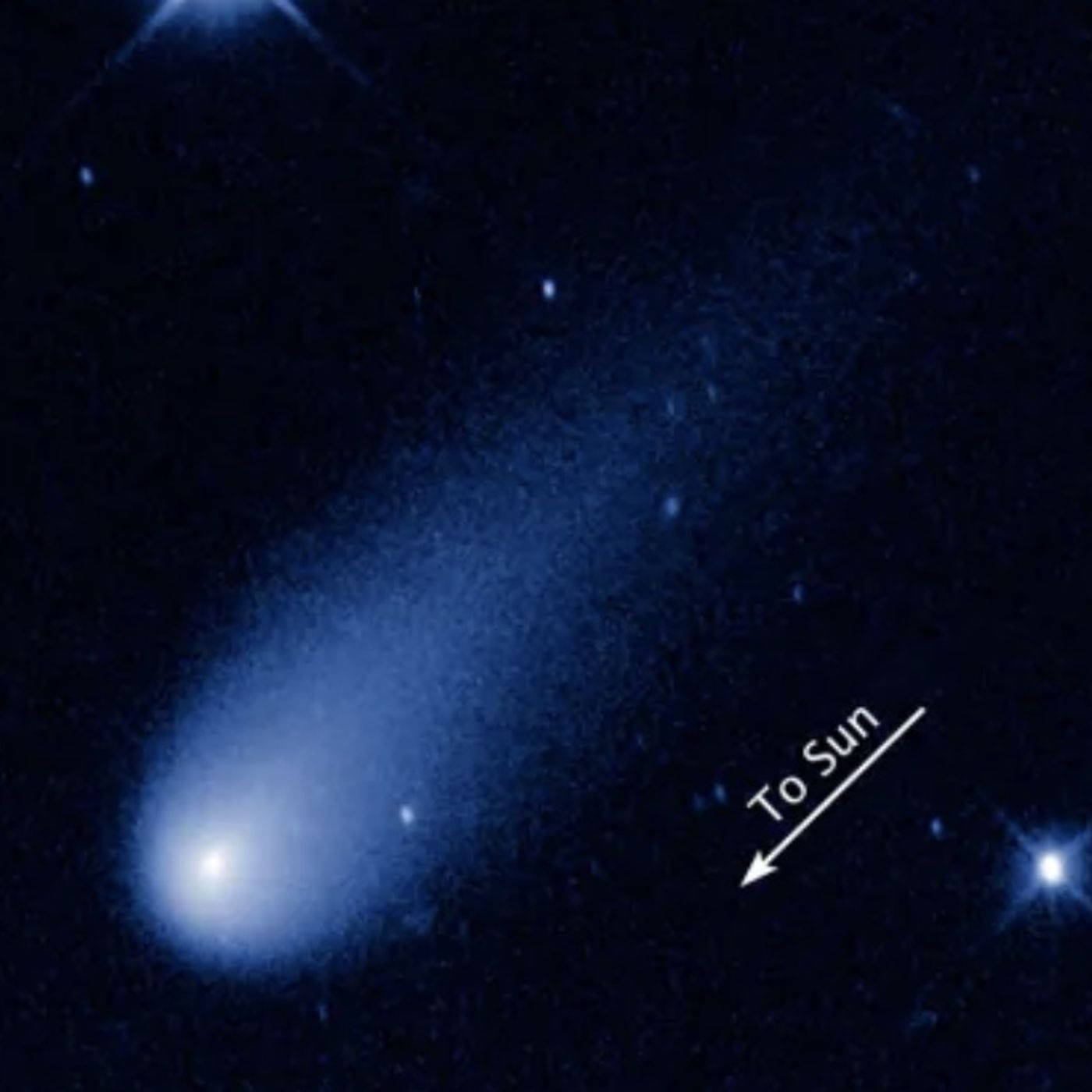 Travelers In The Night286E-301-Visitors From AfarA pair of comets visiting our neighborhood are discovered in a matter of 4 days. One of the perks of being an asteroid hunter is having a comet named for you. To do this you must be the first to discover it as a moving point of light in the night sky and at the same time recognize that it is a comet by observing the coma and tail which are names for the clouds of gas and dust that surrounds it. After being on the lookout for a comet for sometime, my Catalina Sky Survey teammate Rose Matheny discovered...2024-05-2802 min
Travelers In The Night286E-301-Visitors From AfarA pair of comets visiting our neighborhood are discovered in a matter of 4 days. One of the perks of being an asteroid hunter is having a comet named for you. To do this you must be the first to discover it as a moving point of light in the night sky and at the same time recognize that it is a comet by observing the coma and tail which are names for the clouds of gas and dust that surrounds it. After being on the lookout for a comet for sometime, my Catalina Sky Survey teammate Rose Matheny discovered...2024-05-2802 min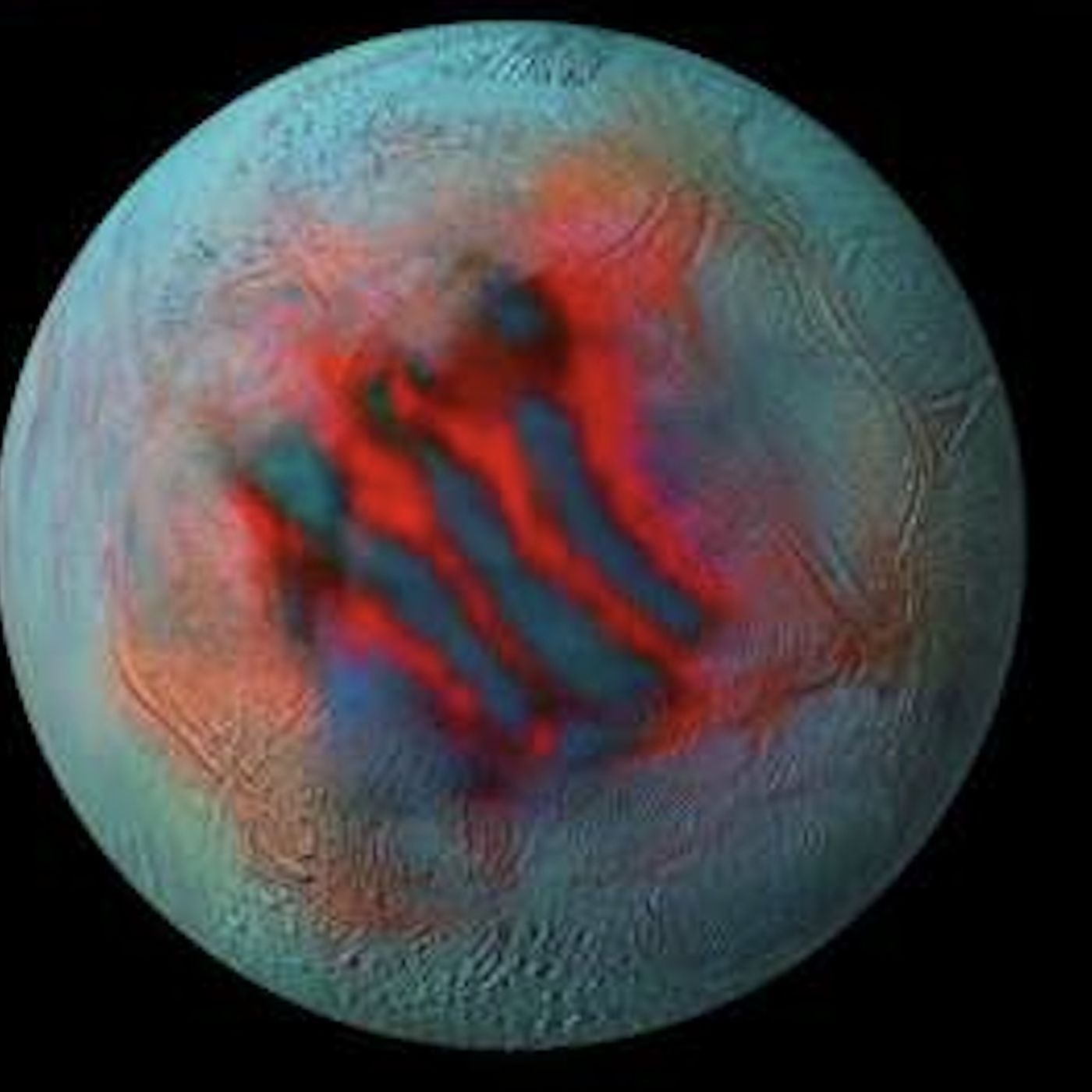 Travelers In The Night798-Destination EnceladusLife on Earth appears to have formed in our oceans. Scientists are thus on the hunt for other worlds which have oceans of liquid water and thus potentially could be the home of fellow living creatures.2024-05-2402 min
Travelers In The Night798-Destination EnceladusLife on Earth appears to have formed in our oceans. Scientists are thus on the hunt for other worlds which have oceans of liquid water and thus potentially could be the home of fellow living creatures.2024-05-2402 min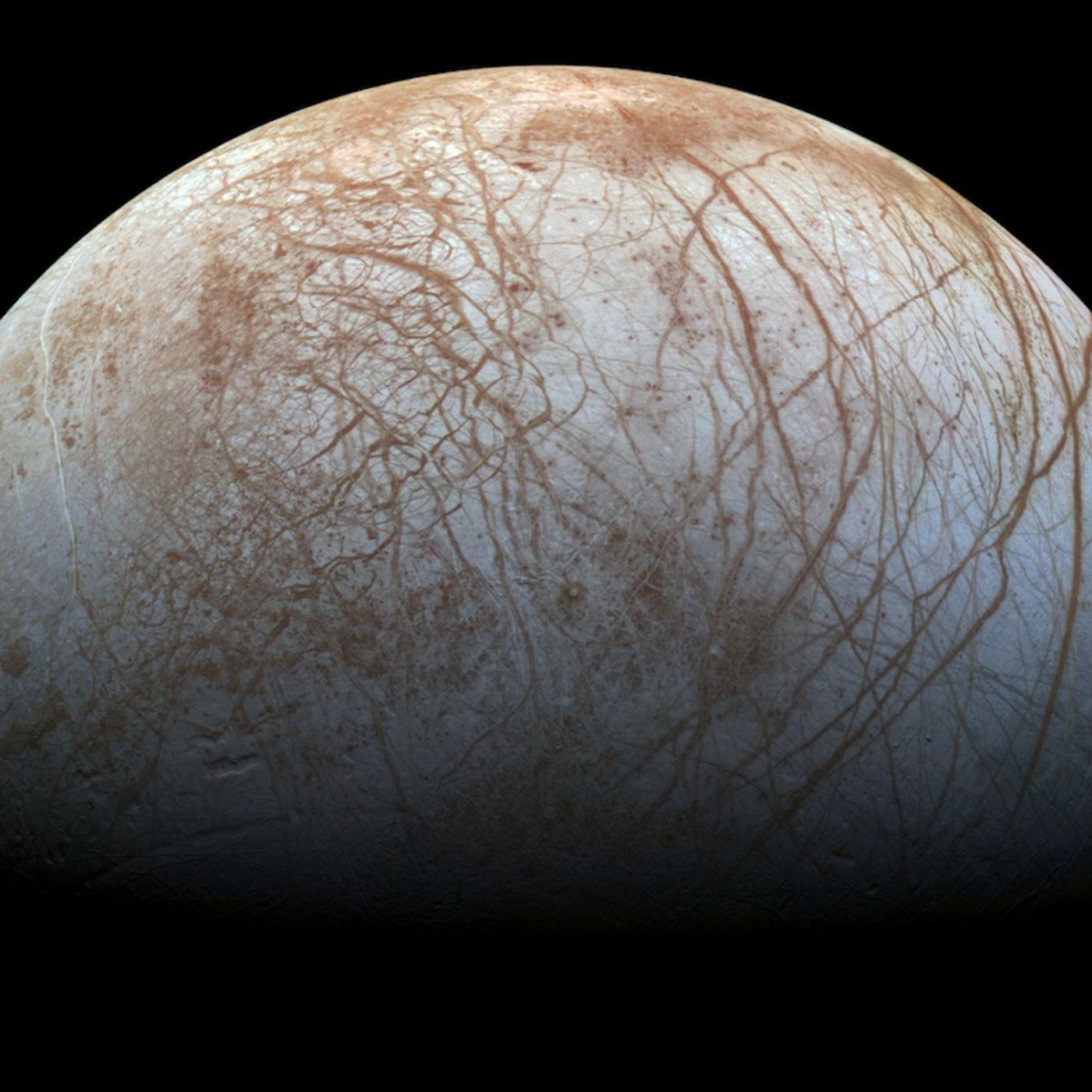 Travelers In The Night285E-299-Sporadic GeysersUsing a small telescope or a set of binoculars you can see Europa for yourself as a small moving point of light circling the giant planet Jupiter. More than 400 years after Galileo Galilei discovered this seemingly small dead world the Hubble Space Telescope spotted geysers erupting from its south polar regions. Recently, over a 15 month period, the Hubble was able to observe 10 transits of Europa across the face of Jupiter. On three such occasions plumes were seen to be erupting from this small moon.2024-05-2102 min
Travelers In The Night285E-299-Sporadic GeysersUsing a small telescope or a set of binoculars you can see Europa for yourself as a small moving point of light circling the giant planet Jupiter. More than 400 years after Galileo Galilei discovered this seemingly small dead world the Hubble Space Telescope spotted geysers erupting from its south polar regions. Recently, over a 15 month period, the Hubble was able to observe 10 transits of Europa across the face of Jupiter. On three such occasions plumes were seen to be erupting from this small moon.2024-05-2102 min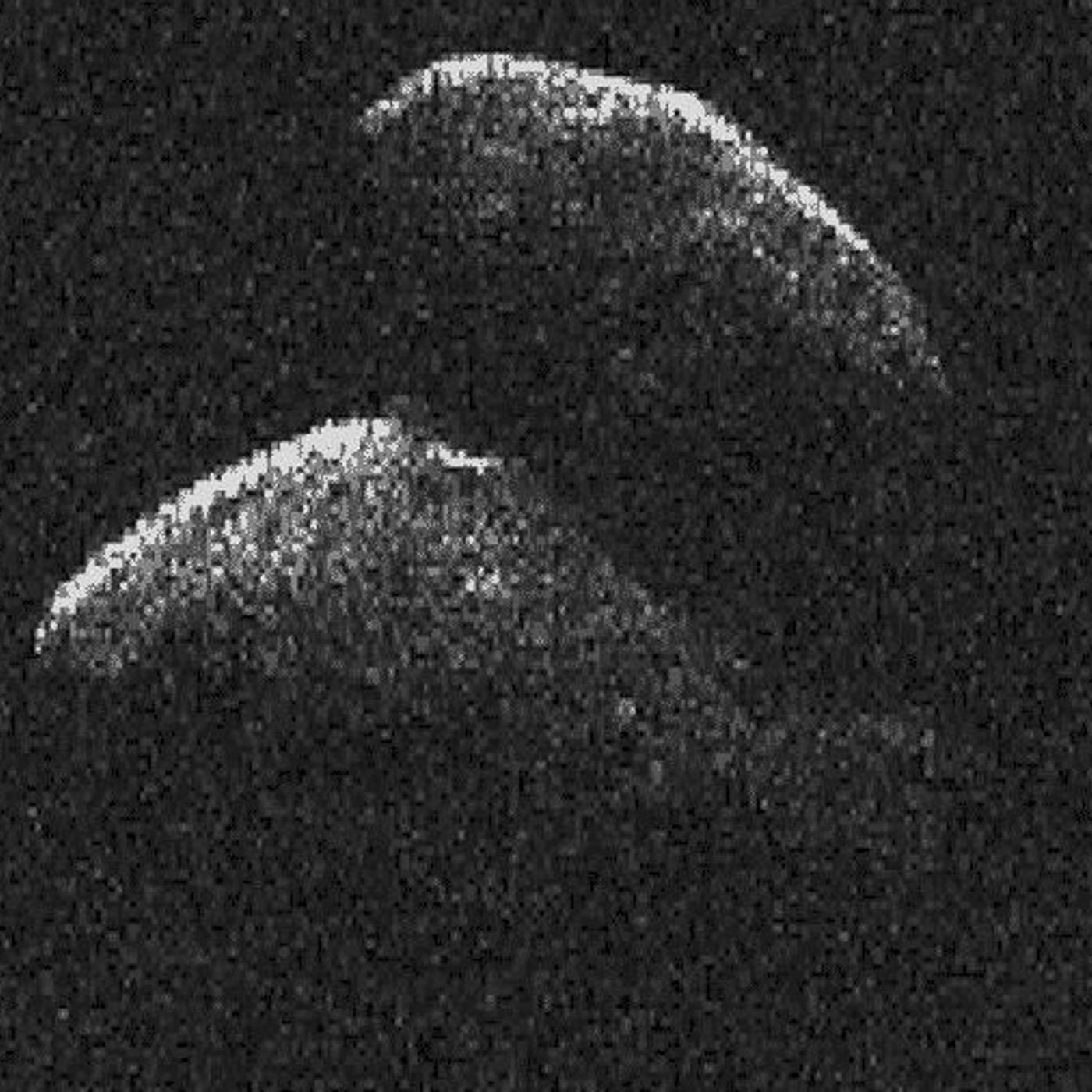 Travelers In The Night797-RecoveriesIt is essential that asteroid hunters keep track of potentially dangerous asteroids to make sure that their orbits haven’t changed as they encounter other objects in space to make them a threat to our home planet.2024-05-1702 min
Travelers In The Night797-RecoveriesIt is essential that asteroid hunters keep track of potentially dangerous asteroids to make sure that their orbits haven’t changed as they encounter other objects in space to make them a threat to our home planet.2024-05-1702 min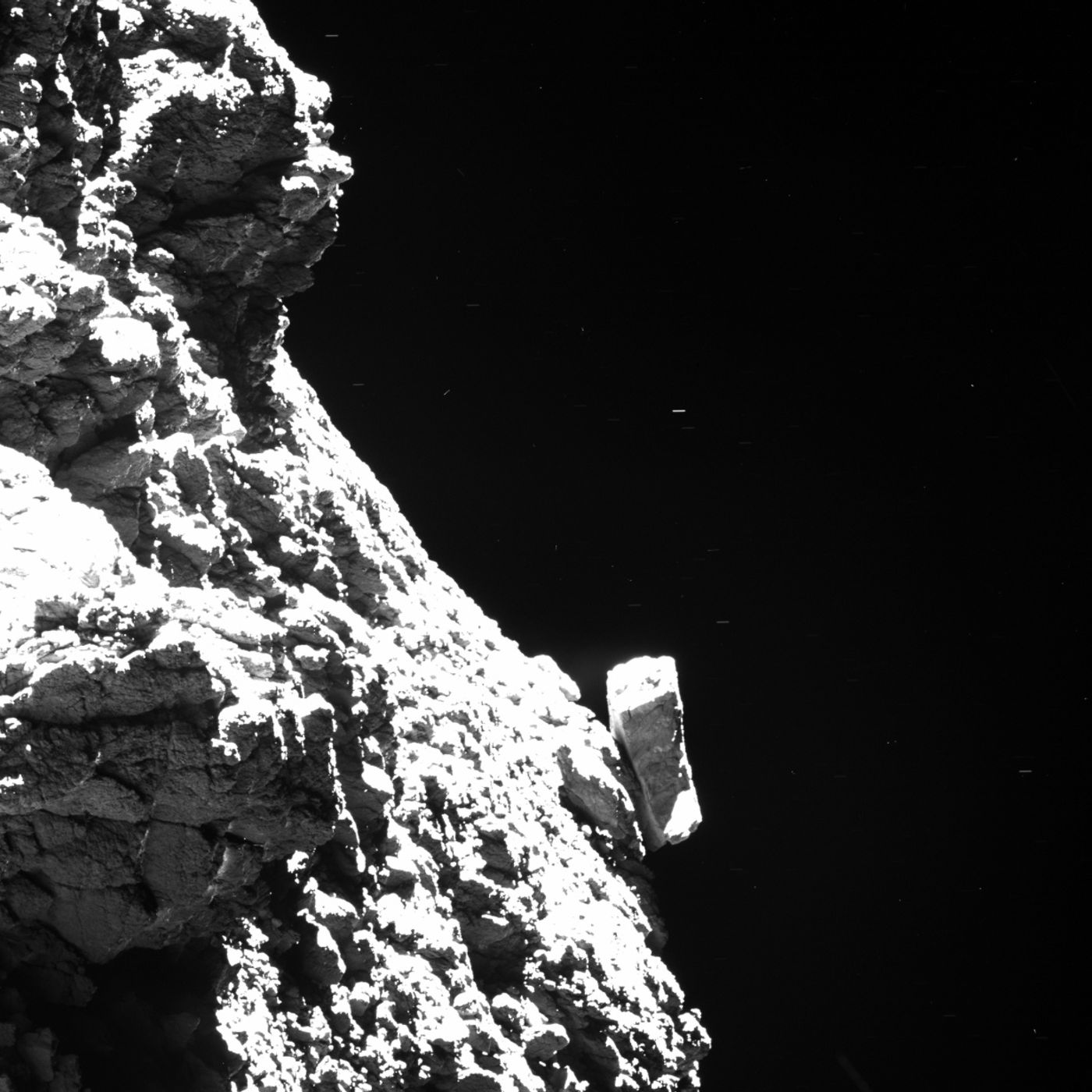 Travelers In The Night284E-298-RosettaThe Rosetta Spacecraft left planet Earth in 2004. During its twelve year lifetime this robotic emissary traveled 5 billion miles on 6 trips around the Sun, flew by Earth three times, visited Mars, and cruised by two asteroids. Rosetta needed to take such a long path to use the gravity of Earth and Mars to accelerate it to a speed which would allow it to rendezvous with a comet. Upon arrival, Rosetta successfully spent two years studying the comet at close range and sent a probe to it's surface. It's life ended when its human masters put it on a collision course with...2024-05-1402 min
Travelers In The Night284E-298-RosettaThe Rosetta Spacecraft left planet Earth in 2004. During its twelve year lifetime this robotic emissary traveled 5 billion miles on 6 trips around the Sun, flew by Earth three times, visited Mars, and cruised by two asteroids. Rosetta needed to take such a long path to use the gravity of Earth and Mars to accelerate it to a speed which would allow it to rendezvous with a comet. Upon arrival, Rosetta successfully spent two years studying the comet at close range and sent a probe to it's surface. It's life ended when its human masters put it on a collision course with...2024-05-1402 min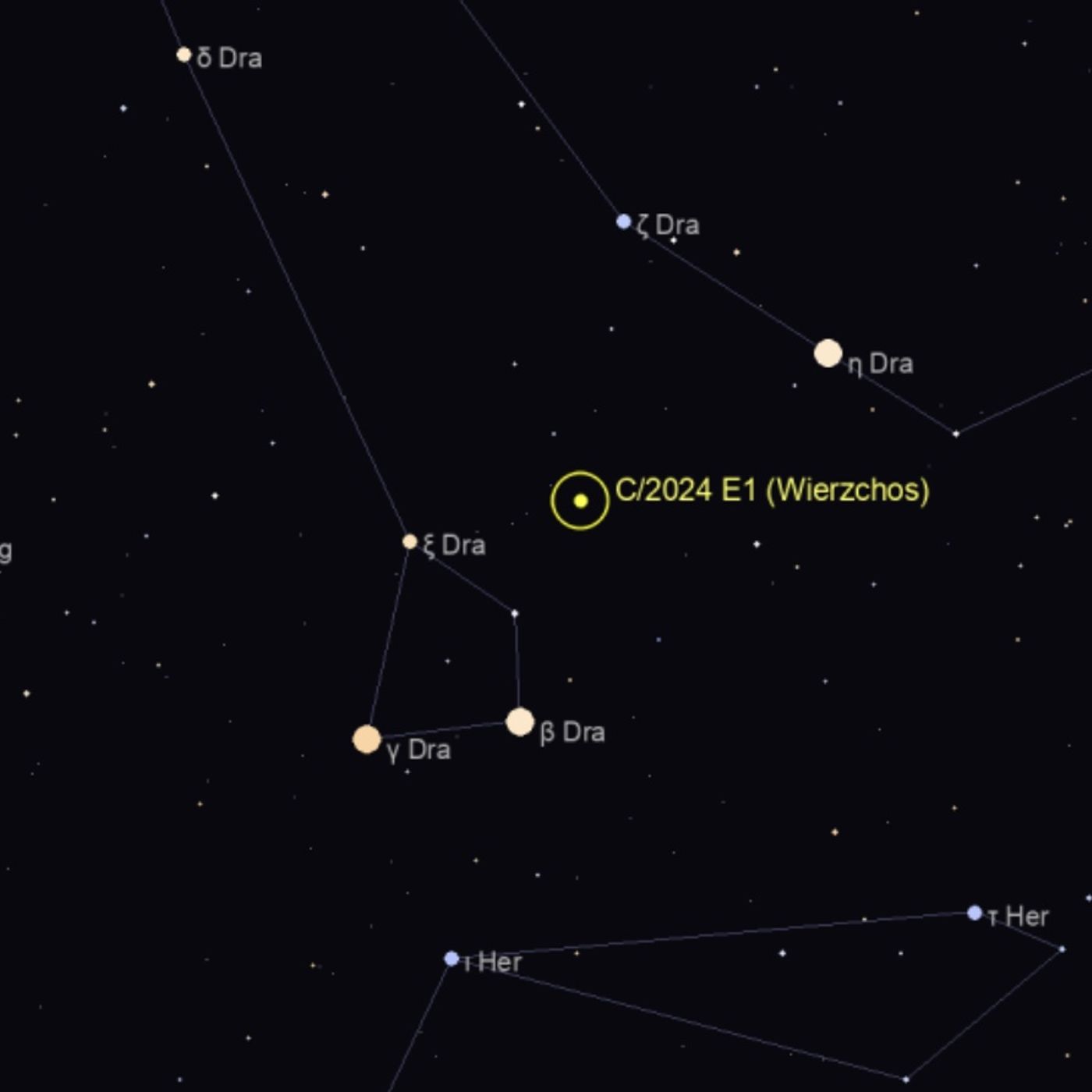 Travelers In The Night796-COMET C.2024 E1 (Wierzchos)-PreviewOn the 3rd of March 2024 while asteroid hunting with our 60 inch telescope on Mt. Lemmon , Arizona my Catalina Sky Survey teammate Kacper Wierzchos discovered a comet moving through the constellation of Draco.Since we don’t know Kacper’s comet’s chemical composition it is impossible to accurately predict how. bright it will be as it crosses the Earth’s orbit December 12, 2025, rounds the sun January 20, 2026, and crosses our orbit again February 27, 2026.2024-05-1002 min
Travelers In The Night796-COMET C.2024 E1 (Wierzchos)-PreviewOn the 3rd of March 2024 while asteroid hunting with our 60 inch telescope on Mt. Lemmon , Arizona my Catalina Sky Survey teammate Kacper Wierzchos discovered a comet moving through the constellation of Draco.Since we don’t know Kacper’s comet’s chemical composition it is impossible to accurately predict how. bright it will be as it crosses the Earth’s orbit December 12, 2025, rounds the sun January 20, 2026, and crosses our orbit again February 27, 2026.2024-05-1002 min Travelers In The Night283E-297-White SkyInappropriate night time outside lighting causes accidents and does not deter crime. However, it blinds you from the beauty of the Universe which surrounds you.2024-05-0702 min
Travelers In The Night283E-297-White SkyInappropriate night time outside lighting causes accidents and does not deter crime. However, it blinds you from the beauty of the Universe which surrounds you.2024-05-0702 min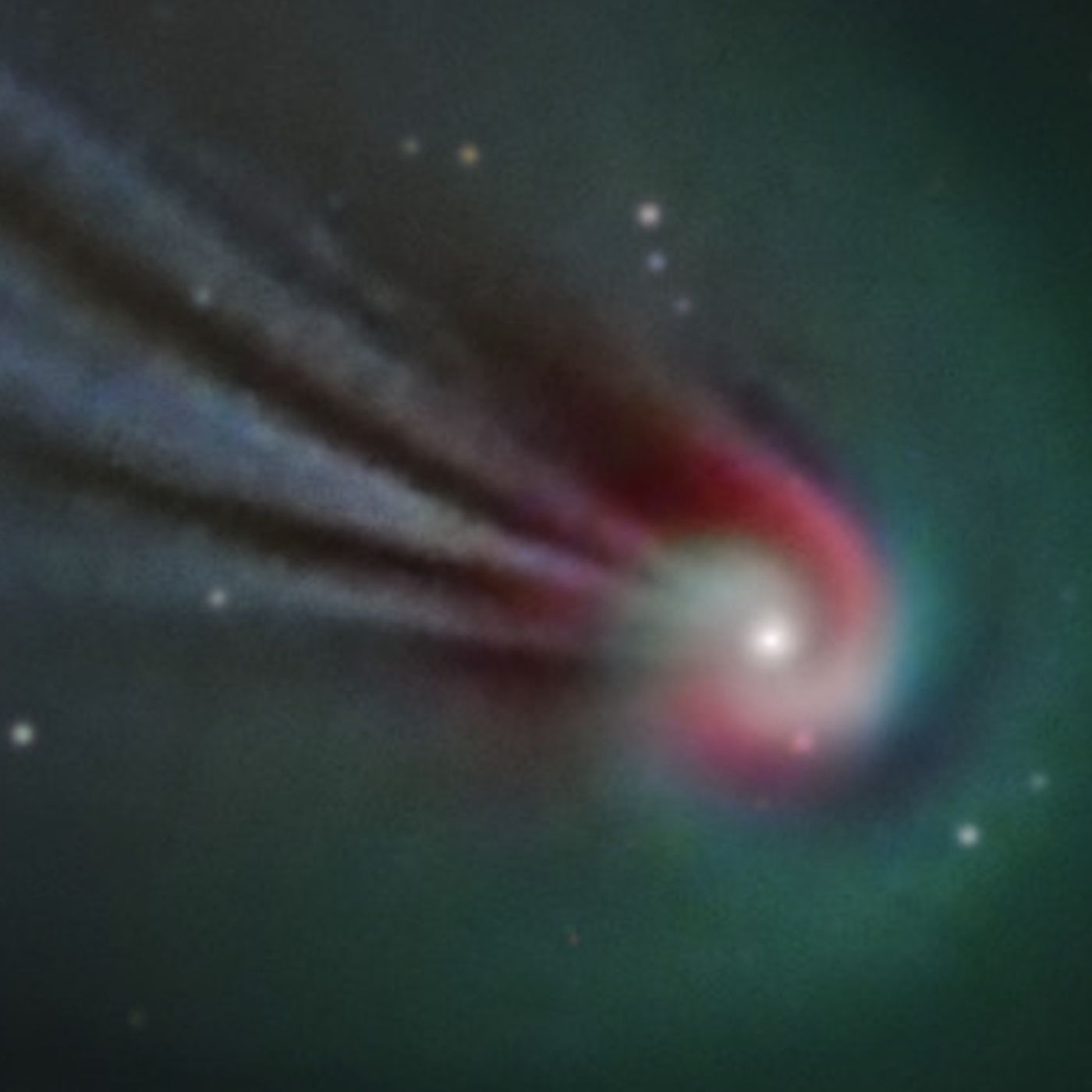 Travelers In The Night795-Spiral CometComet 12P/Pons-Brooks comes near the Sun once every 71 years. It was discovered in 1812 by Jean Louis Pons at Marseilles, France and then rediscovered by American Astronomer William Robert Brooks in 1883. Electronic cameras reveal this comet's nucleus has jets of gas that produce a spiral structure not unlike water jets from a lawn sprinkler.2024-05-0302 min
Travelers In The Night795-Spiral CometComet 12P/Pons-Brooks comes near the Sun once every 71 years. It was discovered in 1812 by Jean Louis Pons at Marseilles, France and then rediscovered by American Astronomer William Robert Brooks in 1883. Electronic cameras reveal this comet's nucleus has jets of gas that produce a spiral structure not unlike water jets from a lawn sprinkler.2024-05-0302 min Travelers In The Night282E-296-Tilted HistorySeasons are created by the fact that the Earth's axis of rotation is currently tilted 23 1/2 degrees relative to our path around the Sun. The slight out of roundness of the Earth's orbit combined with a 41,000 year cycle in its 3 degree axis of rotation wobble can cause the Earth's climate to change on very long time scales. Turns out that these astronomical cycles are likely to be the drivers of where you are from and where you live.2024-04-3002 min
Travelers In The Night282E-296-Tilted HistorySeasons are created by the fact that the Earth's axis of rotation is currently tilted 23 1/2 degrees relative to our path around the Sun. The slight out of roundness of the Earth's orbit combined with a 41,000 year cycle in its 3 degree axis of rotation wobble can cause the Earth's climate to change on very long time scales. Turns out that these astronomical cycles are likely to be the drivers of where you are from and where you live.2024-04-3002 min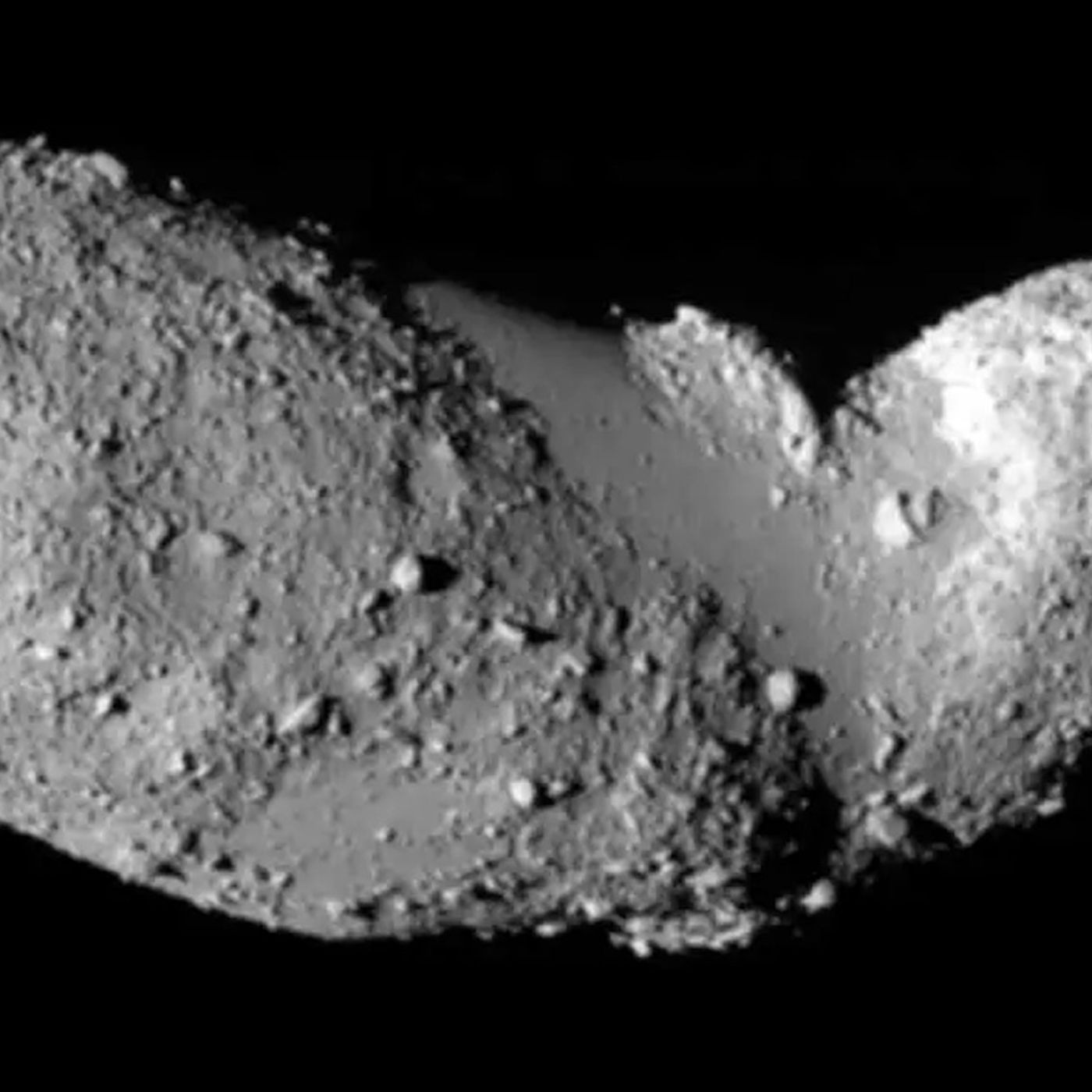 Travelers In The Night794-An Apollo Space Rock to FollowRecently my Catalina Sky Survey teammate Vivian Carjaval was asteroid hunting in the constellation of Ursa Minor with our Schmidt telescope on Mt. Bigelow when she discovered, 2024 BR4, a two football field diameter Earth approaching asteroid.Vivian’s Apollo asteroid discovery poses no threat to humans since 2024 is as close as it will come to Earth in the next few hundred years.2024-04-2602 min
Travelers In The Night794-An Apollo Space Rock to FollowRecently my Catalina Sky Survey teammate Vivian Carjaval was asteroid hunting in the constellation of Ursa Minor with our Schmidt telescope on Mt. Bigelow when she discovered, 2024 BR4, a two football field diameter Earth approaching asteroid.Vivian’s Apollo asteroid discovery poses no threat to humans since 2024 is as close as it will come to Earth in the next few hundred years.2024-04-2602 min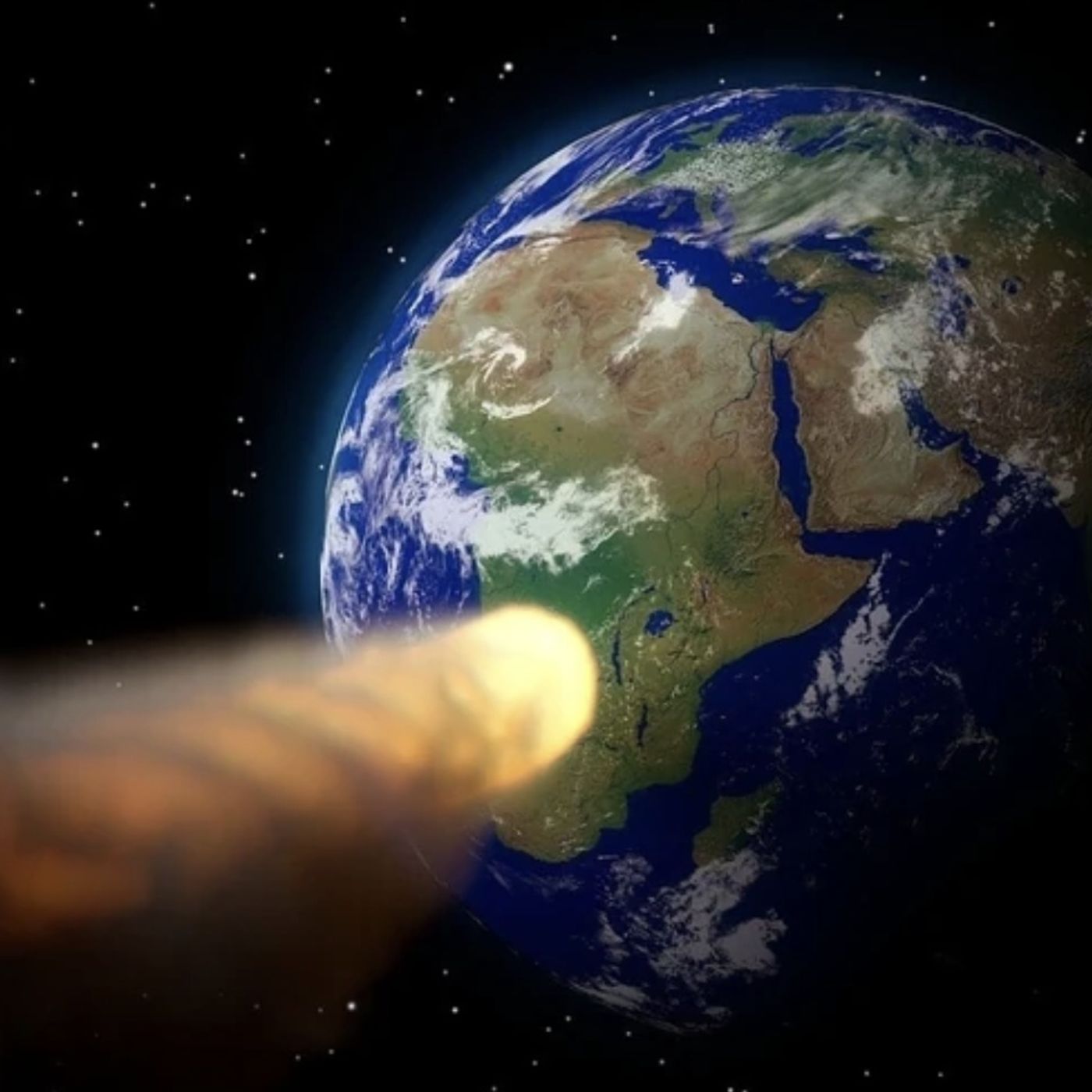 Travelers In The Night281E-295-Close PassesDuring a recent 3 night observing run my Catalina Sky Survey teammate Rose Matheny discovered 4 asteroids which can come to less than one half the Moon's distance from us. Interestingly one of them passed about 25,000 miles over the South Pole 2 days after Rose discovered it. Rose's four close approaching asteroids are small ranging in size from 15 to 60 feet in diameter. None of them are big enough to reach the Earth's surface and make a crater. However, the largest is about the size of the one whose air blast shock wave injured nearly 1500 people when it exploded over Chelyabinsk, Russia in 2013 .2024-04-2302 min
Travelers In The Night281E-295-Close PassesDuring a recent 3 night observing run my Catalina Sky Survey teammate Rose Matheny discovered 4 asteroids which can come to less than one half the Moon's distance from us. Interestingly one of them passed about 25,000 miles over the South Pole 2 days after Rose discovered it. Rose's four close approaching asteroids are small ranging in size from 15 to 60 feet in diameter. None of them are big enough to reach the Earth's surface and make a crater. However, the largest is about the size of the one whose air blast shock wave injured nearly 1500 people when it exploded over Chelyabinsk, Russia in 2013 .2024-04-2302 min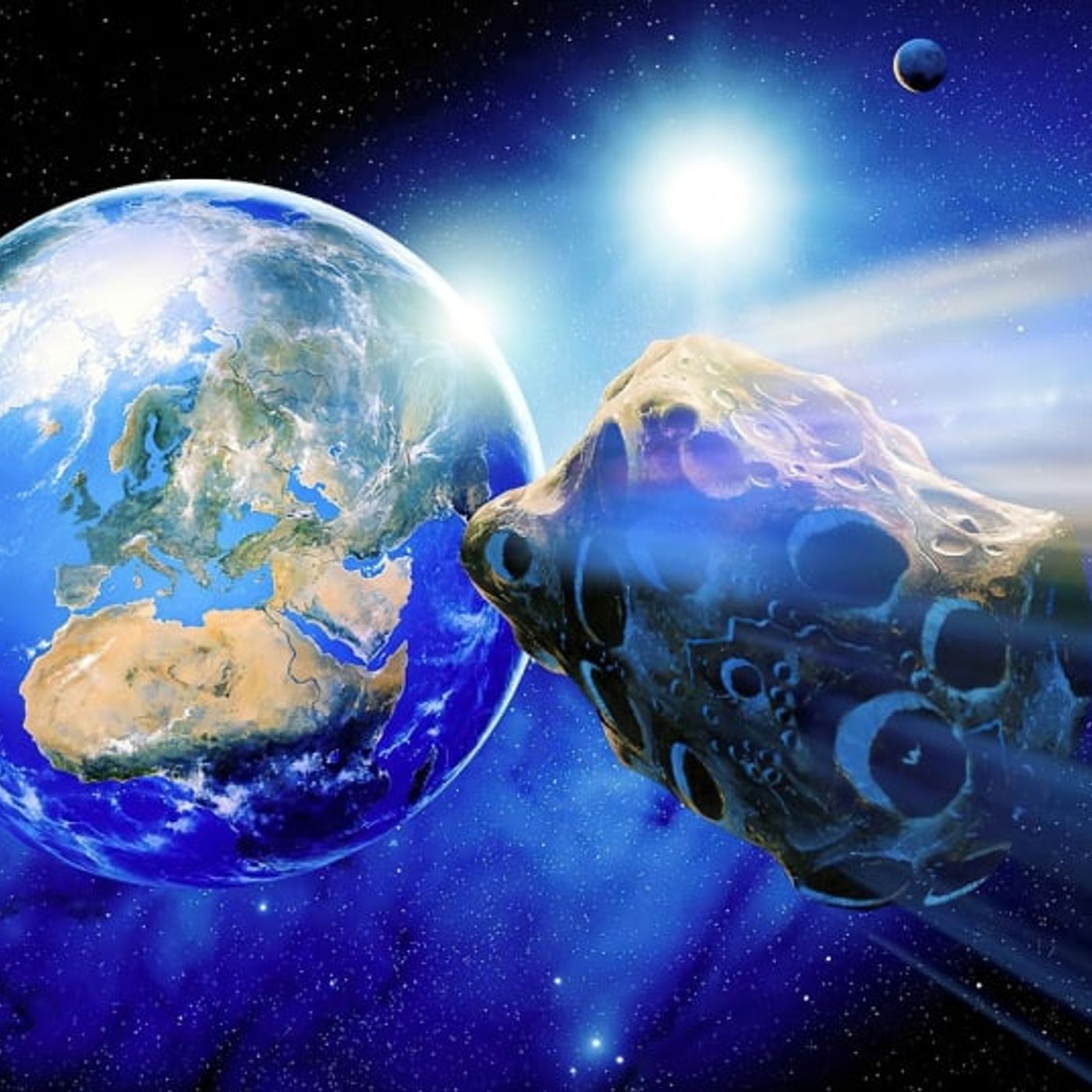 Travelers In The Night793 Close Space RockPerhaps the most dangerous Amor asteroid is 2006 HZ51 .It was discovered by my team the Catalina Sky Survey. Fortunately the closest 2006 HZ51 will come to our home planet is June 11 of 2116 when it will pass us harmlessly 26 times the distance to our moon away from us.2024-04-1902 min
Travelers In The Night793 Close Space RockPerhaps the most dangerous Amor asteroid is 2006 HZ51 .It was discovered by my team the Catalina Sky Survey. Fortunately the closest 2006 HZ51 will come to our home planet is June 11 of 2116 when it will pass us harmlessly 26 times the distance to our moon away from us.2024-04-1902 min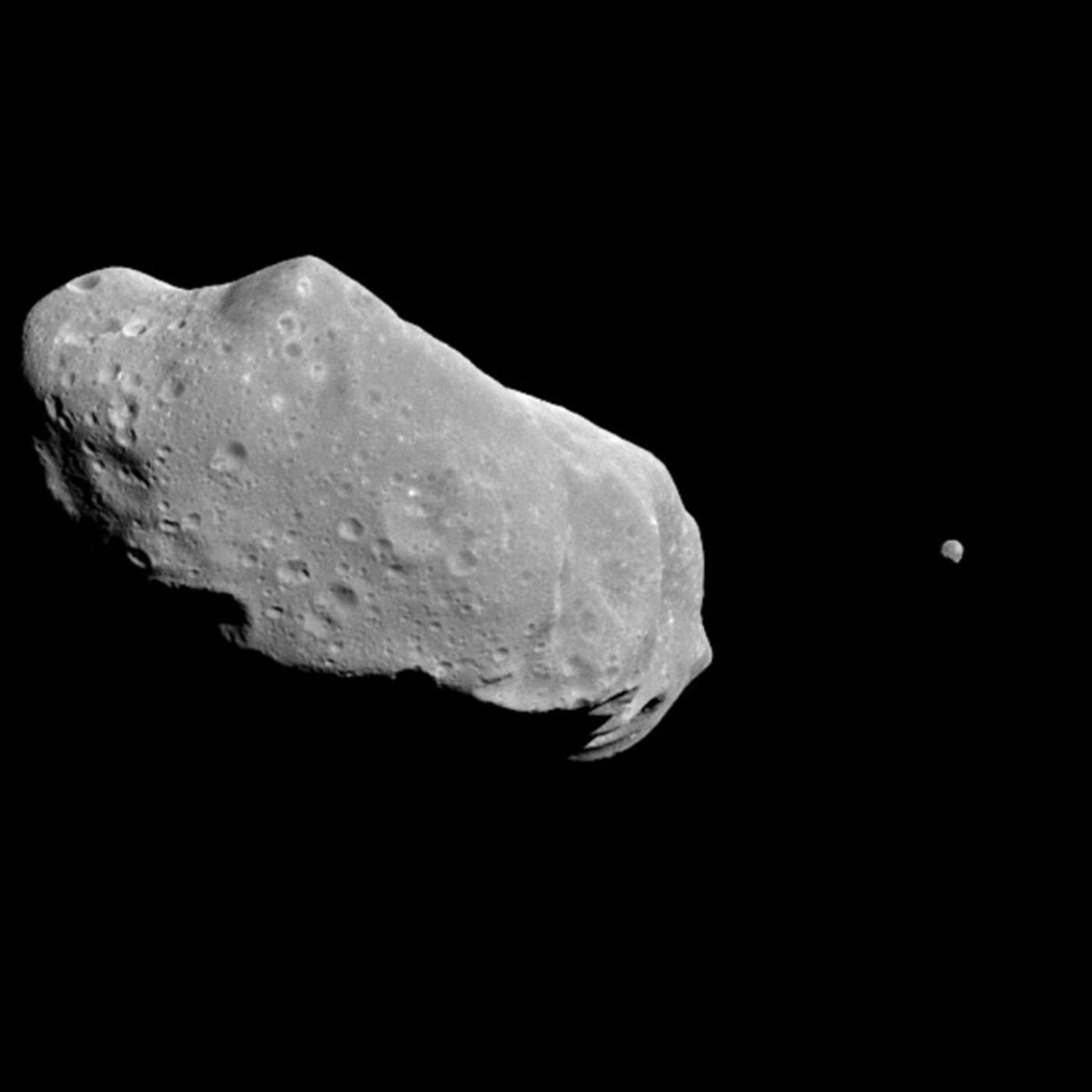 Travelers In The Night280E-294-Dangerous DuoRecently in the space of 28 hours my Catalina Sky Survey teammates Rose Matheny and Carson Fuls discovered two Potentially Hazardous Asteroids to add to the list of the more than 1700 which asteroid hunters have discovered. Fortunately, none of the Potentially Hazardous Asteroids are currently on a collision course with planet Earth.2024-04-1602 min
Travelers In The Night280E-294-Dangerous DuoRecently in the space of 28 hours my Catalina Sky Survey teammates Rose Matheny and Carson Fuls discovered two Potentially Hazardous Asteroids to add to the list of the more than 1700 which asteroid hunters have discovered. Fortunately, none of the Potentially Hazardous Asteroids are currently on a collision course with planet Earth.2024-04-1602 min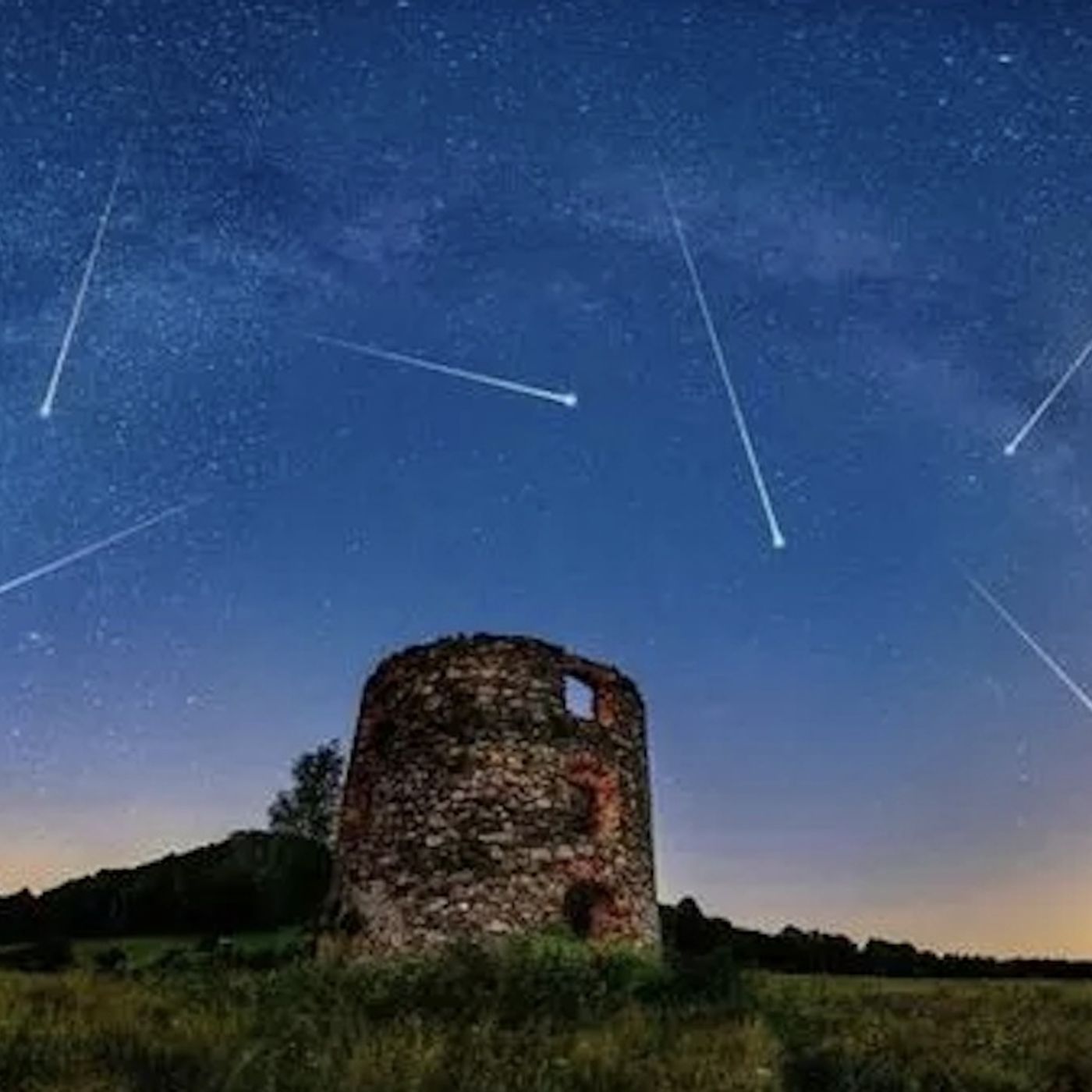 Travelers In The Night792-Closest Approaching CometP/1999 J6 (SOHO) was discovered 10 May 1995 by Mike Oates as part of the Citizen Science Sun Grazer Project in which volunteers from all over the world have the chance to discover a comet in images taken by the Solar and Heliospheric Observatory or SOHO for short.RADAR studies of the daytime Arietid ( AIR-ee-uh-tids) meteor shower stream which peaks every June 7 indicates that P/1999 J6 (SOHO) could be one of the potential parent objects.2024-04-1202 min
Travelers In The Night792-Closest Approaching CometP/1999 J6 (SOHO) was discovered 10 May 1995 by Mike Oates as part of the Citizen Science Sun Grazer Project in which volunteers from all over the world have the chance to discover a comet in images taken by the Solar and Heliospheric Observatory or SOHO for short.RADAR studies of the daytime Arietid ( AIR-ee-uh-tids) meteor shower stream which peaks every June 7 indicates that P/1999 J6 (SOHO) could be one of the potential parent objects.2024-04-1202 min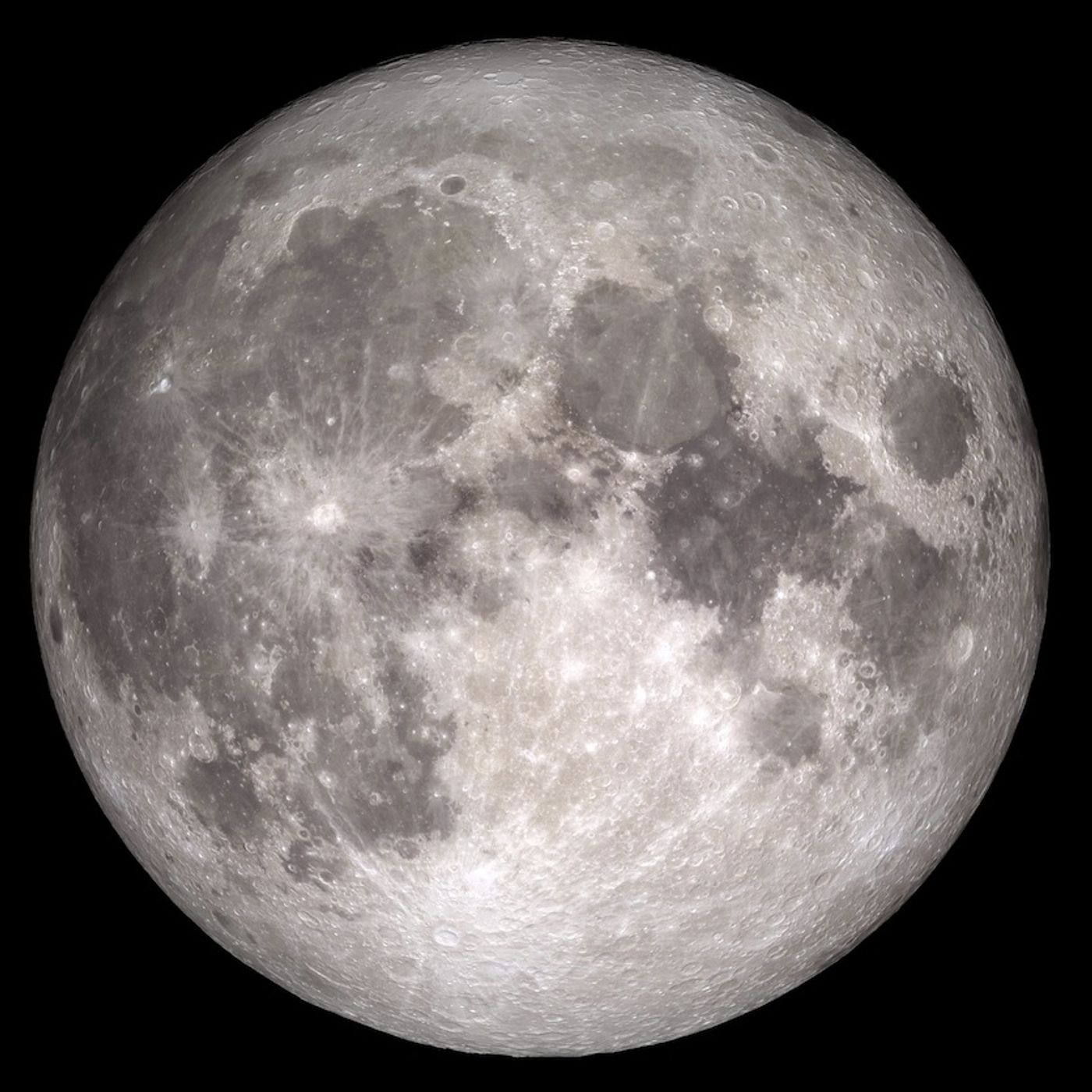 Travelers In The Night279E-293-From LunaMore than 240 Lunar meteorites have been found in the Dhofar region of Oman, on the LaPaz Icefield of Antartica, and other locations on the Earth's surface. These space traveling rocks were blasted from the Moon's surface by the impact of asteroids and comets which accelerated them to speeds greater than the lunar escape velocity of 1.5 miles per second. Subsequently these interplanetary travelers in the night orbited the Sun for an extended period of time before entering our atmosphere and falling to Earth. We know these meteorites are from the Moon because they contain mixtures of atoms which are found on...2024-04-0902 min
Travelers In The Night279E-293-From LunaMore than 240 Lunar meteorites have been found in the Dhofar region of Oman, on the LaPaz Icefield of Antartica, and other locations on the Earth's surface. These space traveling rocks were blasted from the Moon's surface by the impact of asteroids and comets which accelerated them to speeds greater than the lunar escape velocity of 1.5 miles per second. Subsequently these interplanetary travelers in the night orbited the Sun for an extended period of time before entering our atmosphere and falling to Earth. We know these meteorites are from the Moon because they contain mixtures of atoms which are found on...2024-04-0902 min Travelers In The Night791-A Fireball and It’s GiftsIt all started when Krisztián Sárneczky at the Konkoly Observatory near Budapest, Hungary reported the position and brightness of an unknown asteroid rapidly moving through the constellation of Lynx. Three hours later , the object, now called 2024 BX1 exploded harmlessly in our atmosphere2024-04-0502 min
Travelers In The Night791-A Fireball and It’s GiftsIt all started when Krisztián Sárneczky at the Konkoly Observatory near Budapest, Hungary reported the position and brightness of an unknown asteroid rapidly moving through the constellation of Lynx. Three hours later , the object, now called 2024 BX1 exploded harmlessly in our atmosphere2024-04-0502 min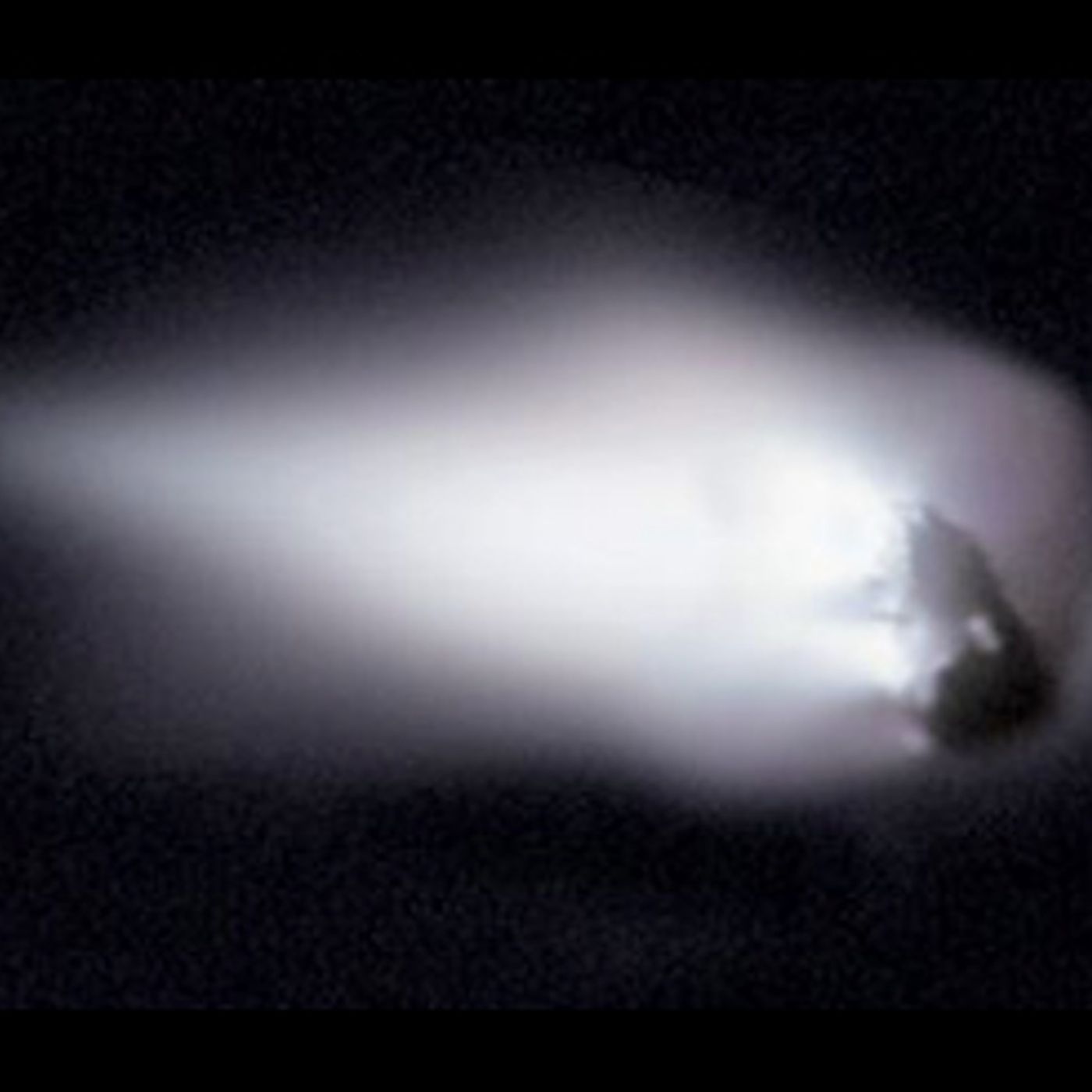 Travelers In The Night278E-292-Disintegrating CometComets are made up of organic materials and ices of various substance which are left over from the formation of our solar system 4.6 billion years ago. When the gravity of a nearby star or other object changes one of these dirty snowball's orbit, its path can bring it into the inner solar system and thus near enough for the Sun to affect it and for us to study what is going on.2024-04-0202 min
Travelers In The Night278E-292-Disintegrating CometComets are made up of organic materials and ices of various substance which are left over from the formation of our solar system 4.6 billion years ago. When the gravity of a nearby star or other object changes one of these dirty snowball's orbit, its path can bring it into the inner solar system and thus near enough for the Sun to affect it and for us to study what is going on.2024-04-0202 min Travelers In The Night790-Vivian's DebutMy new Catalina Sky Survey Teammate Vivian Carjaval was scheduled for three 13h long winter nights for her first solo observing run on our Schmidt telescope on Mt. Bigelow, Arizona. As luck would have it she couldn’t observe the first night because of high winds and blowing snow, while on the second night she was treated to lots of clouds under a bright moon, however, on the third night the Universe treated her to a clear night and sent two unknown Earth Approaching asteroids her way.2024-03-2902 min
Travelers In The Night790-Vivian's DebutMy new Catalina Sky Survey Teammate Vivian Carjaval was scheduled for three 13h long winter nights for her first solo observing run on our Schmidt telescope on Mt. Bigelow, Arizona. As luck would have it she couldn’t observe the first night because of high winds and blowing snow, while on the second night she was treated to lots of clouds under a bright moon, however, on the third night the Universe treated her to a clear night and sent two unknown Earth Approaching asteroids her way.2024-03-2902 min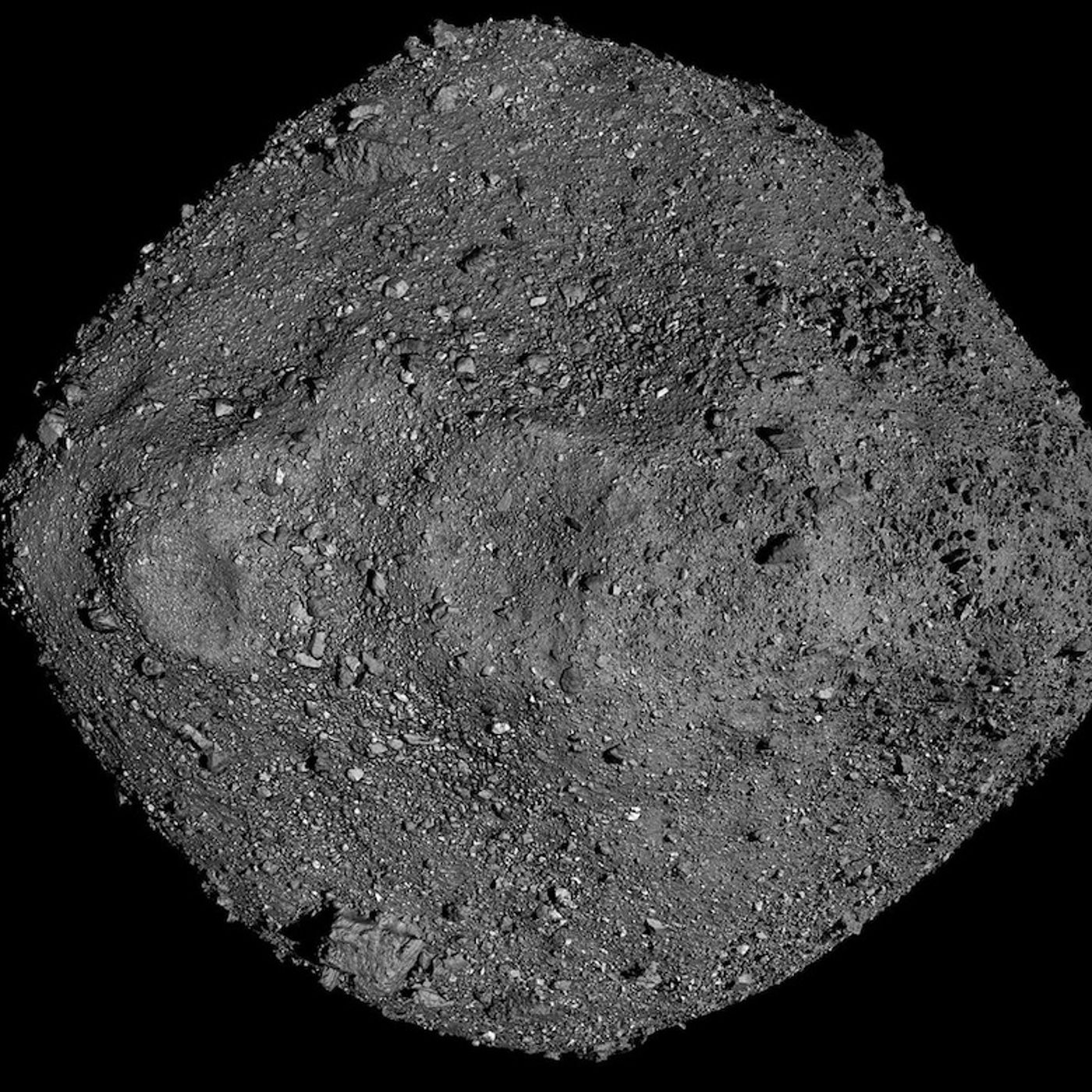 Travelers In The Night277E-291-Rose RulesAnyone who thinks women can't do computers and science needs to meet my Catalina Sky Survey teammate Rose Matheny. On a recent 3 night observing run at the 60 inch telescope on Mt. Lemmon, Rose took over the world of asteroid hunting when she posted 82 new potentially Earth approaching objects on the Minor Planet Center's NEO Confirmation Page. For the next several days telescopes around the world obtained additional data on Rose's discoveries. When the dust settled 29 of Rose's discoveries were proved to be Earth approaching objects, 32 are other asteroids which don't come near enough our home planet to be interesting, and...2024-03-2602 min
Travelers In The Night277E-291-Rose RulesAnyone who thinks women can't do computers and science needs to meet my Catalina Sky Survey teammate Rose Matheny. On a recent 3 night observing run at the 60 inch telescope on Mt. Lemmon, Rose took over the world of asteroid hunting when she posted 82 new potentially Earth approaching objects on the Minor Planet Center's NEO Confirmation Page. For the next several days telescopes around the world obtained additional data on Rose's discoveries. When the dust settled 29 of Rose's discoveries were proved to be Earth approaching objects, 32 are other asteroids which don't come near enough our home planet to be interesting, and...2024-03-2602 min Travelers In The Night789-Asteroid With A TailMy Catalina Sky Survey teammate Josh Hogan was asteroid hunting in the constellation of Taurus with our 60 inch telescope on Mt. Lemmon, Arizona when he came across a very curious object. It has an orbit like an ordinary main belt asteroid. However, amazingly it has a tail extending some 19,000 miles out from a few mile diameter central object.2024-03-2202 min
Travelers In The Night789-Asteroid With A TailMy Catalina Sky Survey teammate Josh Hogan was asteroid hunting in the constellation of Taurus with our 60 inch telescope on Mt. Lemmon, Arizona when he came across a very curious object. It has an orbit like an ordinary main belt asteroid. However, amazingly it has a tail extending some 19,000 miles out from a few mile diameter central object.2024-03-2202 min Travelers In The Night775-3 Close ApproachesDuring a six hour period three small space rocks passed through the Earth-Moon system. At discovery 2023 TO4 was in Pegasus, 2023 TD7 was in Aries , and 2023 TQ3 was in Eradanus.If 2023 TD7 had been an impactor David’s early discovery would have given some of us a chance to view a spectacular event as well as to provide a place for meteorite hunters to look for fragments. For Travelers in the Night this is Dr. Al Grauer.
Stay Tuned.2023-12-1502 min
Travelers In The Night775-3 Close ApproachesDuring a six hour period three small space rocks passed through the Earth-Moon system. At discovery 2023 TO4 was in Pegasus, 2023 TD7 was in Aries , and 2023 TQ3 was in Eradanus.If 2023 TD7 had been an impactor David’s early discovery would have given some of us a chance to view a spectacular event as well as to provide a place for meteorite hunters to look for fragments. For Travelers in the Night this is Dr. Al Grauer.
Stay Tuned.2023-12-1502 min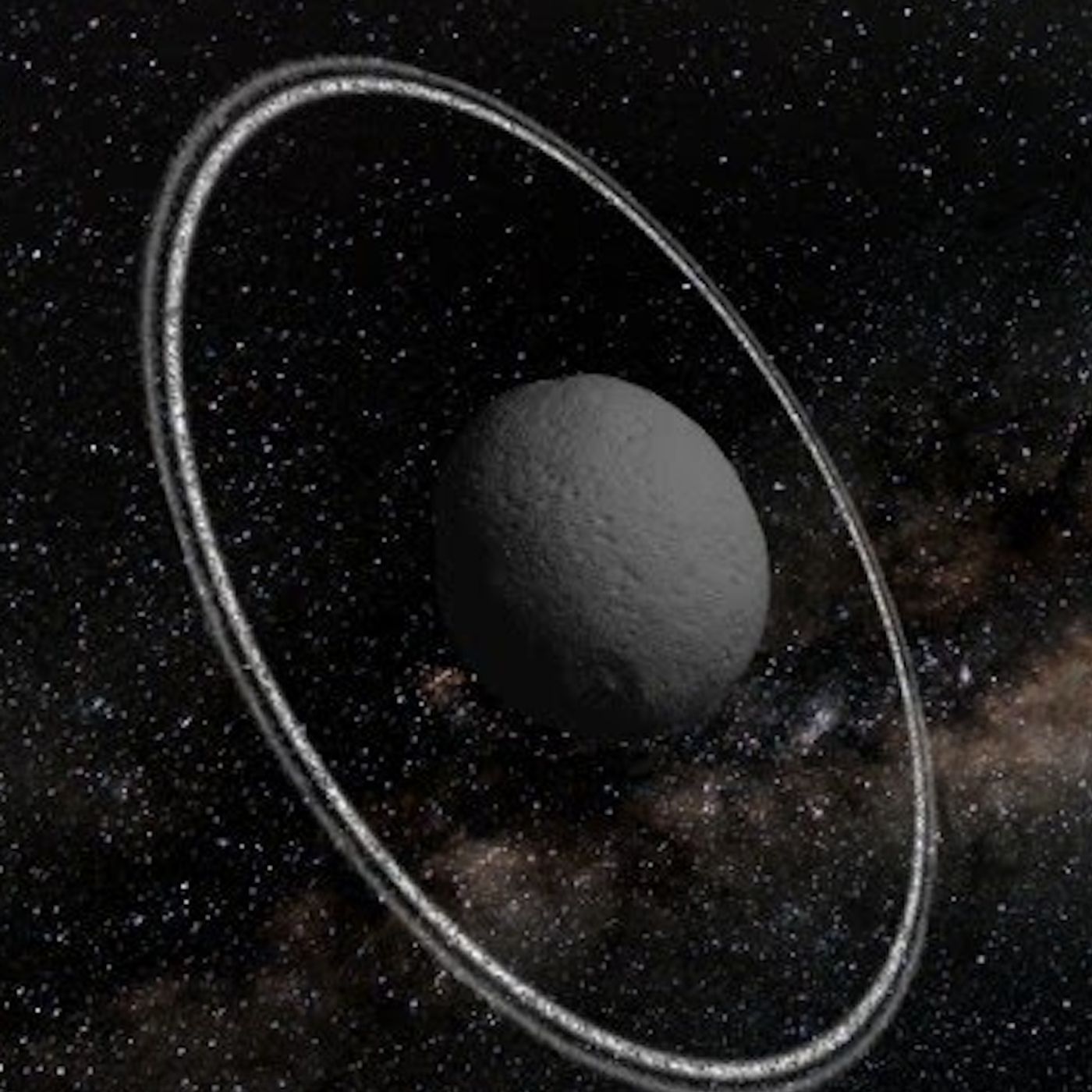 Travelers In The Night23E-35-An Asteroid With A RingPrograms 31-60Travelers in The NightProgramsContents 1 31-A Gentle Breakup Of An Asteroid 2 32-A Peanut Shaped Asteroid with a Moon 3 33-A Busy Month in the Earth's Neighborhood 4 34- Number 5000 5 35-An Asteroid With A Ring 6 36- Earth and Moon as Evening Stars 7 37-Slow Movers At The Edge of Our Solar System 8 38-The Big Ones 9 39-Dash Cams and the Anatomy of An Airburst 10 40-Itokawa A Strange Space Peanut 11 41-Navigating The Night Sky 12 42-Astronauts Reveal Sobering Data On Asteroid Impacts 13 43-First Earth-Size Planet...2019-05-0702 min
Travelers In The Night23E-35-An Asteroid With A RingPrograms 31-60Travelers in The NightProgramsContents 1 31-A Gentle Breakup Of An Asteroid 2 32-A Peanut Shaped Asteroid with a Moon 3 33-A Busy Month in the Earth's Neighborhood 4 34- Number 5000 5 35-An Asteroid With A Ring 6 36- Earth and Moon as Evening Stars 7 37-Slow Movers At The Edge of Our Solar System 8 38-The Big Ones 9 39-Dash Cams and the Anatomy of An Airburst 10 40-Itokawa A Strange Space Peanut 11 41-Navigating The Night Sky 12 42-Astronauts Reveal Sobering Data On Asteroid Impacts 13 43-First Earth-Size Planet...2019-05-0702 min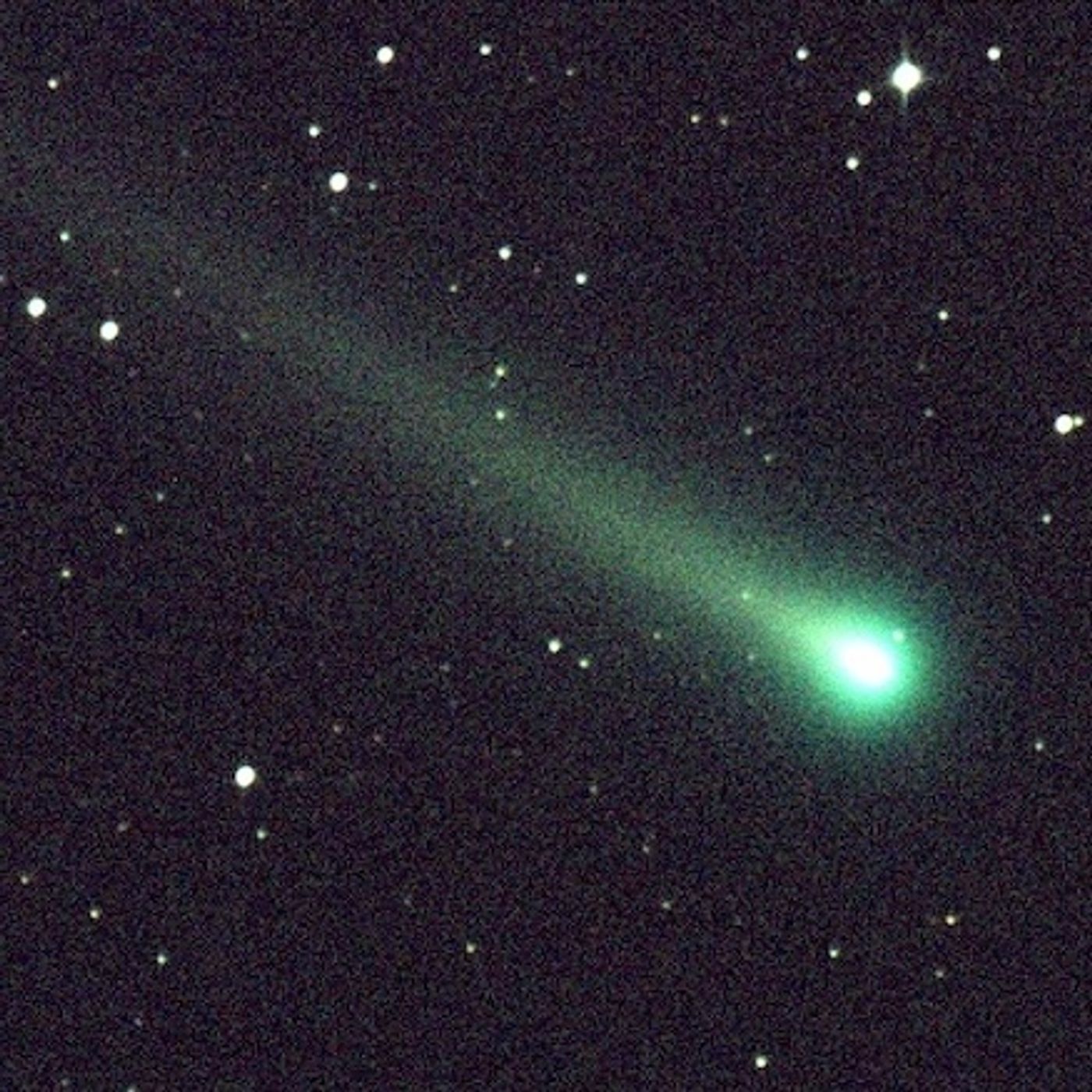 Travelers In The Night450-Saint Patrick's Day CometOn Saint Patrick's Day I discovered a comet which I share with my wife Annie Grauer.2018-05-0102 min
Travelers In The Night450-Saint Patrick's Day CometOn Saint Patrick's Day I discovered a comet which I share with my wife Annie Grauer.2018-05-0102 min